Border Patrol
Top Borders and Rosettes on Martin Guitars
Style 45
From 1904 until the restriction of materials and a reduced skilled labor force caused it's end with World War II, the Style 45 was the most adorned model in the Martin catalog, with strips of abalone bordering the top, surrounding the fretboard extension, and in the center ring of the rosette, as well as bordering the instrument's back and sides. The Style 45 was reintroduced with the revived interest in the "folk guitar" in the 1960's.
1919 Martin 0-45
While Martin transitioned from red spruce as a top wood to Sitka spruce in 1945, at the end of World War II, this guitar is one of a small number of Martins built in 1919, at the end of World War I, with a top of Sitka spruce, which had come into prominence as "aircraft spruce" or "airplane spruce" with the advent of the First World War.
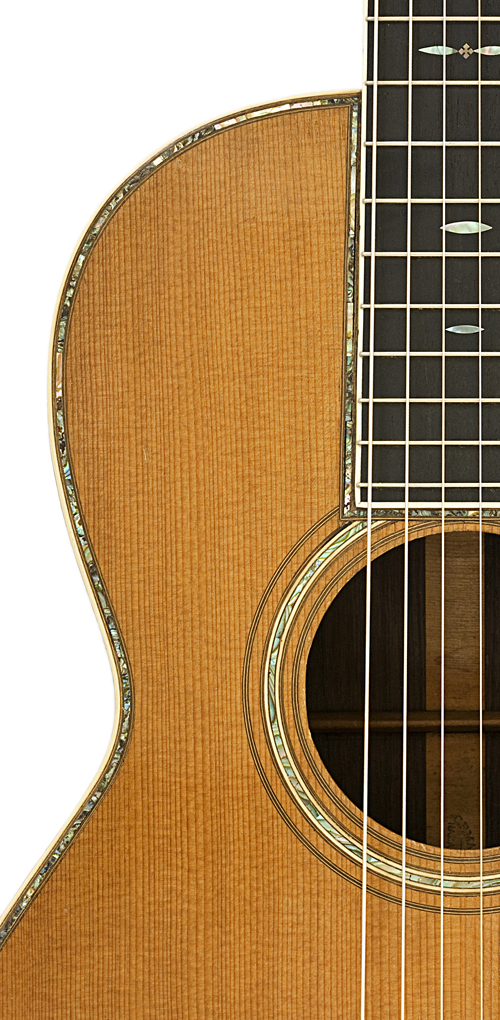
In 1930, Martin introduced a DeLuxe variation of the "Orchestra Model" Style 45, with even greater adornment, including a pearl inlaid pickguard and bridge and gold plated engraved tuners with pearl buttons. After producing roughly a dozen examples, however, the model was discontinued within the year as parts became difficult to procure.
1930 Martin OM-45 DeLuxe
#44070
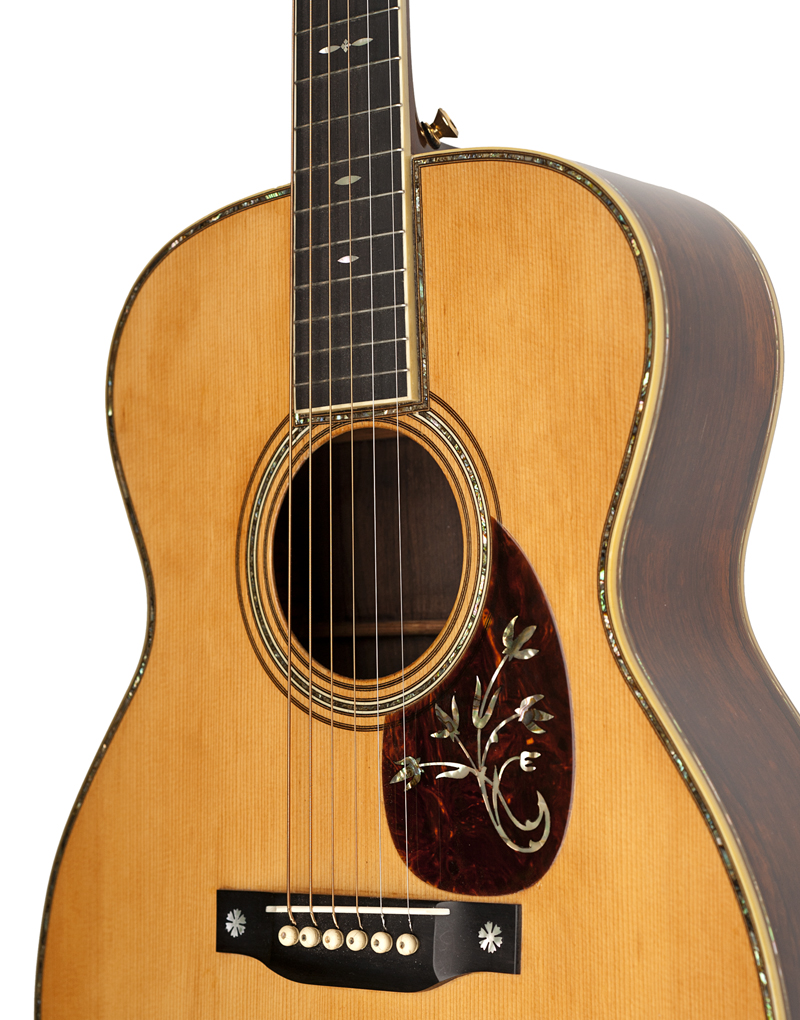
Before 1902, The Style 42, which lacked the inlaid border on the back and sides of the Style 45, was the fanciest cataloged Martin.
The inlaid back and sides that distinguish the Style 45 first appeared in a "Special" version of a Style 42, #9372, which also featured an elaborate vine pattern on the fretboard and a fancy inlaid pickguard of the type seen on Martin's most elaborate mandolins, followed by #9488, the first "Style 45 prototype" that more closely resembles the Style 45 as it appeared with it's official introduction in 1904, with the "Snowflake" inlays on frets five, seven, nine, twelve, and fifteen.
1902 Martin 00-42S Style 45 Prototype
#9488
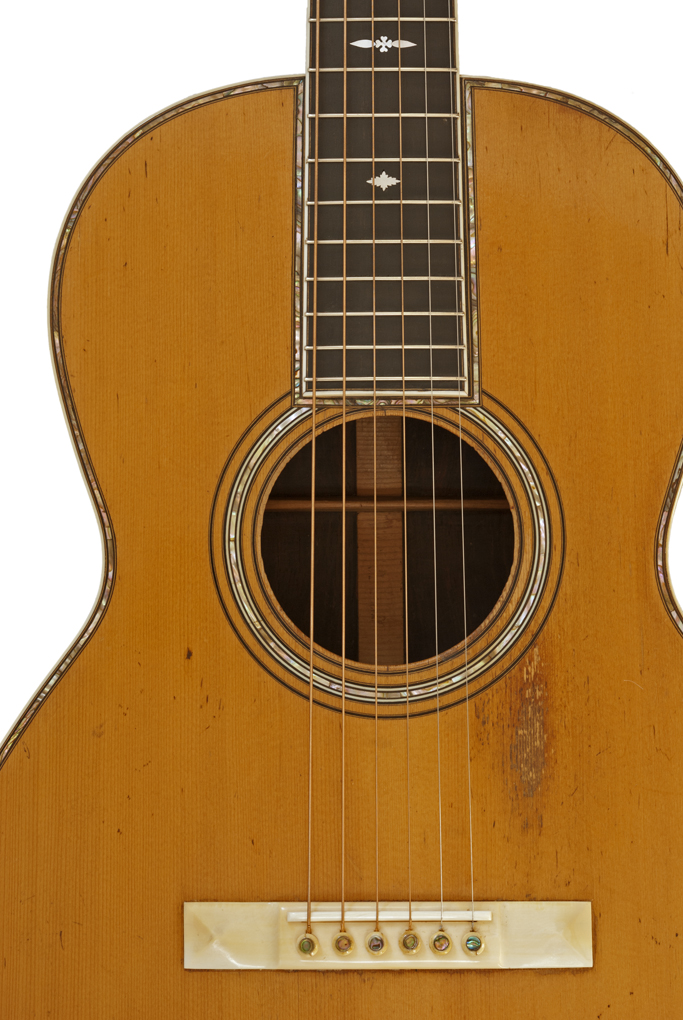
Style 42
Before 1896, no Martin guitar had inlays on the fingerboard.
1896 Martin 2-42
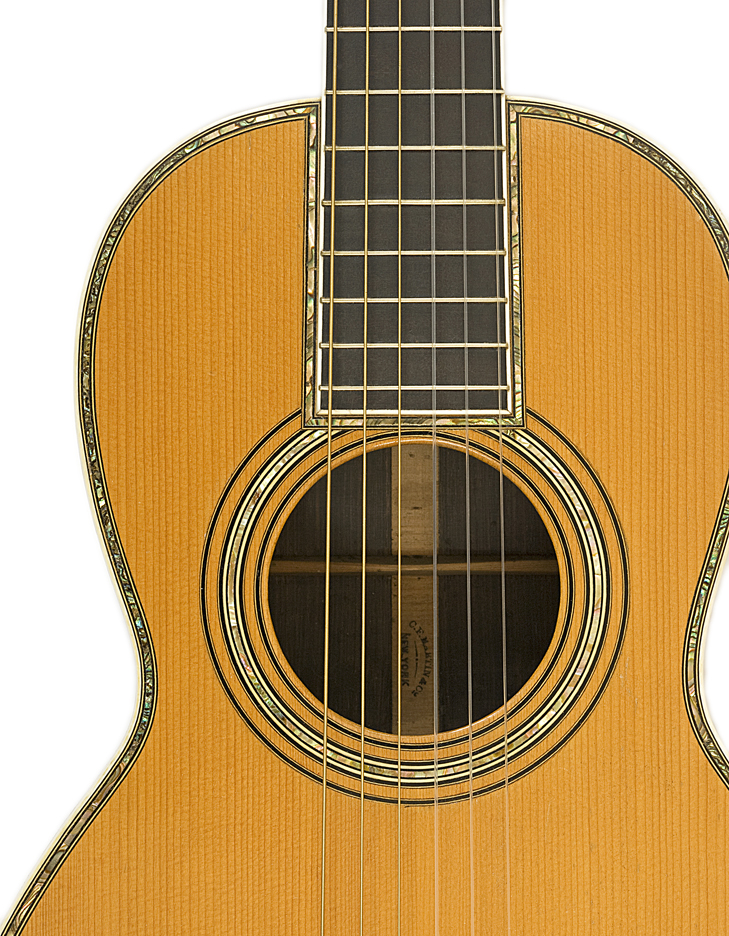
1894 Martin 0-42
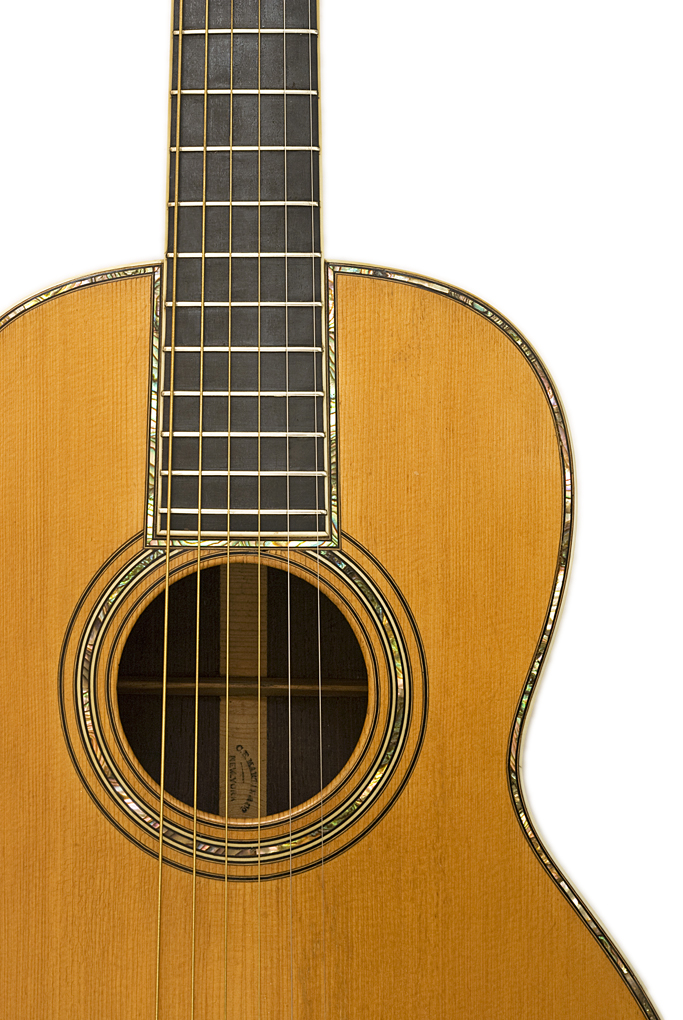
The Style 42 was introduced in the 000 size in 1918 with the production of two guitars, one of which, #13364, was ordered by the Ditson stores with the same distinctive fan bracing designed for playing with steel strings in the Hawaiian style that was seen on the early Ditson Dreadnaught.
#13364 also sported an original cloud shaped pickguard inlaid into the top.
1918 Martin 000-42
#13364
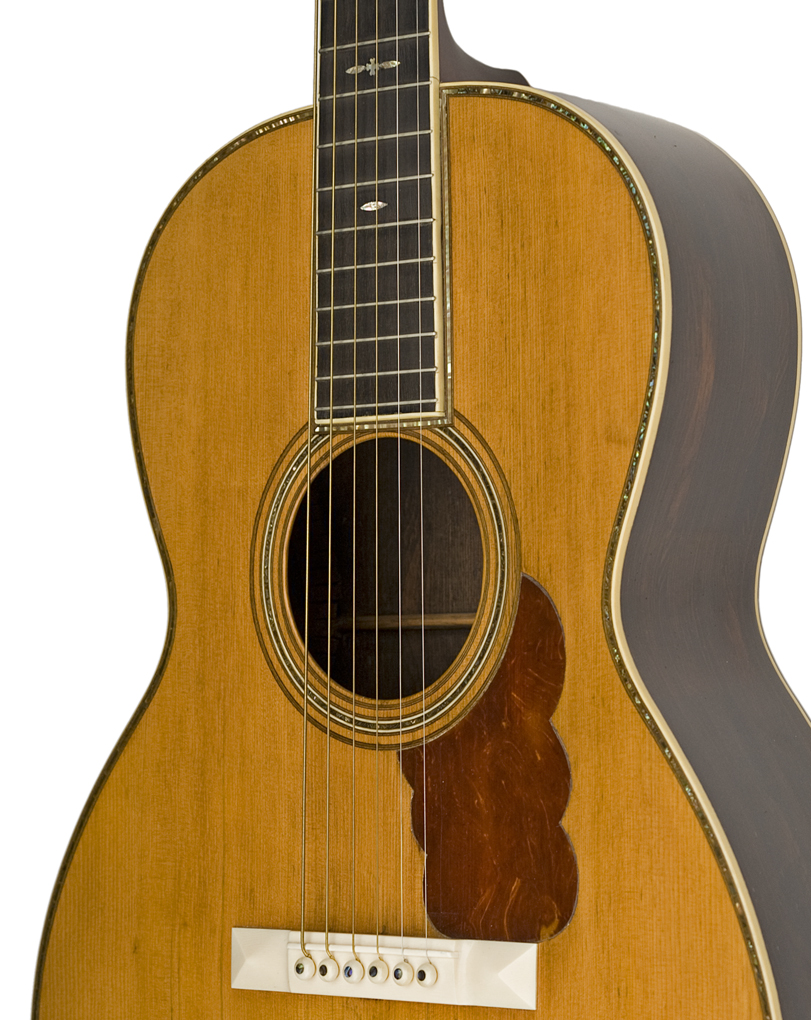
The Style 40
The Style 40 was an early design, very similar to the pearl bordered style 42, but for a lack of pearl inlay surrounding the fretboard extension, and originally offered as a size 2.
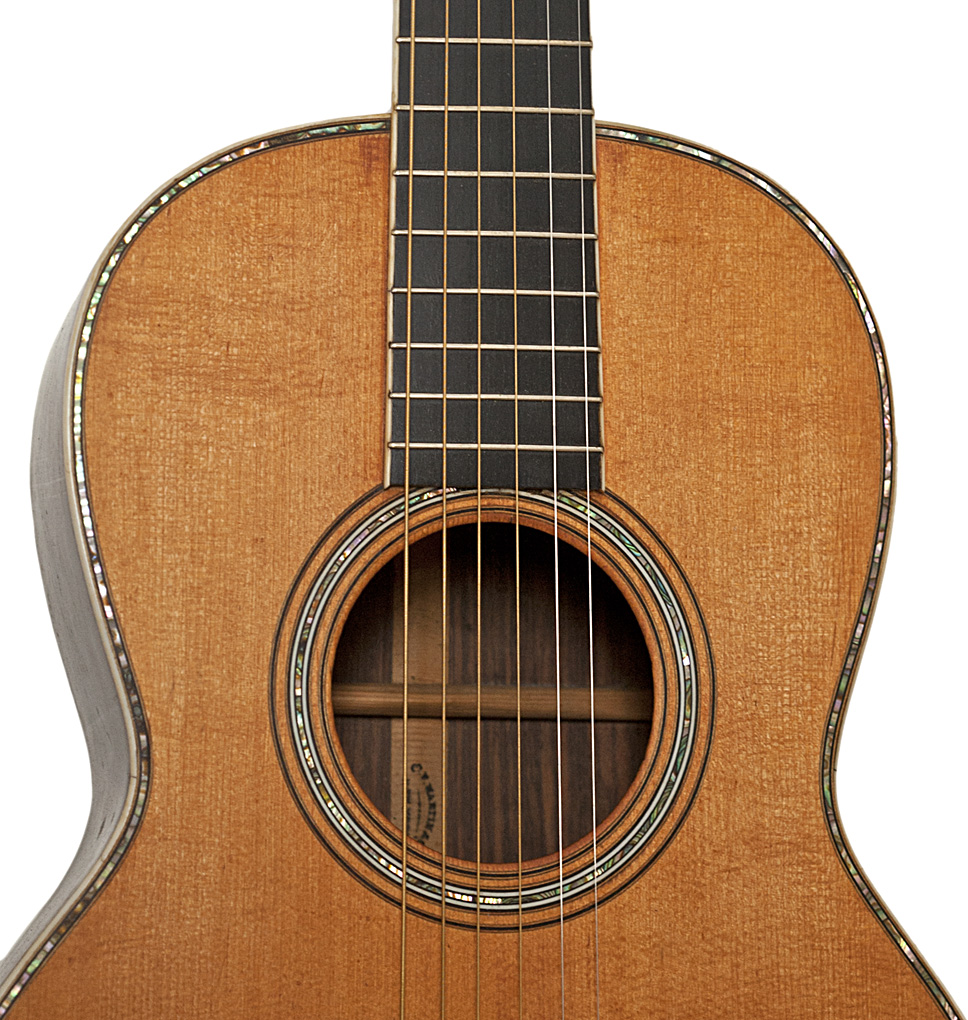
This combination of appointments on the top was revived for the Style E guitar made for William Foden in 1913, but his guitars had full inlay surrounding the back and sides, similar to a 45.
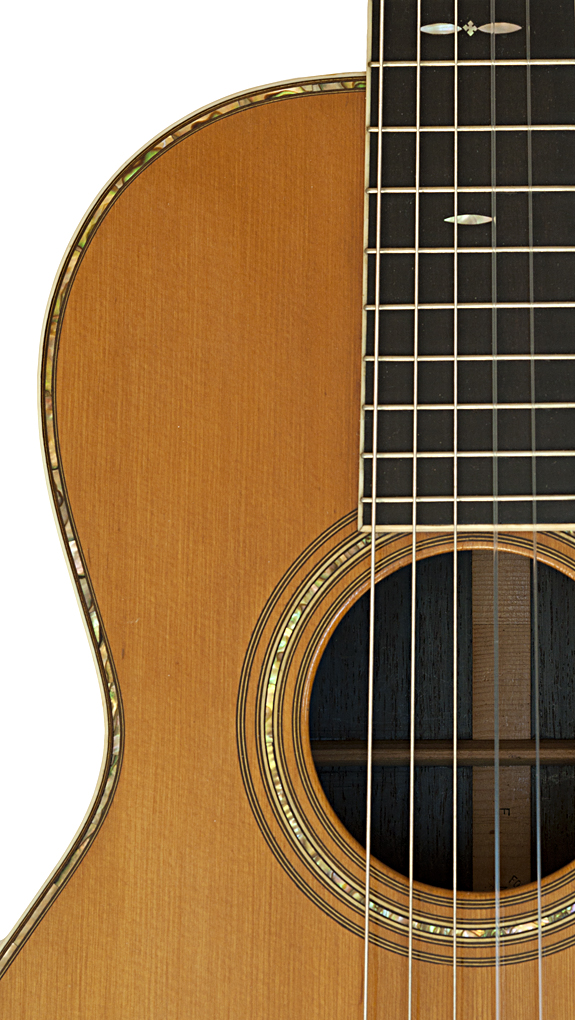
The style 40 was revived again for the Hawaiian 00-40H, which was produced from 1928 to 1939.
1934 Martin 00-40H
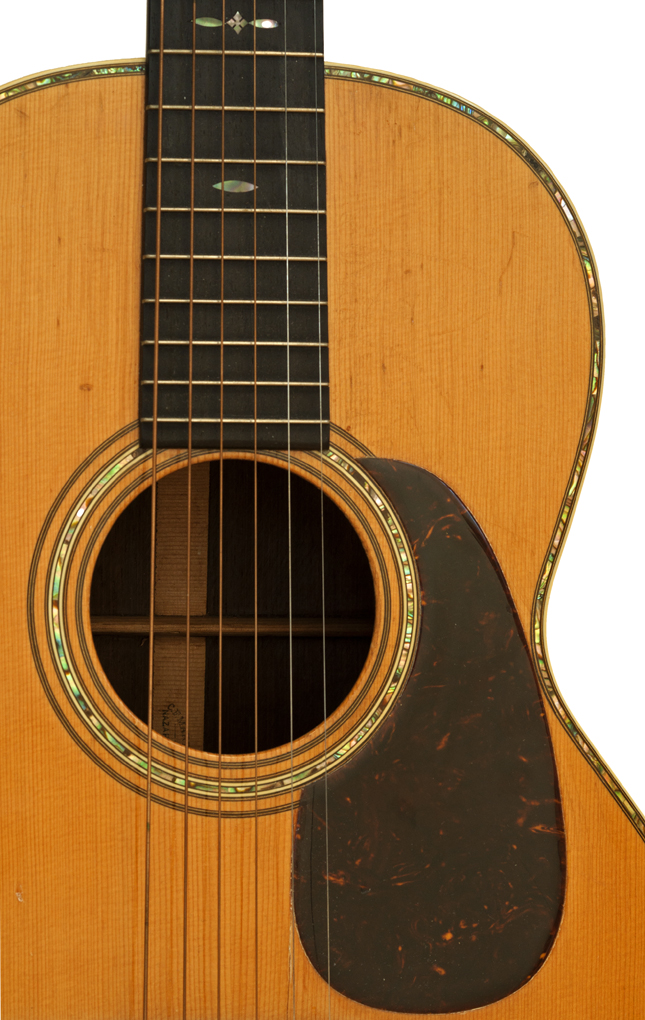
The Style 34, one of Martin's most attractive and interesting early models, featured a pearl rosette combined with a top border of wood marquetry with patterns which varied over the years.
Style 34
This "Z" pattern is common on Style 34 in the 0 Size which were made until the teens.
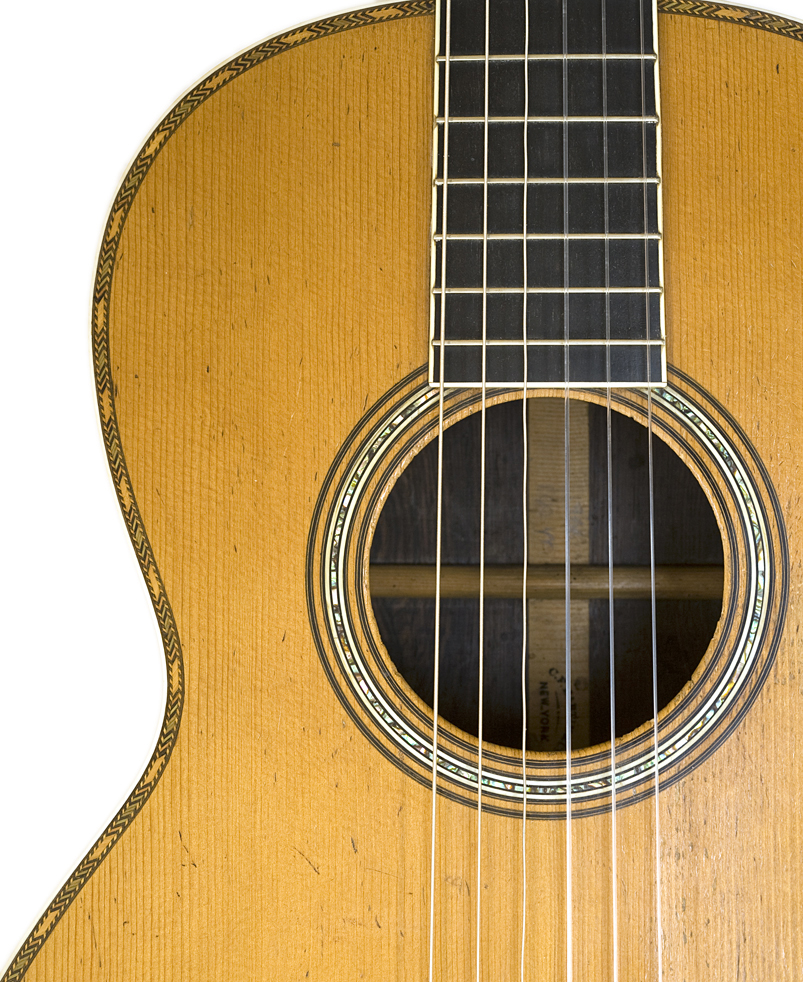
The colored herringbone is more common on early Style 34 Martins in Size 2.
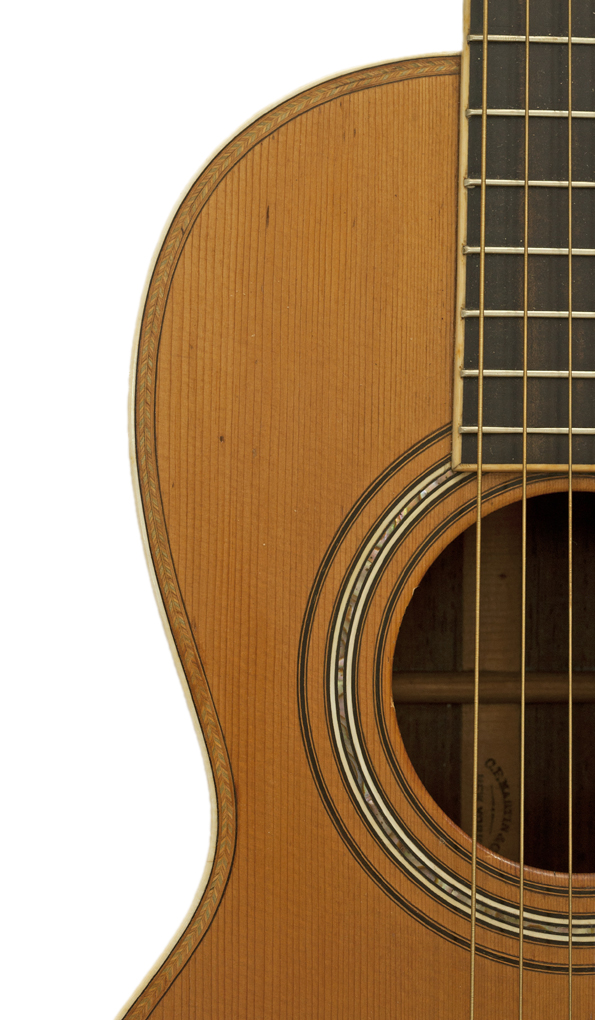
Style 27 and 30
The Style 27 and 30 were similar to a style 34, with pearl rosettes and wood marquetry borders, but with the ivory pyramid bridge of the Style 34 replaced by an ebony pyramid bridge.
Here you can see a Style 27 with a Style 30, which appear to be nearly identical. In fact, in some years, the only difference between the Style 27 and Style 30 were the tuners, which were brass on the Style 27, and silver plated on the Style 30. The main distinction was that the 2-27 was a size 2 guitar costing $27, while the 0-30 was a slightly larger guitar costing $30.
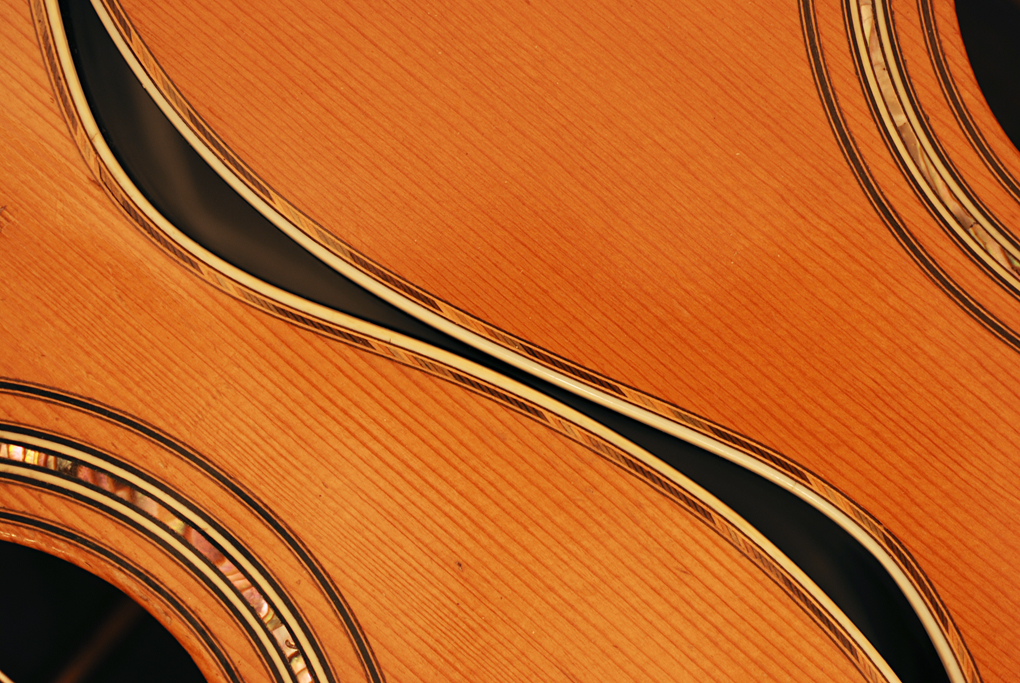
Today we see a Martin 00-28 and see two distinct set of numbers which are unrelated, and which can be mixed and matched as from a Chinese menu, the 00 refering to the size of the guitar, and the 28 referring to the quality. The higher the quality number, the higher the quality of the appointments on the guitar.
When the numbering system was established in the early 1850's, Martin offered different size guitars with different distinct levels of appointments. Martin offered a size 2, for instance, as both a 2-17, a simple size 2 guitar costing $17, and a 2-27, a size 2 guitar costing $27. A size 1 was offerred as a $28 guitar with lesser appointments than the 27, having no pearl on the rosette. But the price was $1 higher because it was offered in a larger size. An 0 size guitar was offered as a $34 guitar with pearl rosette and an ivory bridge. A pearl bordered guitar was offered as a size 2 1/2 for $42, while a size 2 version was offered without pearl bordering the fretboard extension for $40. Eventually the prices rose with inflation, but the numbers stuck and remained the same. By this time the Style 42 had come to represent both the smaller 2 1/2 - 42 as well as the larger 0-42, and the Style 34 had come to represent both the 2-34 and the larger 0-34.
The "Z" pattern was also common on the 0 Size Style 30 in a more colorful version in the early 20th Century.
1907 Martin 0-30
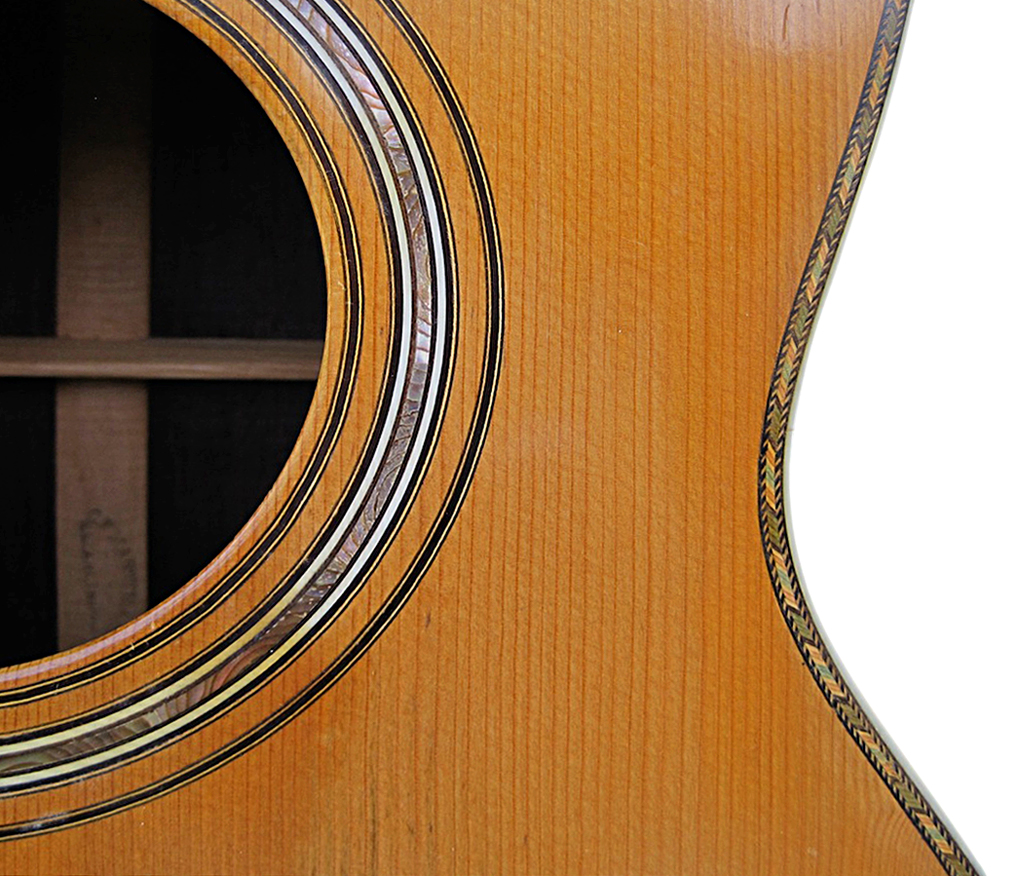
1893 Martin 2-27
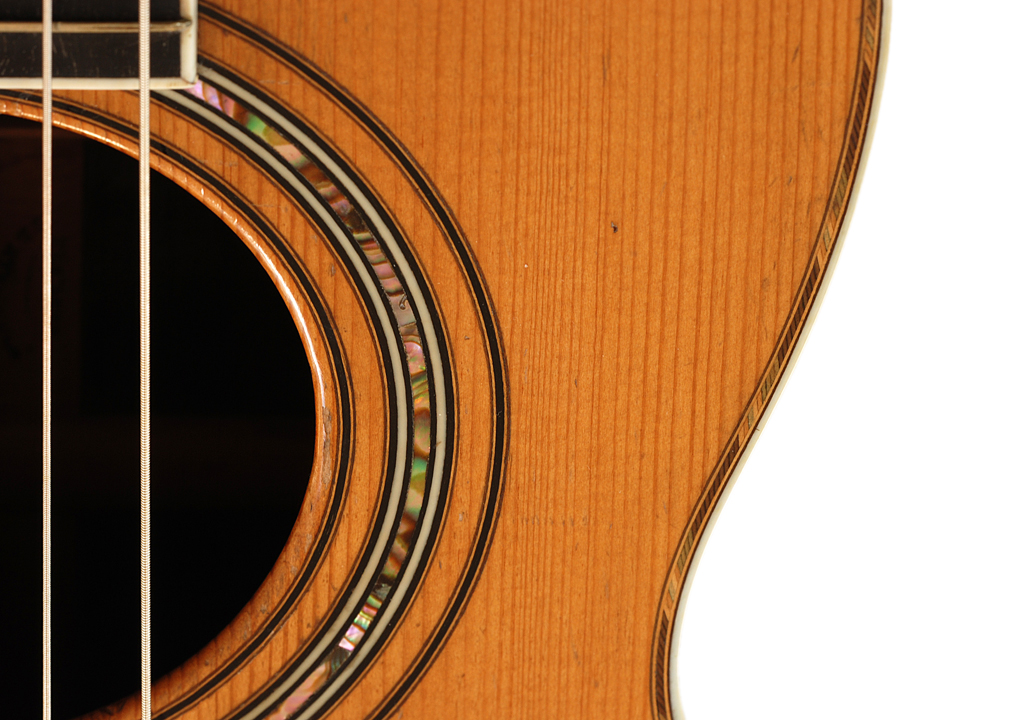
1870's Martin 2-27
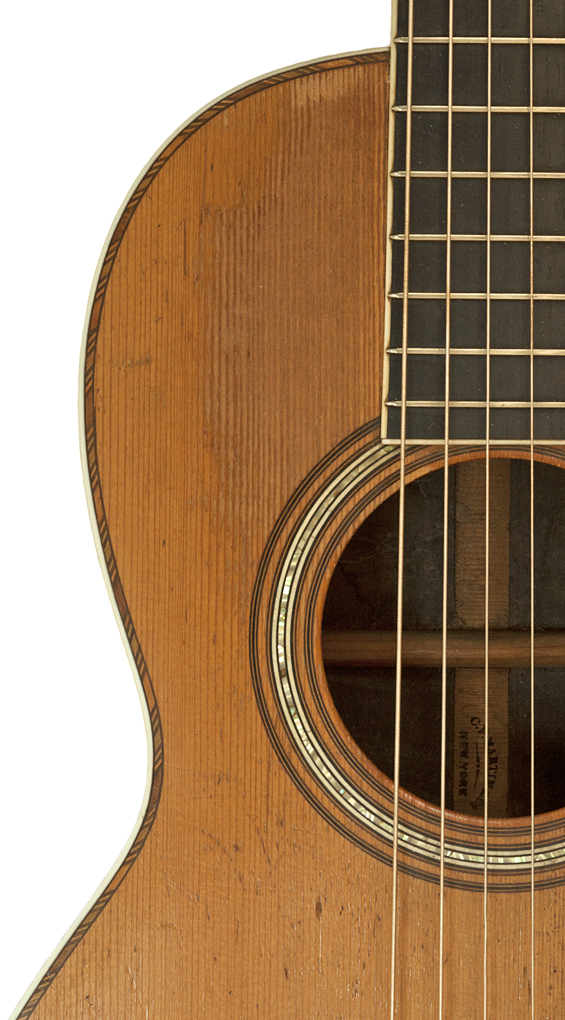
1860's Martin 2-27 with rosewood veneer spruce back
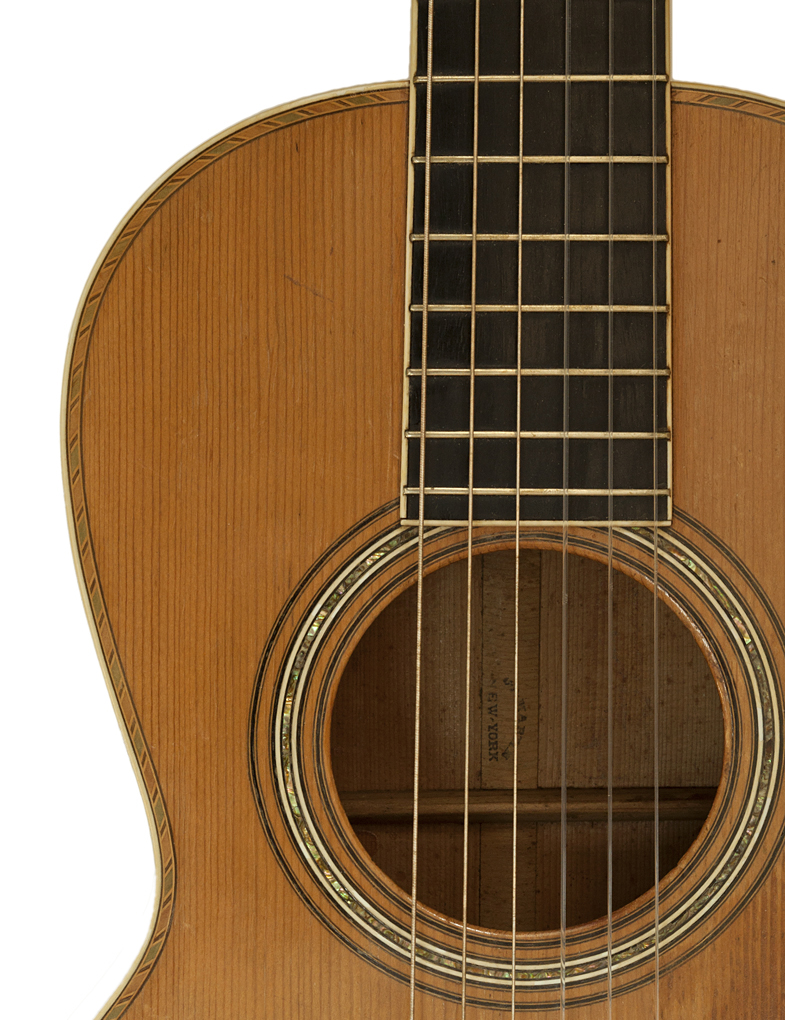
Style 28
The Style 28 can be recognized by a top border with a herringbone pattern which has become one of Martin's most recognized and enduring features.
1870's Martin 1-28
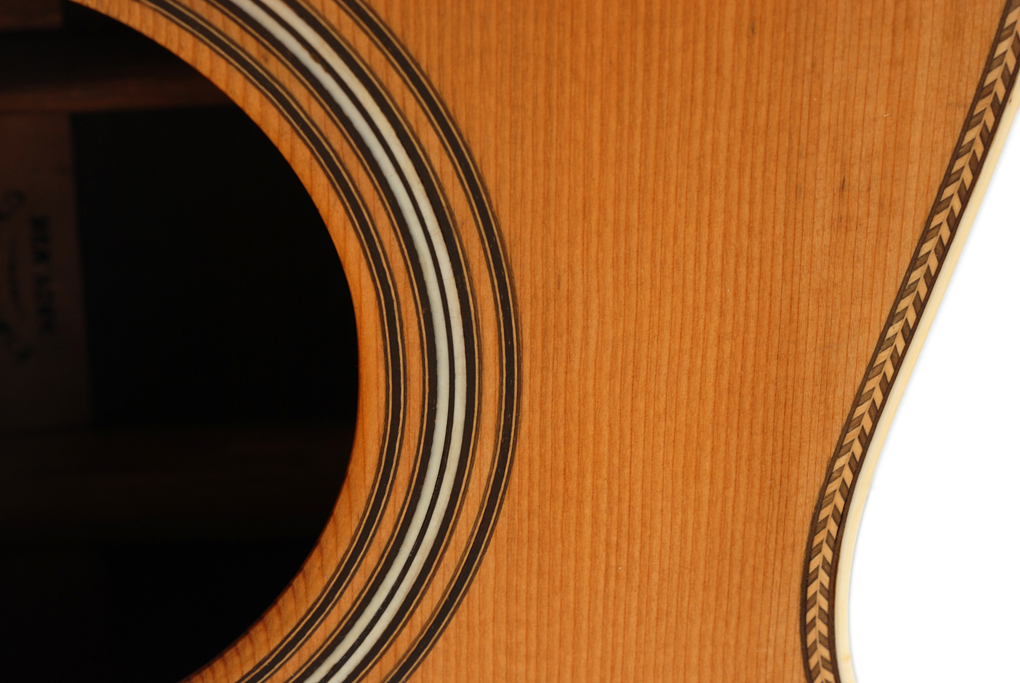
Style 26
The Style 26 is similar to a Style 26, but with a simpler top border, most often a "half herringbone", or "rope" pattern.
In the early years, all Martin guitars in Style 26 and above were bound with genuine elephant ivory.
In 1918, the ivory was replaced with grained white "Ivoroid" plastic.
1870's Martin 1-26
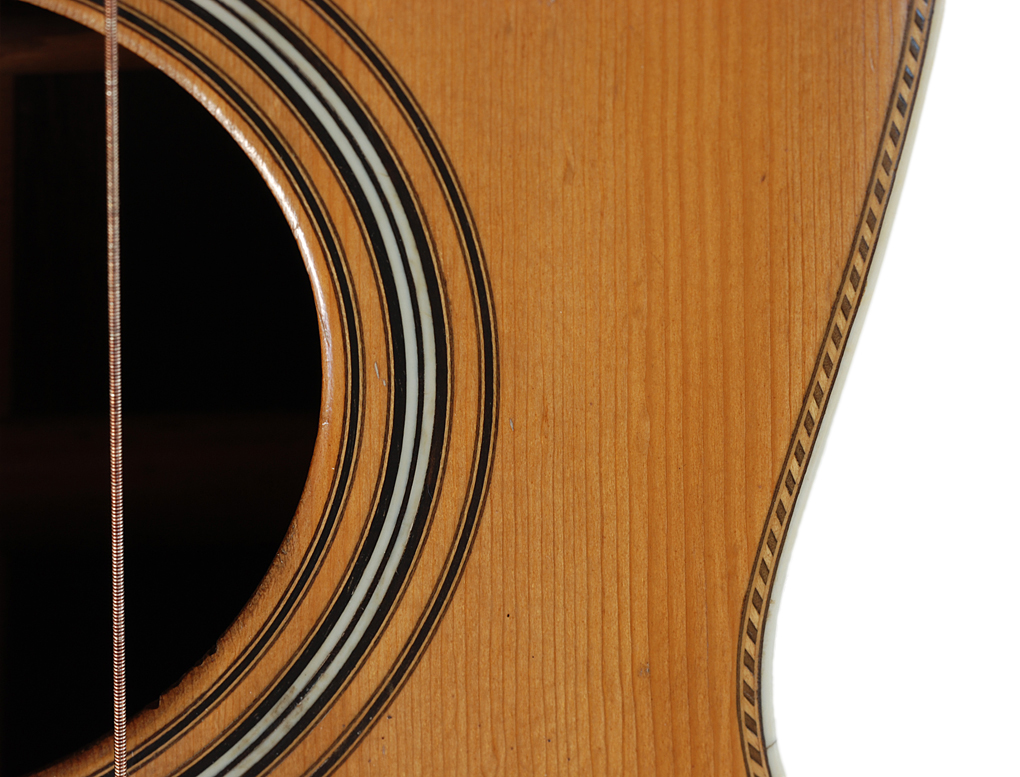
Style 35
The Style 35 is presented here out of sequence to be easier to comprehend, as the guitar itself was designed out of sequence. While higher numbers typically signify inherently higher quality instruments, the D-35 was conceived as a compromise to the D-28.
In the mid 1960's, with an embargo on rosewood from Brazil, Martin's supply of Brazilian rosewood was dwindling, especially boards of sufficient width to create 2 piece backs for the popular D-28. As a stopgap measure, Martin replaced the 2 piece Brazilian backs of the D-28 with 3 piece backs, utilizing narrower boards that were intended for sides. Rather than sell a "compromised" guitar, Martin added fingerboard binding and marketed these guitars as an upscale alternative to the D-28. The 3 piece backs gave these guitars a mellower sound, and at a time when anything smaller than a dreadnaught was thought to be inadequate, even for solo fingerpicking, they became the "go-to" guitar of the popular singer-songwriters of the 1960's and '70's.
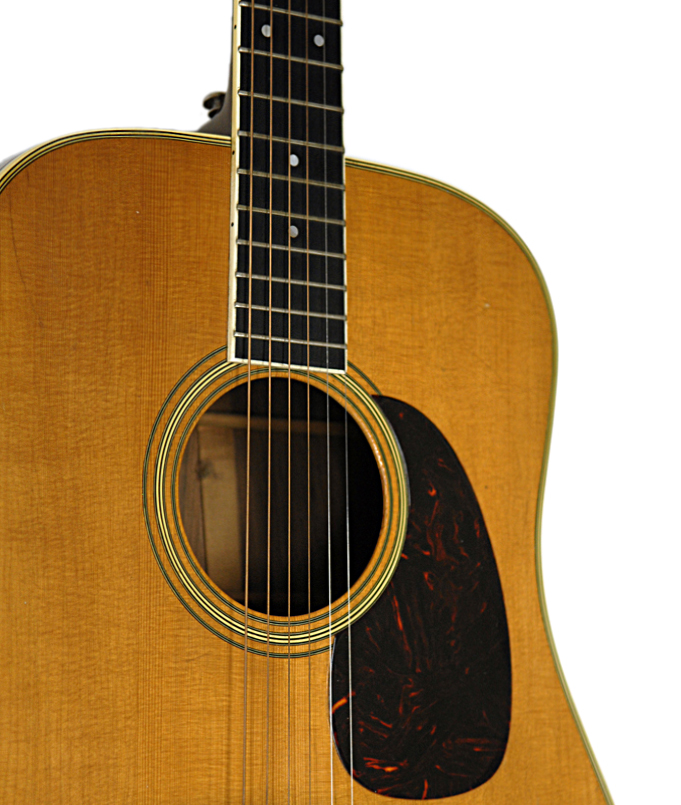
Style 24
With the exception of the distinctive herringbone and "half herringbone" rope pattern, when Martin specified marquetry, the choice of individual marquetry design could vary from one guitar to the next.
So the Style 24 is one of Martin's more interesting and varied models, with more opportunities for marquetry of various designs, with marquetry on both the rosette and top border, as well as "side filets", narrow strips of light colored wood on the sides, bordering the top and back binding.
c. 1850 Martin 3-24
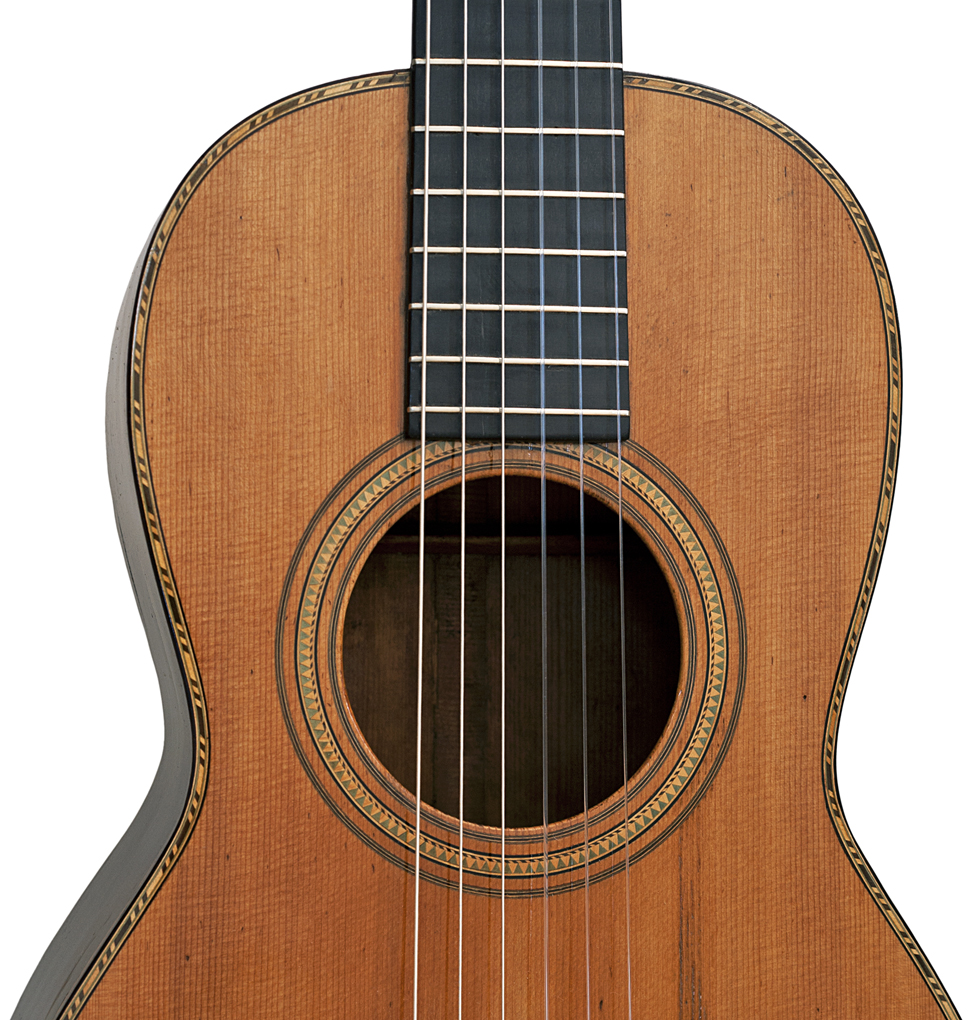
1850's Martin 2 1/2 - 24 with Spanish neck and rosewood veneer spruce back.
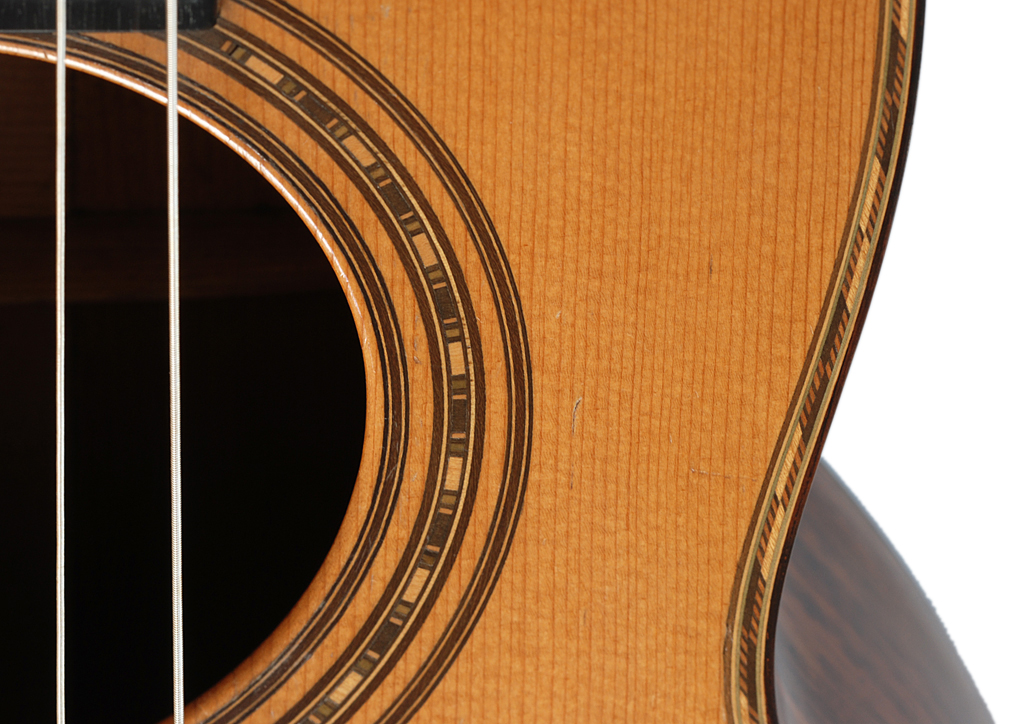
1850's Martin 2 1/2 - 24 with ebonized neck and rosewood veneer spruce back.
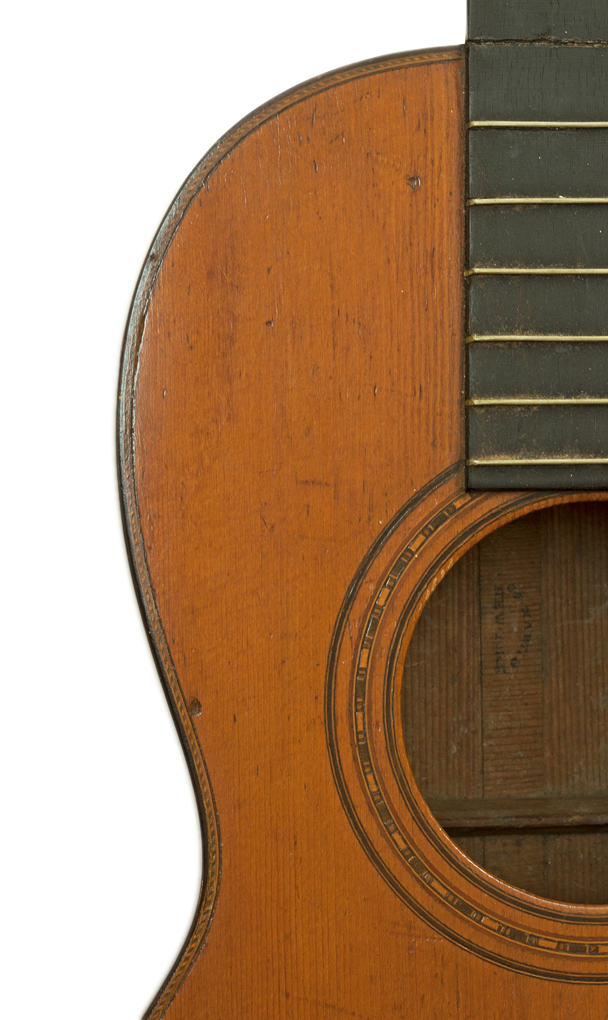
1888 Martin 2 1/2 - 24
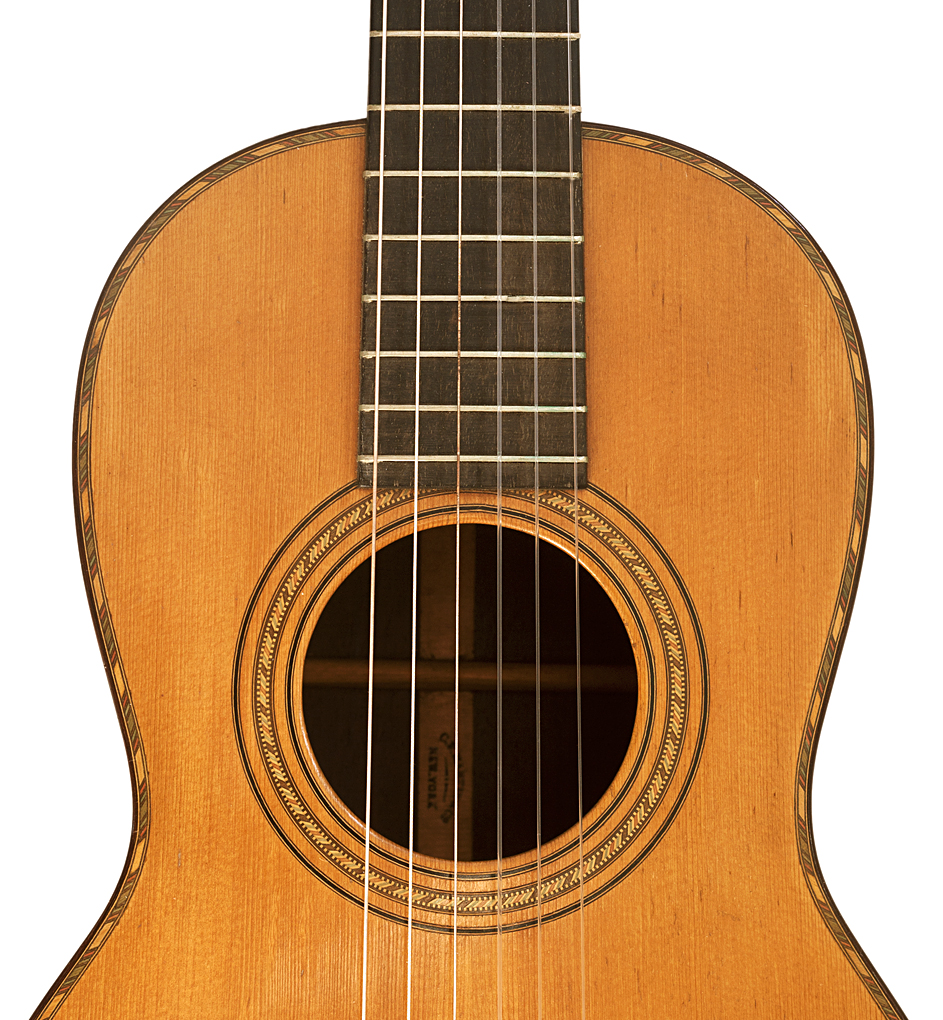
1892 Martin 2 - 24
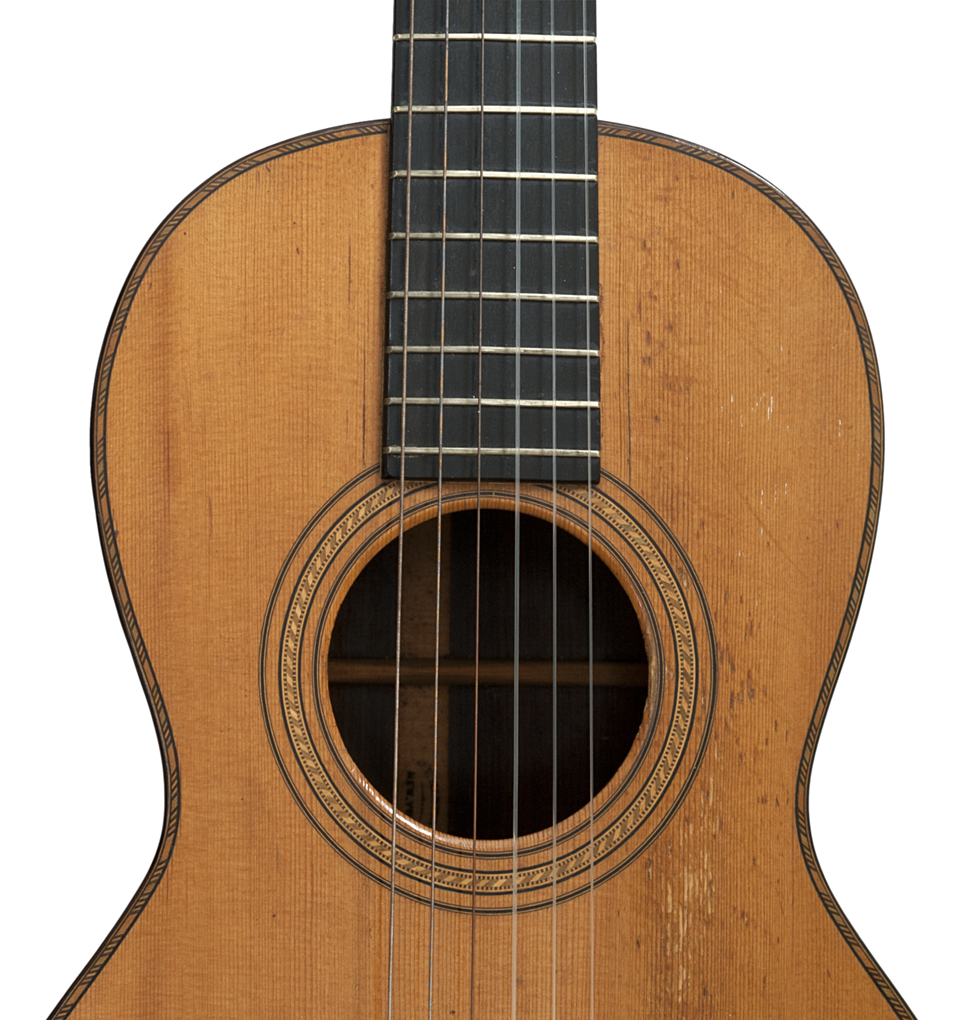
Style 23
The Style 23 is another interesting model, similar to the Style 24, with side filets, but with a top border of simple strips of wood replacing the fancier marquetry of the Style 24.
1855 Martin 2-23
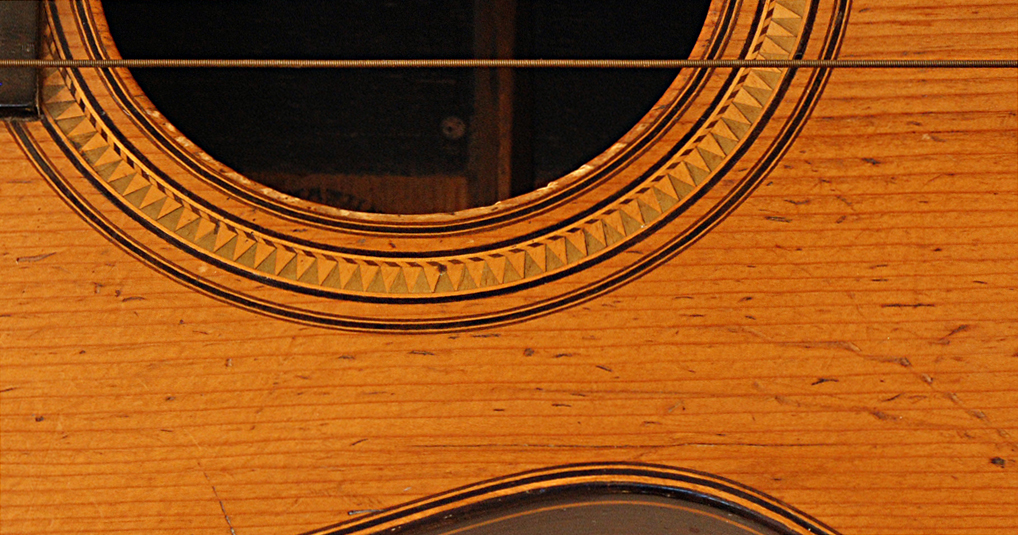
Style 22
Style 21
The Style 21 is distinguished by a herringbone pattern on the rosette as well as a herringbone back strip.
1897 Martin 1-21
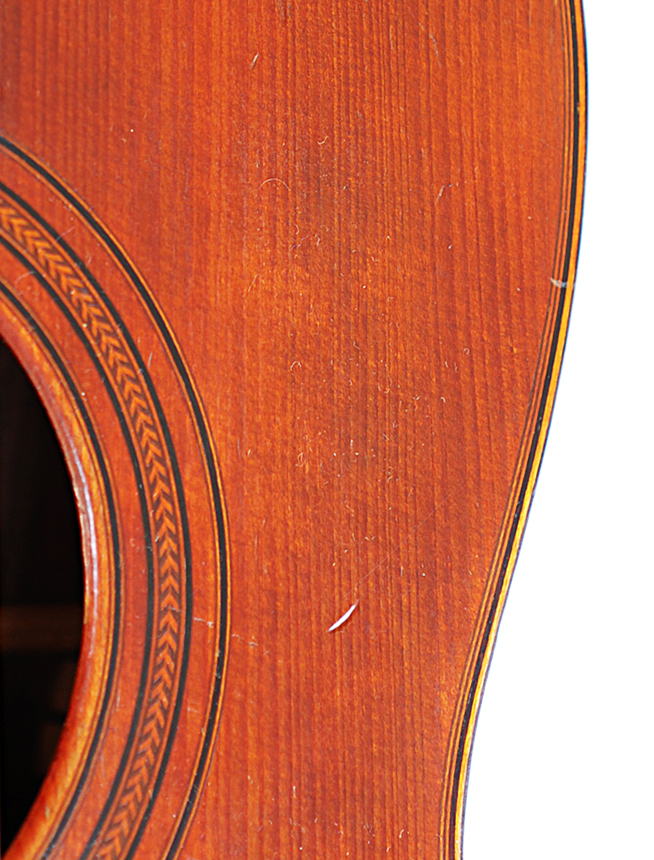
Style 20
The Style 20 typically has a multicolored herringbone rosette and back strip, or monochrome herringbone with green border.
1850's Martin 2-22
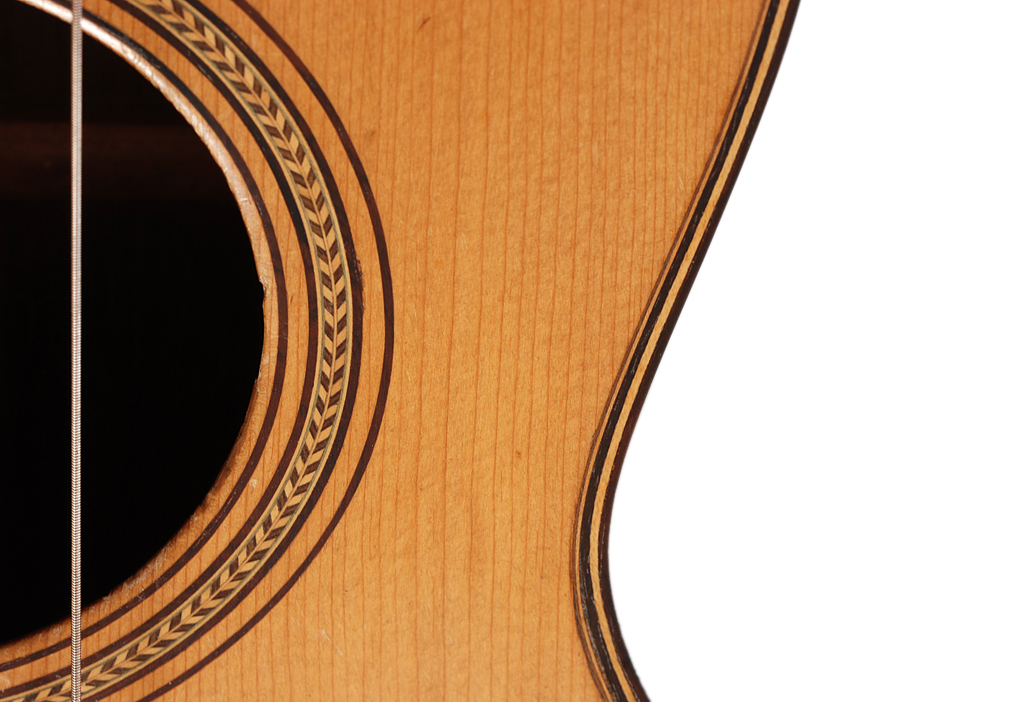
1860's Martin Style 2 1/2 - 20
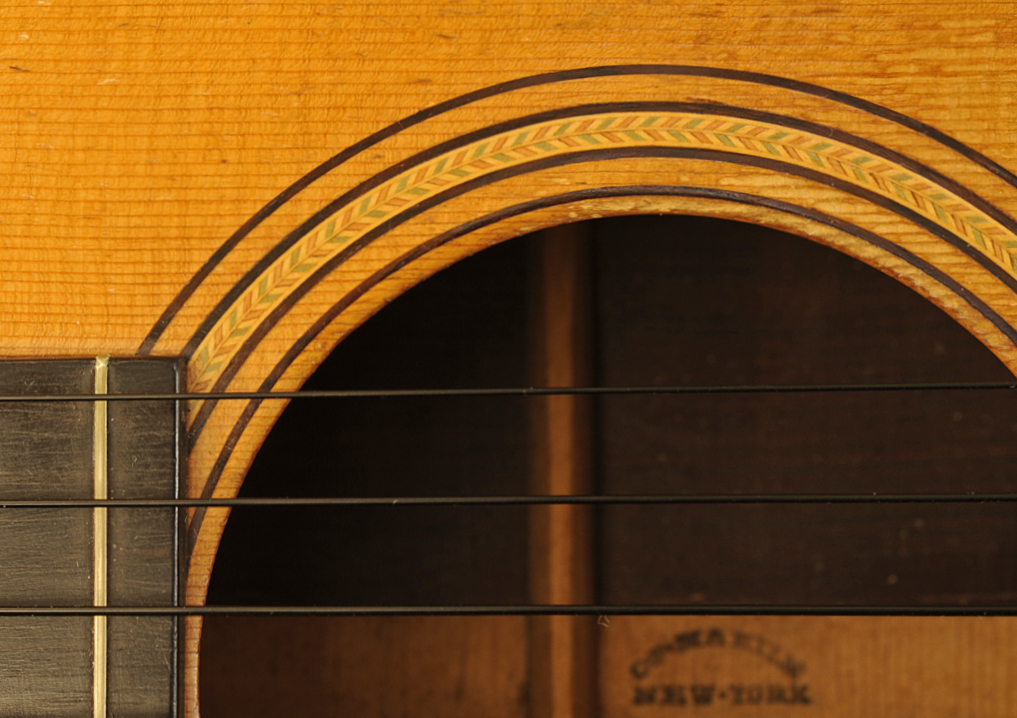
Style 18
The Style 18 was one of Martin's simpler and most enduring models, with spruce top, rosewood back and sides, straight lines on the top border, and a simple rosette.
The Style 18 adopted a mahogany back and sides in 1917.
1943 Martin 00-18
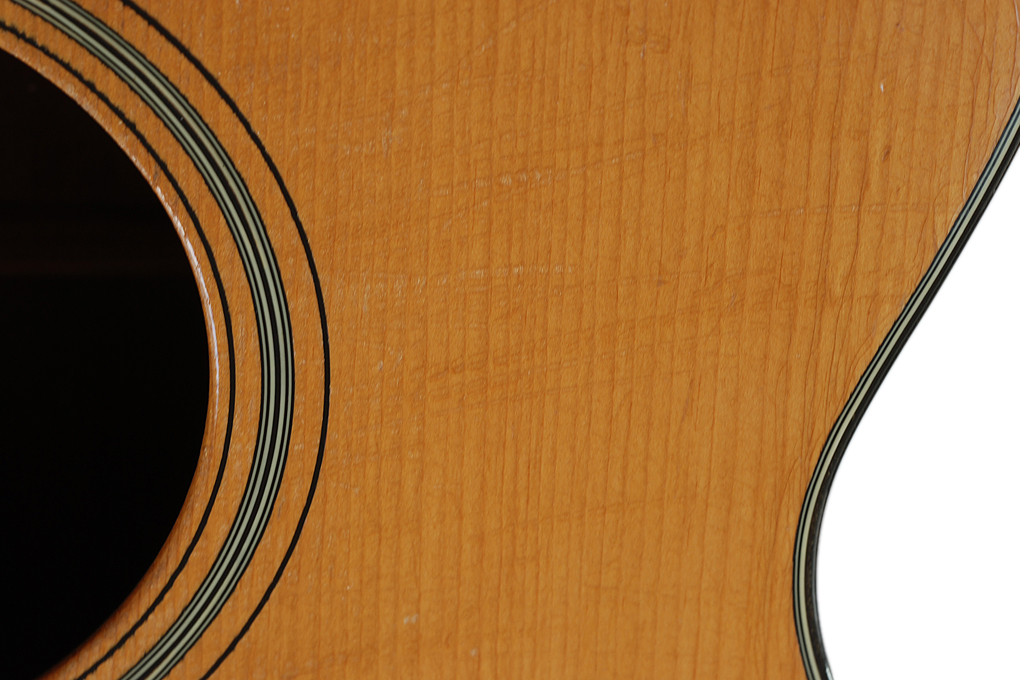
The Style 18 binding made several changes.
pre-1932 - Rosewood
1932 - black "Fiberloid" plastic (mid 1931 on archtops)
1936 - "tortoise Fiberloid" - 000 and smaller
1939 - "tortoise Fiberloid" - Dreadnaught
The first example of a black binding I found was on my prototype C-1, from the very first batch of Martin archtops ever made, in June, 1931.
So apparently the black bindings were introduced on the archtops in mid-1931, and migrated to the flattops either later in 1931 or in early 1932.
Here's what I found for the first change:
April 9, 1931 . . . . . . 0-18T . . . . . . . . . 46535 - wood
September 3, 1931 . . 000-18 . . . . . . . . 48215 - wood
June 17, 1931 . . . . . M Ward 0-17S . 47292 - wood
June 20, 1931 . . . . . Prototype C-1 . . . 47368 - black
July 8, 1931 . . . . . . .M Ward 0-17S . 47531 - wood
April 25, 1932 . . . . . 0-18 Model 32 . . 50820 - black
(Can anyone help pin down serial numbers further for this and the other changes?)
Style 18 "model 32"
The first 14 fret 0-18 was sold as a "model 32" with a standard shaded finish.
1932 0-18 "model 32"
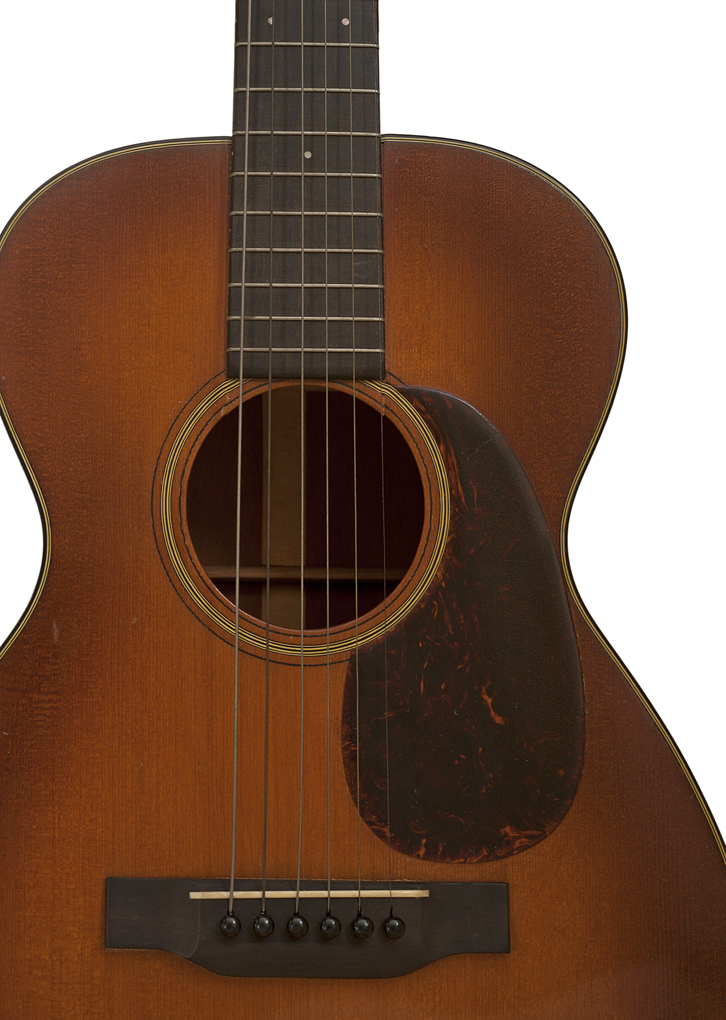
Style 17
The earliest Style 17, with spruce top and rosewood back and sides, was quite similar to the Style 18, but one dollar less expensive due to the smaller size 2 1/2.
1893 Martin 2 1/5 -17
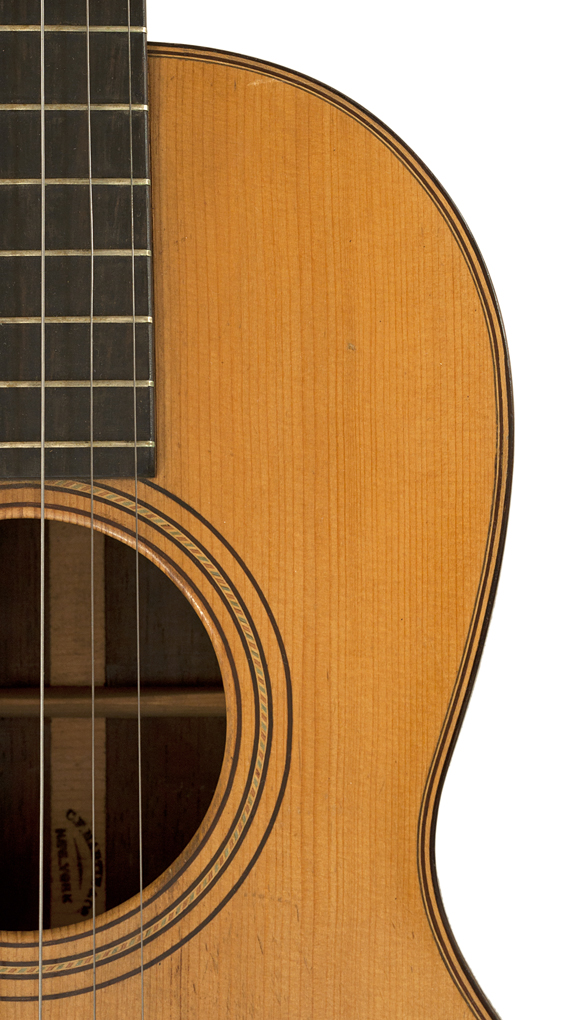
The Style 17, with a rosewood back and sides, was discontinued in 1898, then reintroduced with a mahogany back and sides from 1906 to 1918
In 1922, the Style 17 was revived as an all-mahogany guitar with the introduction of the 2 1/2 - 17.
An all-mahogany 0-17 was added in 1929, and a 00-17 was added in 1930.
1936 Martin 0-17
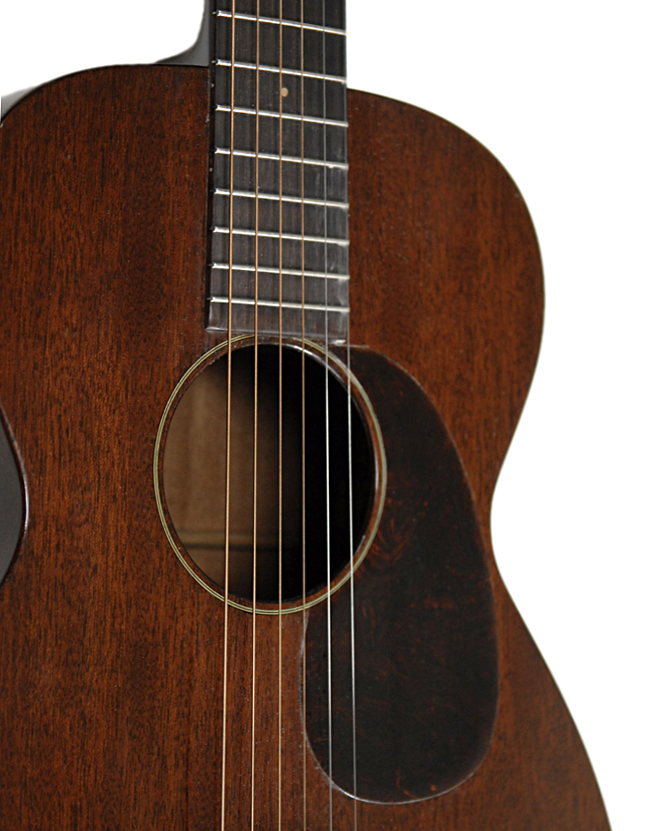
1943 Martin 00-17
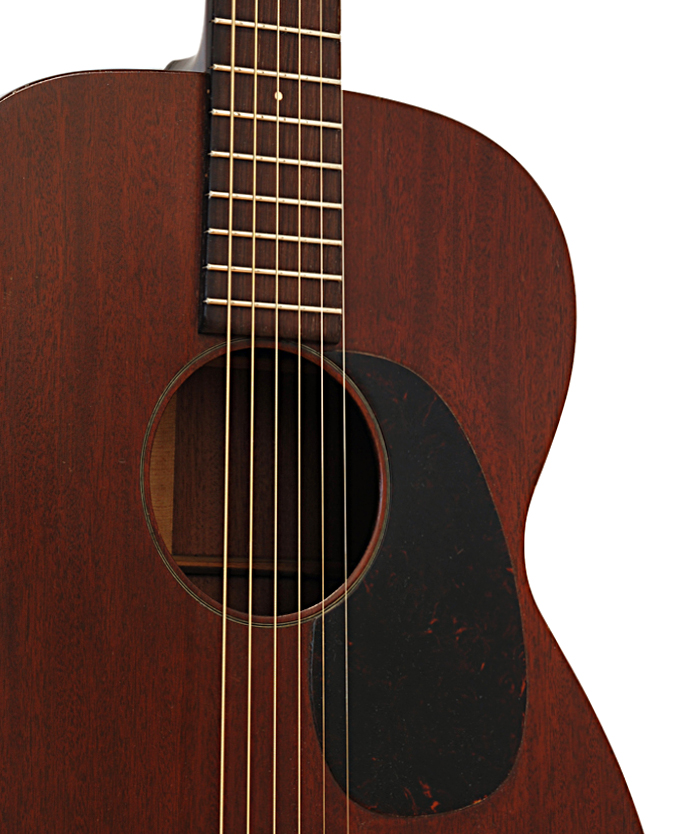
These Style 2-17 guitars illustrate the difference in trim through the years.
This example, one of the first two
1922 Martin Style 2-17
Serial number 16879
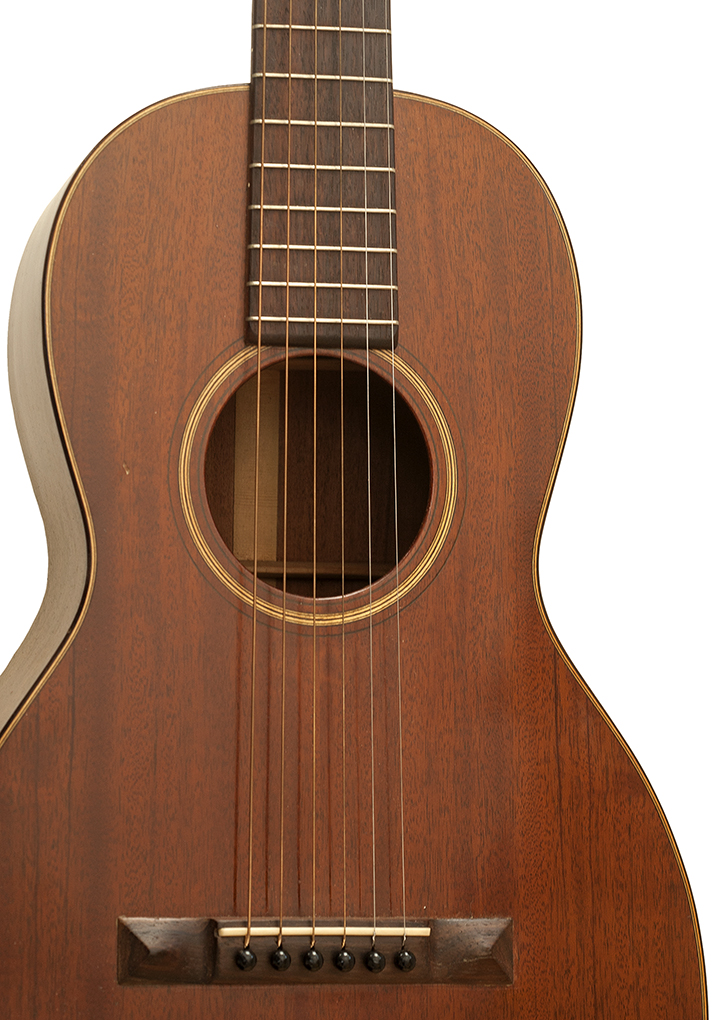
By 1924, Martin the design had changed with a distinctive new
1924 Martin "Wolverine" Style 2-17
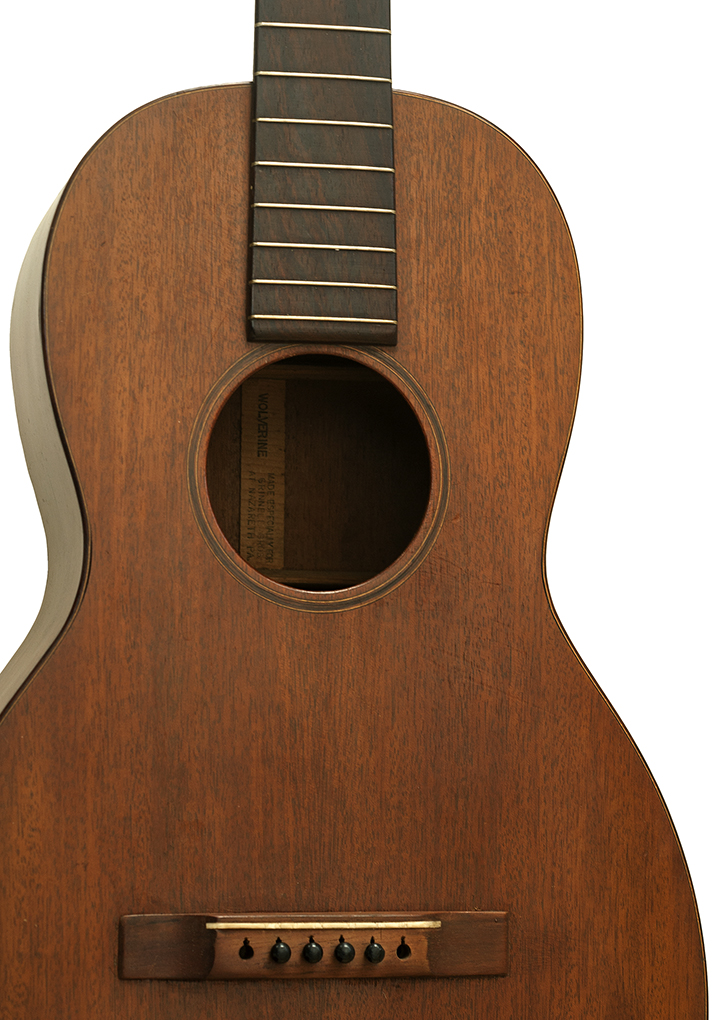
In 1930, Martin marketed the 2-17 as a "Model 25" and simplified the appointments, with a single ring rosette and no top border or binding, in order to lower the price for the depression era market.
1930 Martin Style 2-17
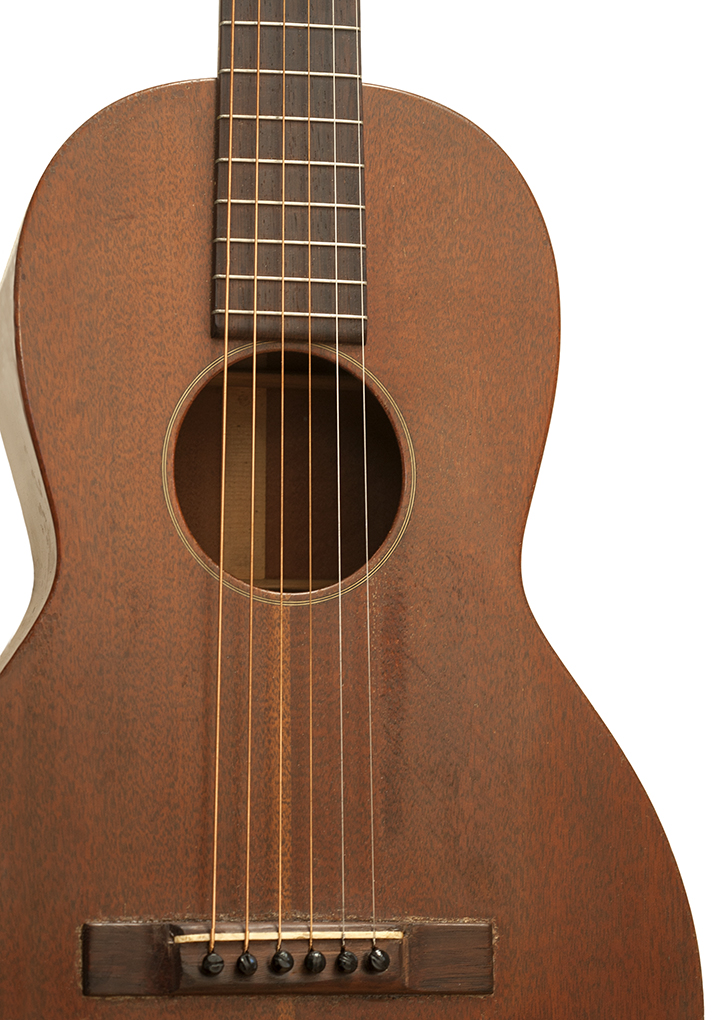
I believe the 0-18 was shaded until December, when the "32 Model" designation was dropped, at which time Martin began to shade the tops, backs and sides as a standard feature of the 0-17 until May or June of 1933.
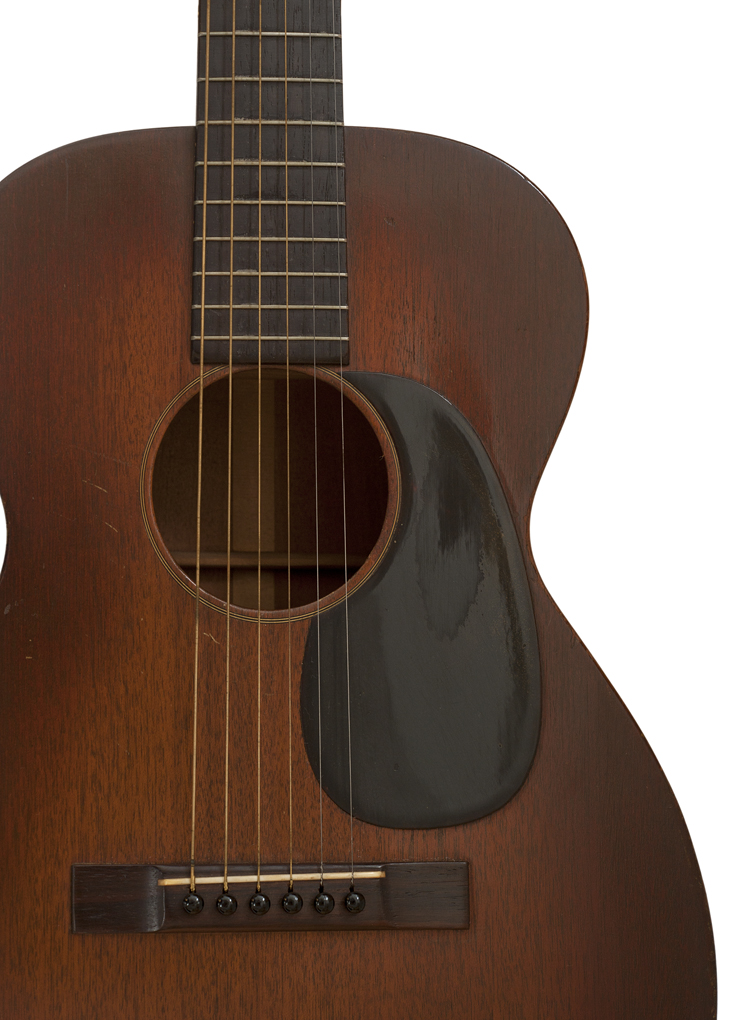
The C1 was Martin's very first archtop model, beginning in 1931. This example is from the very first batch of archtops produced by Martin.
1931 Archtop C-1 Prototype
Serial number 47368
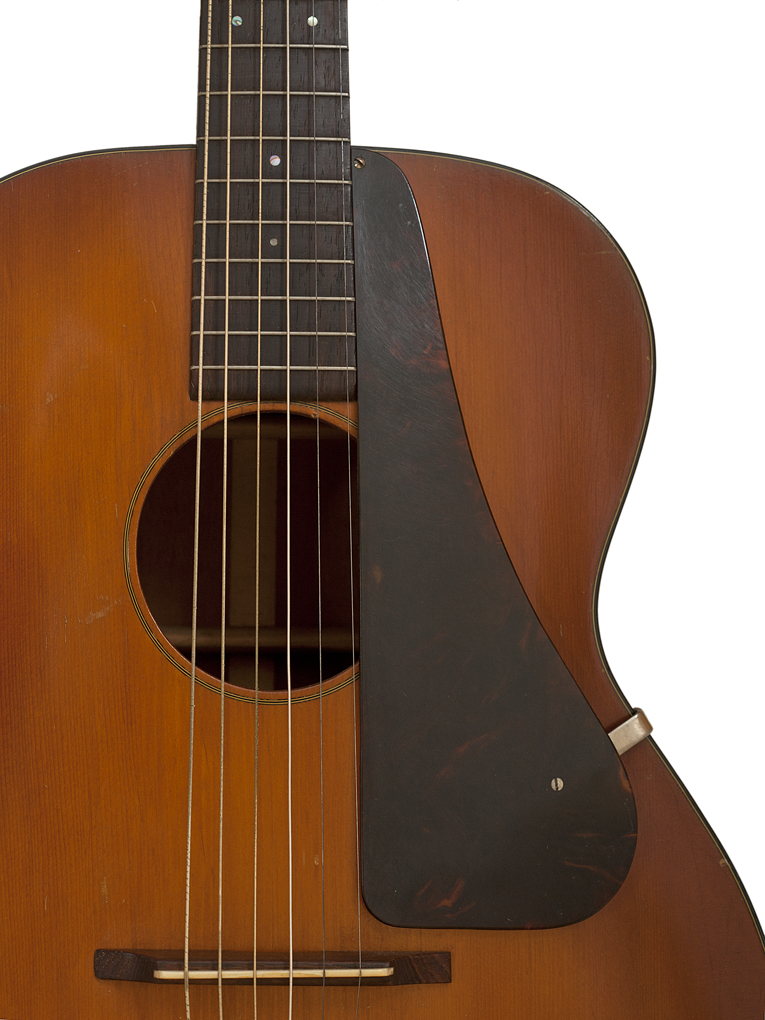
The alternating black and white Celluloid lines on the top border of the Martin C-2 archtops are said to be the inspiration for the top border consisting of plain straight lines that would later appear on the post war Style 28 to replace the long lived herringbone top border in 1947. In fact, the flattop Style 44 Martins produced for Vahdah Olcott-Bickford, illustrated below, preceded the Martin archtops with the same design, with the C-2 merely making the same natural progression from ivory to Celluloid that occurred on herringbone trimmed guitars.
Martin 1933 R-18
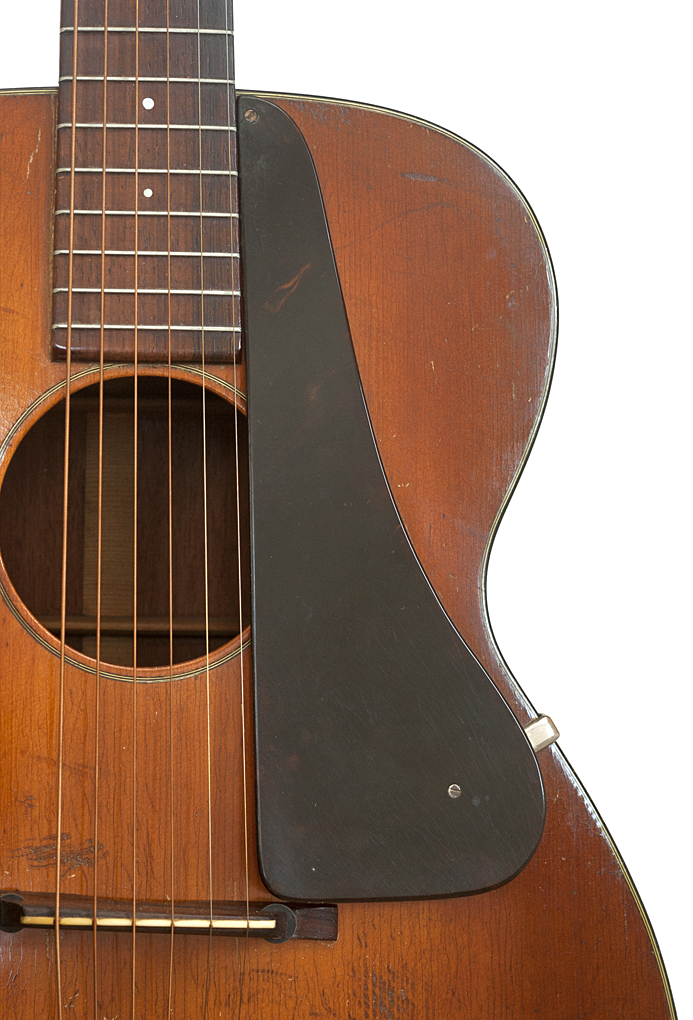
Martin 1942 R-18
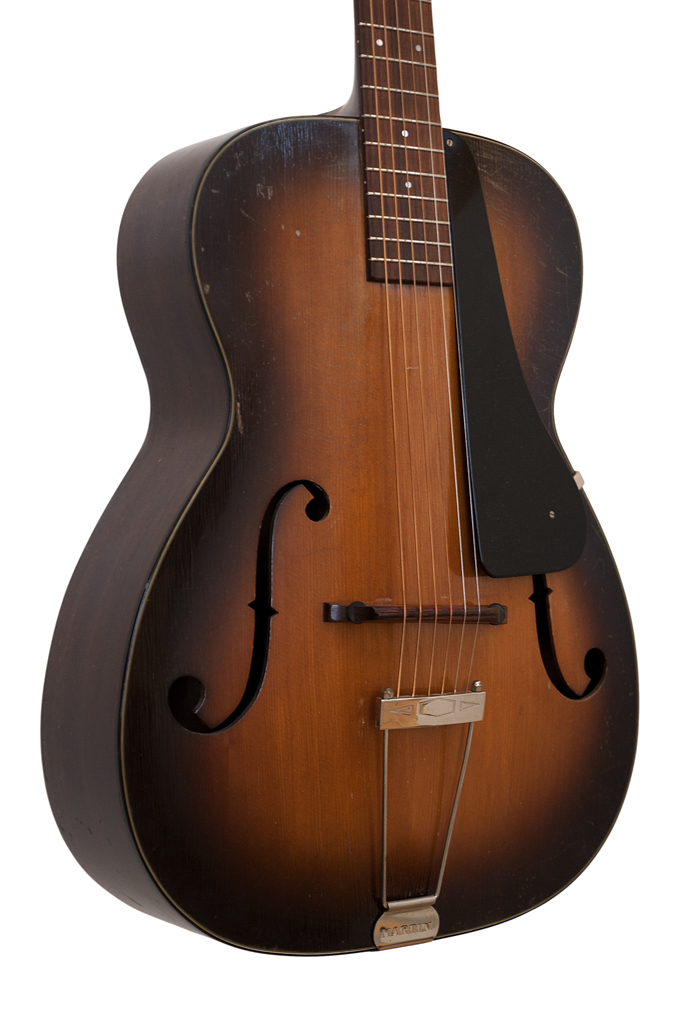
Martin 1942 F-1
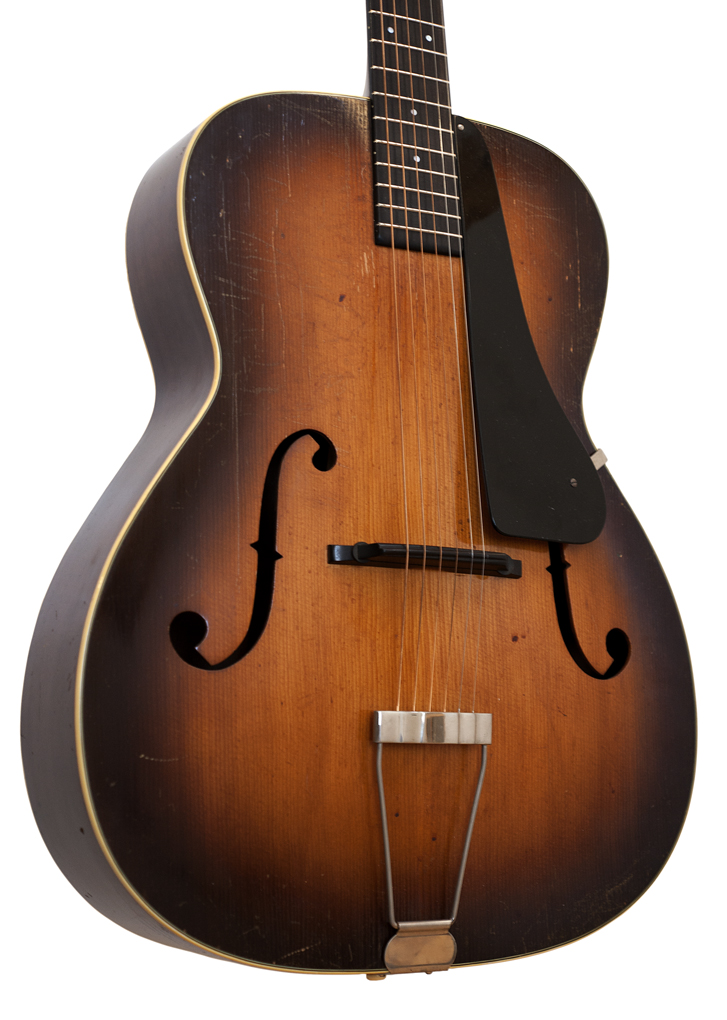
1932 Martin C-2S 12 String Guitar
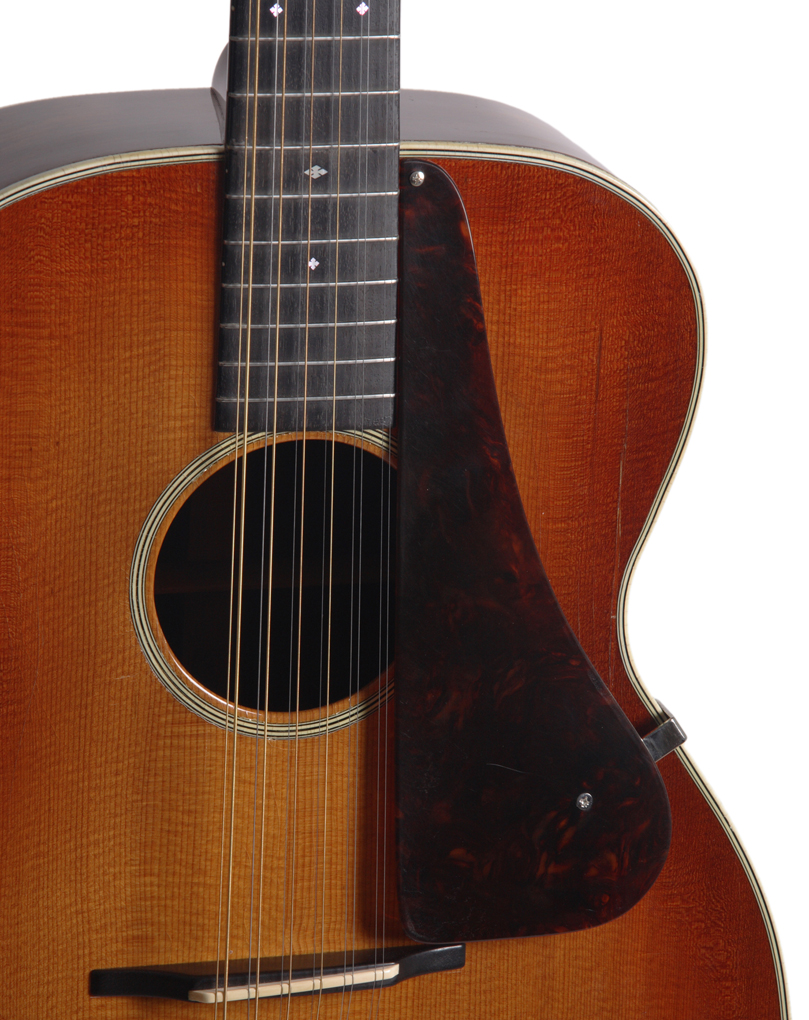
The following is a list of some of the sizes and styles most commonly seen in the 19th century:
3-16
2 1/2 - 17
2 - 18
2 - 20
1 - 21
2 - 23
2 - 24
1 - 26
2 - 27
1 - 28
0 - 28
2 1/2 - 30
0 - 30
2 - 34
2 - 42
Early Martin Guitars
In the days before the standardization of sizes and styles in the 1850's, the dimensions and features of Martin guitars varied from one example to the next. Certain features or themes, however, have been repeated from Martin's earliest days until today.
While it is possible that less valuable examples with simpler features have not survived, C.F. Martin was the proprietor of a music store in New York City who was trained as a luthier before coming to America, and it appears that he built fancier guitars built to order while his store sold less expensive instruments imported from Europe.
Early C.F. Martin built guitars typically featured rosettes with pearl inlaid in black mastic in the pattern illustrated here.
Martin Stauffer Guitar
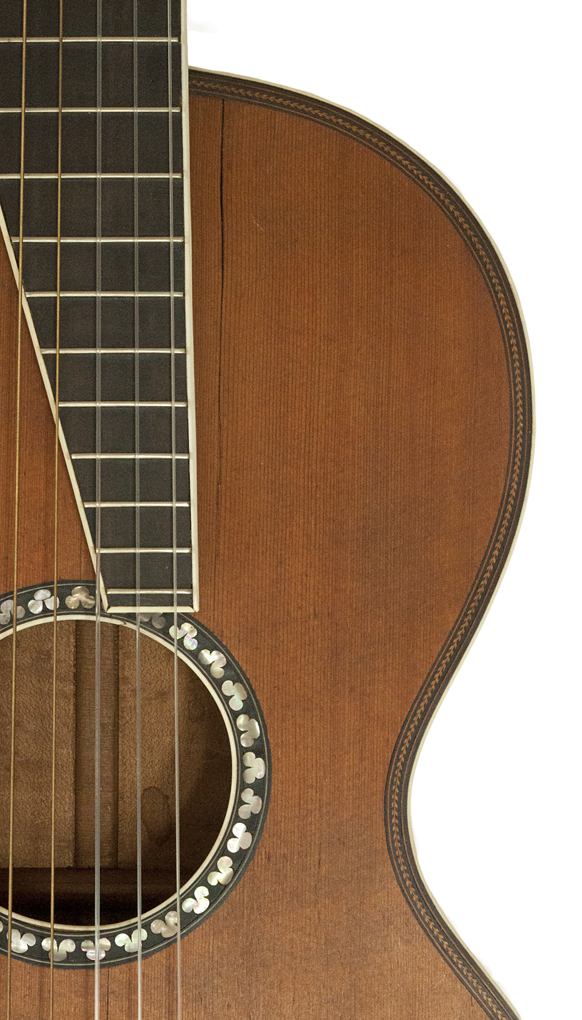
The pattern shown above was often combined in a pattern with slender "moons".
1837 Martin Hudson Street Guitar
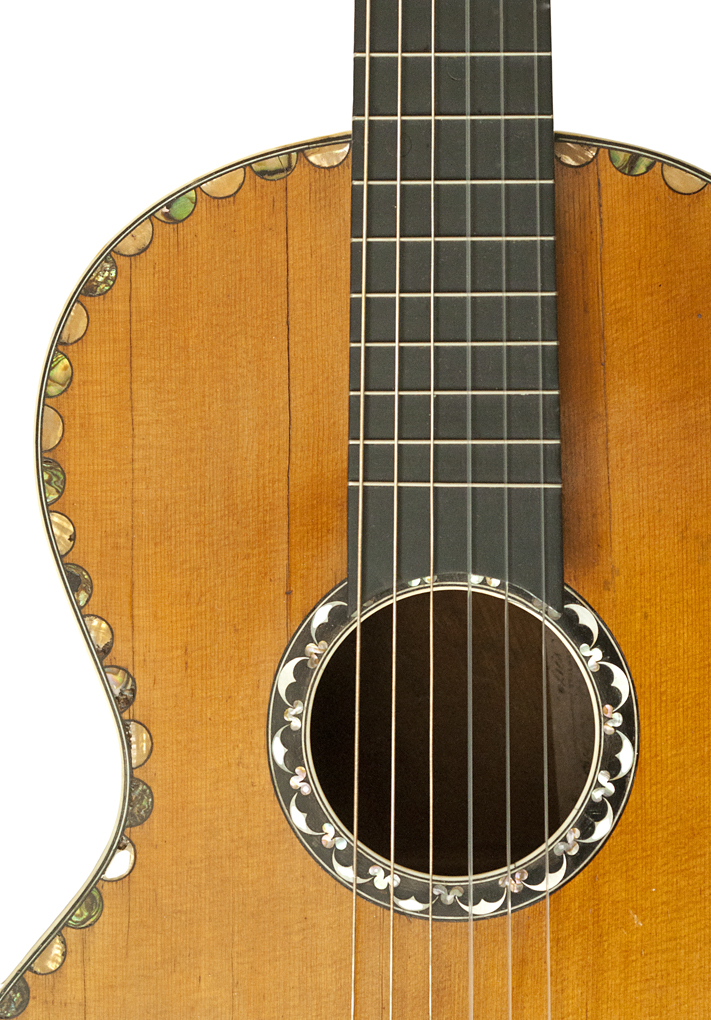
Early guitars built by C.F. Martin also featured a top border of half circles, often referred to as "thumbprints", which are believed by some to have been constructed from pearl button blanks cut in half.
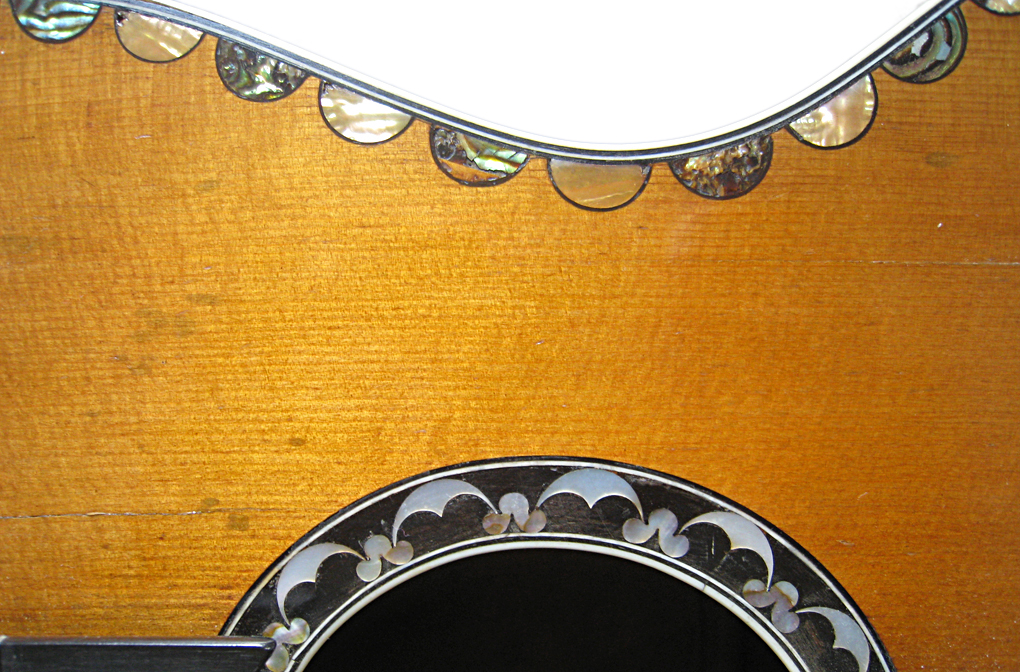
Some of the very first Martin guitars, such as this Hudson Street example, feature the herringbone marquetry that is still a hallmark of Martin guitars over 175 years later. This Hudson Street Martin has herringbone marquetry inlaid adjacent to the ivory side bindings as well as adjacent to the ivory border surrounding the ice cream cone heel with the clock key adjustment.
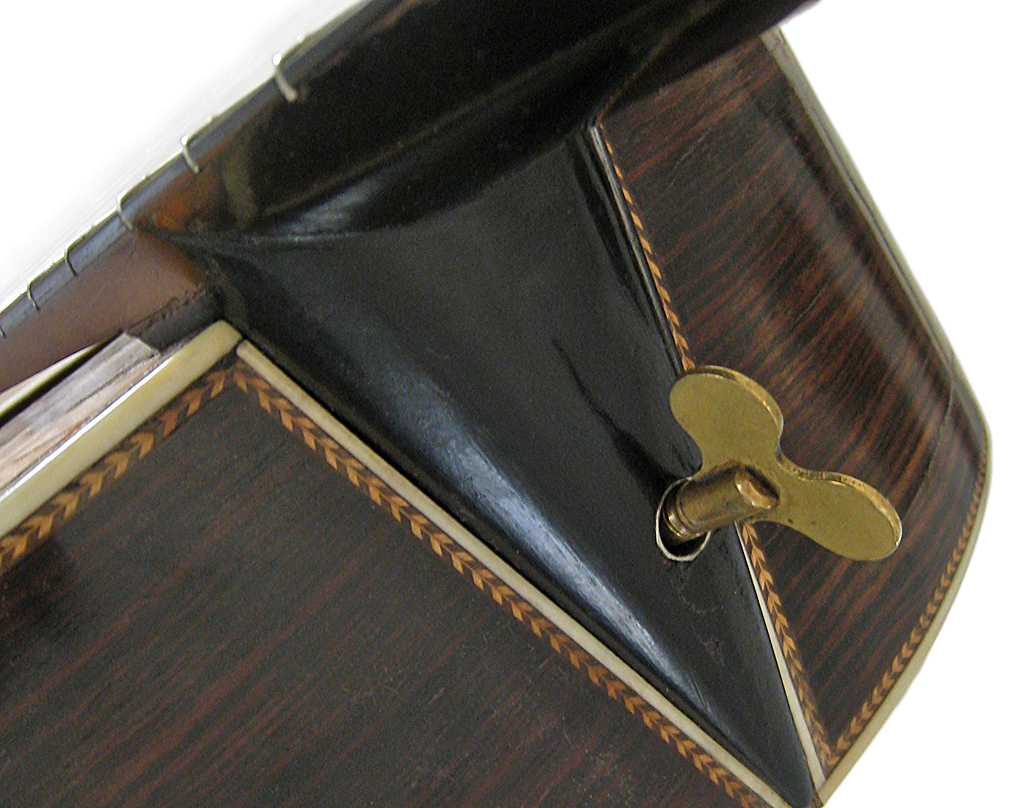
Martin & Schatz
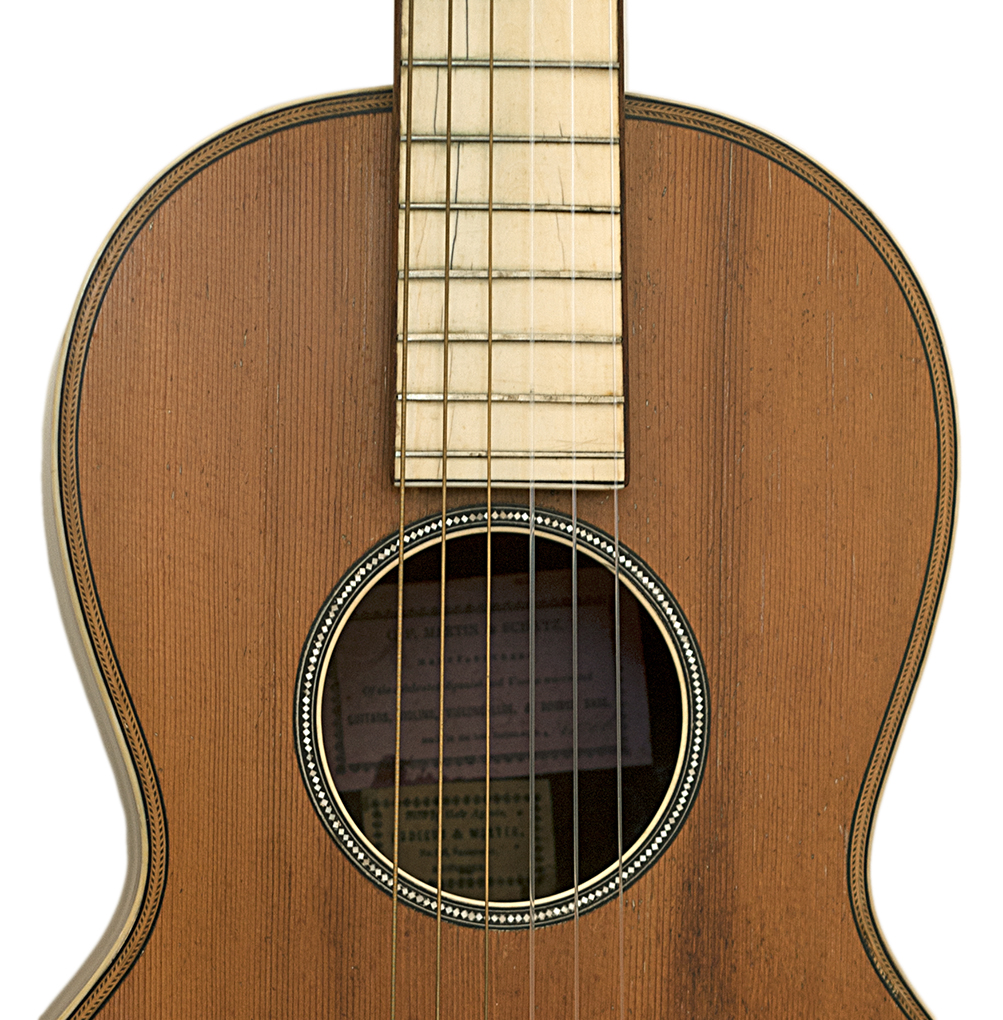
Early Martin & Coupa Spanish Style Guitar
Martins dating to the early 1840's feature a rosette comprised of three concentric rings, in a pattern that has also been a trademark of Martin guitars to this day.
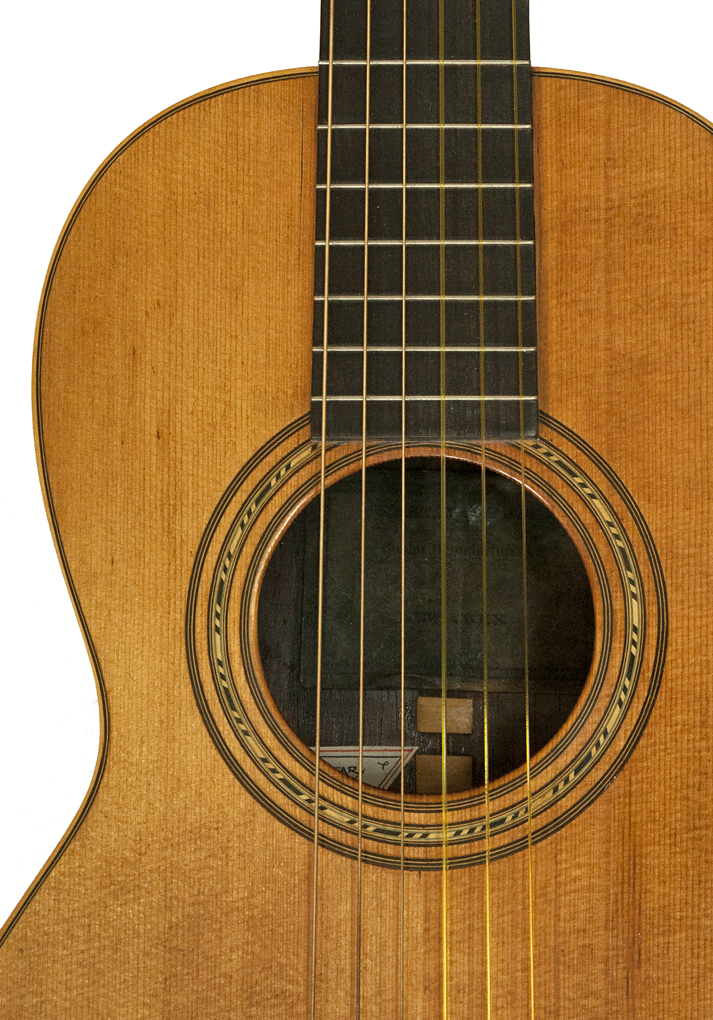
In addition to the herringbone design, the two Martin & Coupa guitars below feature two other patterns seen often in the 1840's, one alternately referred to as the "half herringbone" or "rope" pattern, and the other comprising alternating tiny black and white squares.
These patterns can alternate placement between both the inner and outer rings of the rosette as well as the top border, while the full larger herringbone can be seen on the inner ring, the top border, and the back strip of the guitar, as well as side borders of Hudson Street Martins and the center strip seen on the sides of the "Renaissance" guitar below.
Strips of wood marquetry were imported from artisans in Germany from Martin's earliest days in America until world War II.
C.F. Martin and the company that followed him often chose to build two guitars simultaneously, clearly with an eye towards efficiency, when they had an order for one, varying the marquetry used to slightly differentiate them.
These two early koa guitars are otherwise identical, and appear to have been made at the same time.
The first guitar illustrated on this page above is a near twin to one in the Martin Museum, an example also shown on the cover of the "History" volume of the new edition of the Longworth book. The guitar owned by Martin features the tiny alternating black and white squares in place of the herringbone top border seen here, in addition to having a one piece back and slightly different inlays.
Martin & Coupa Koa Guitars
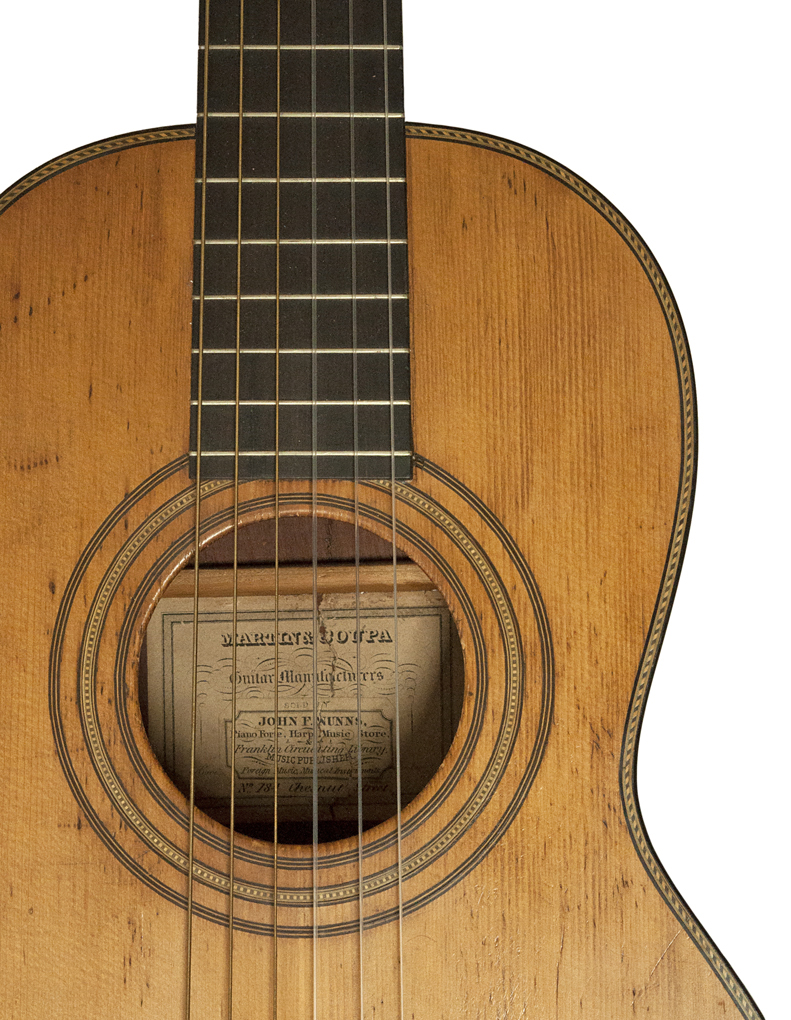
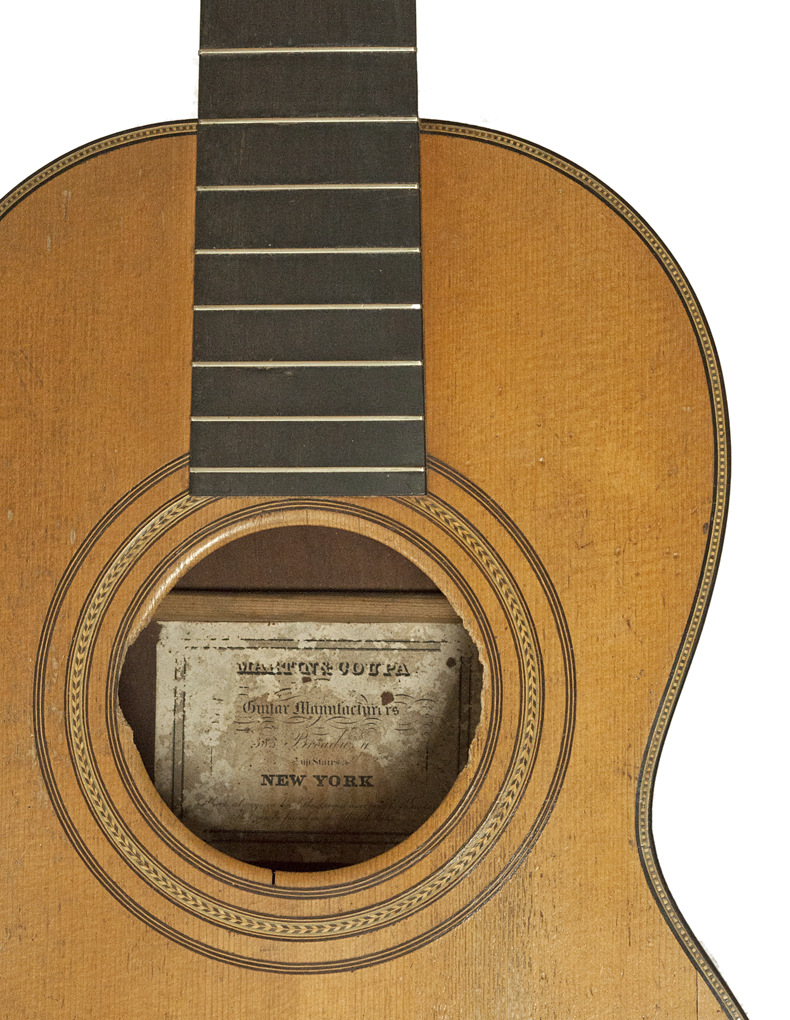
Martin "Renaissance" Style Guitar
The rosette with a pattern sometimes referred to as "sharks teeth" is also seen on Martin guitars from the 1840's and 1850's, sometimes in black and white, and sometimes in green, and has been seen on Style 24 Martins into the early 20th century.
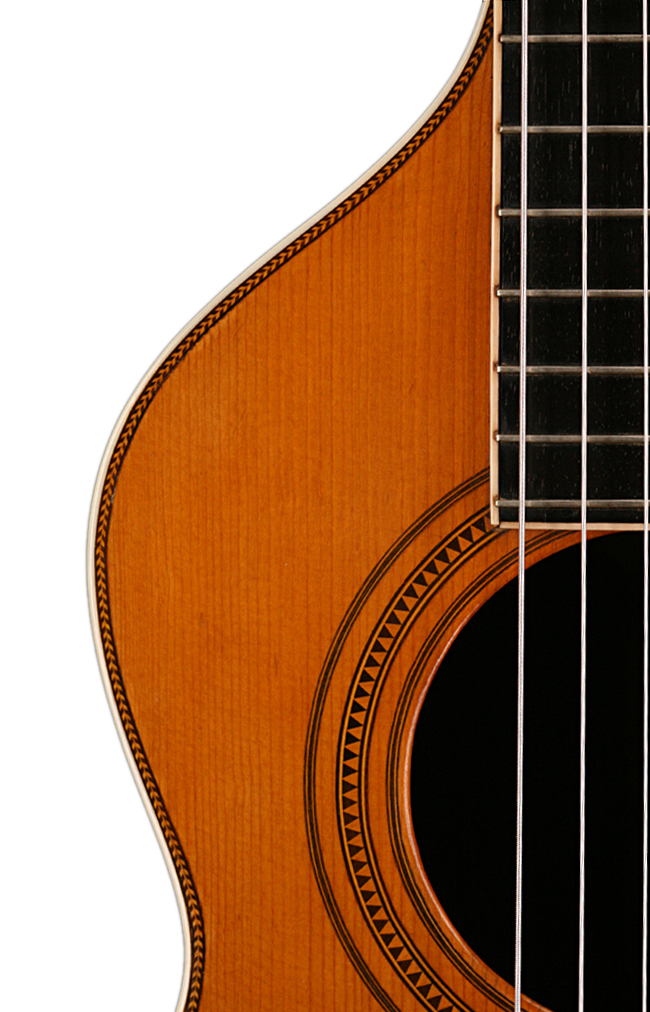

Martin 1840's Spanish Guitar
The beautiful band of tiny pearl diamonds in the top border are unique to this example.
The rosette, with rows of tiny diamonds on either side of a wide band of pearl, is one of three basic rosette patterns with tiny pearl diamonds seen on 1840's Martins before solid bands of pearl became popular.
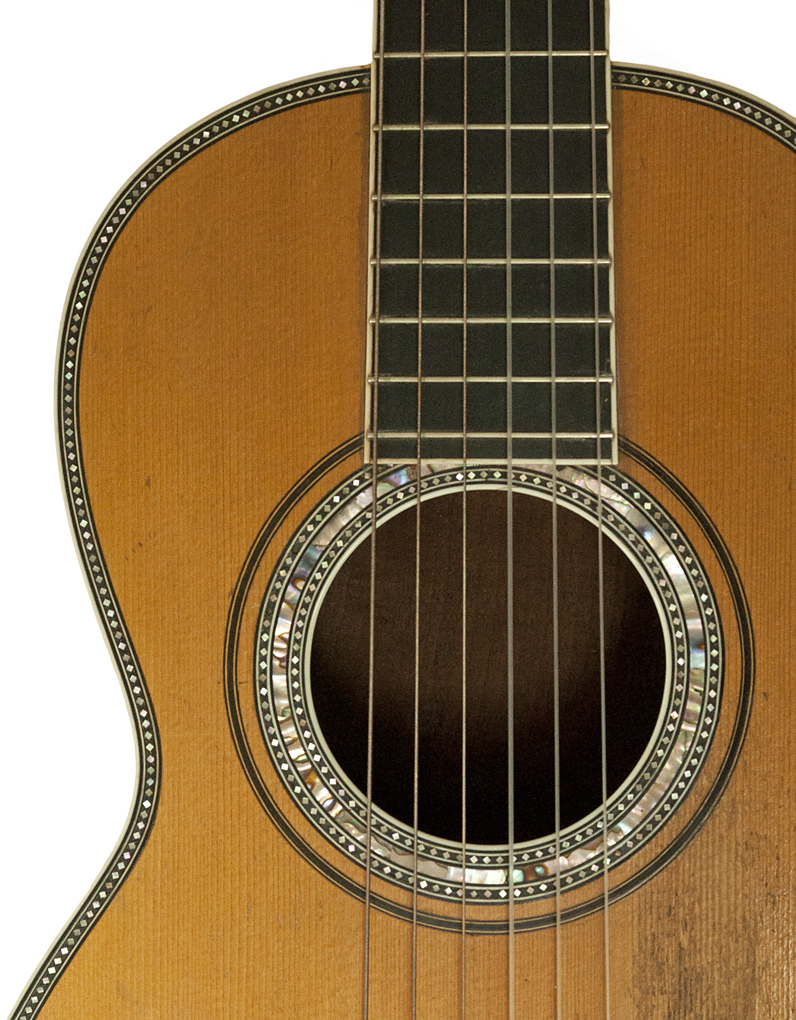
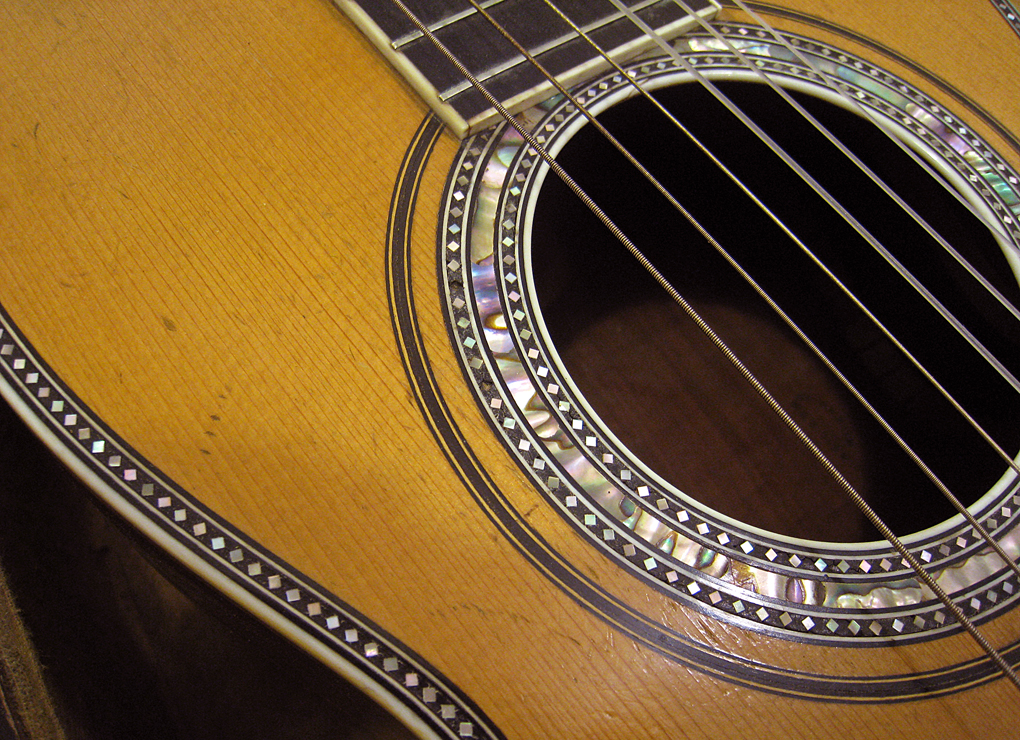
1840's Size 1 Alternate X brace Spanish Style Guitar
The rosette on this guitar features a single band of tiny pearl diamonds, another of the three rosette styles featuring bands of small pearl diamonds in the 1840's.
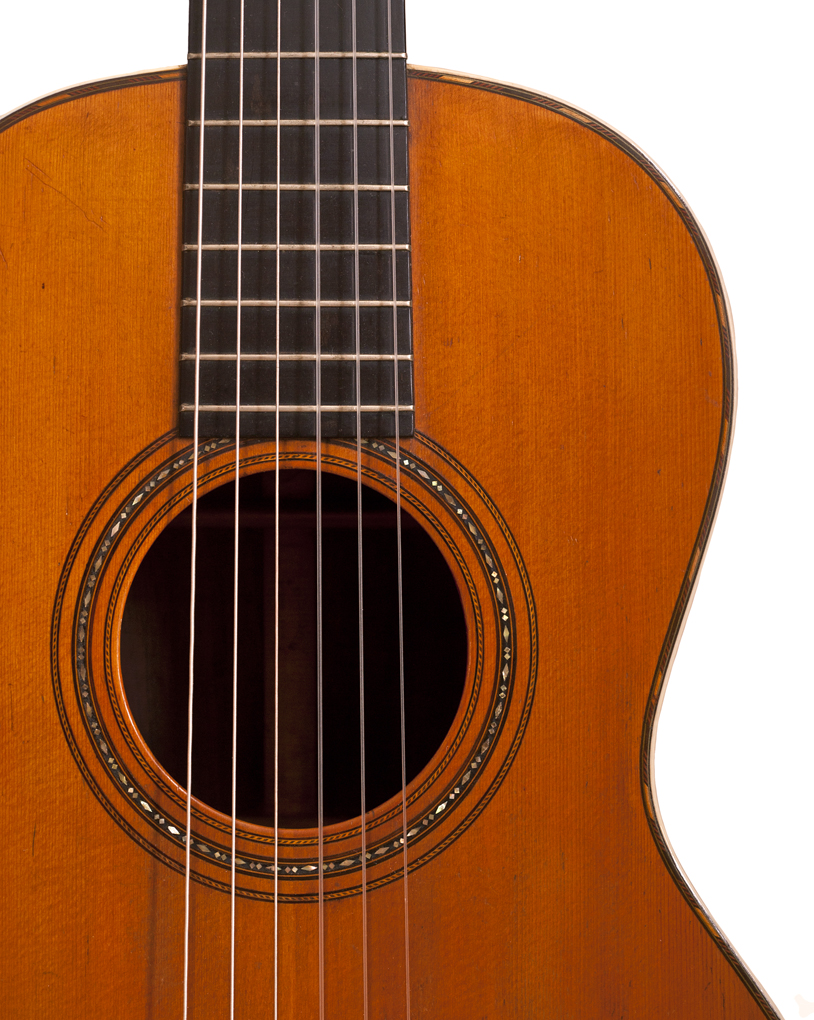
1840's Martin & Coupa Alternate X Braced Spanish Style Guitar
This example, which is quite close in size to a standard Size 2 Martin, also foreshadows a standard Martin Style 21, with simple, tasteful appointments including a herringbone rosette and back strip and a top border consisting of simple light and dark lines.
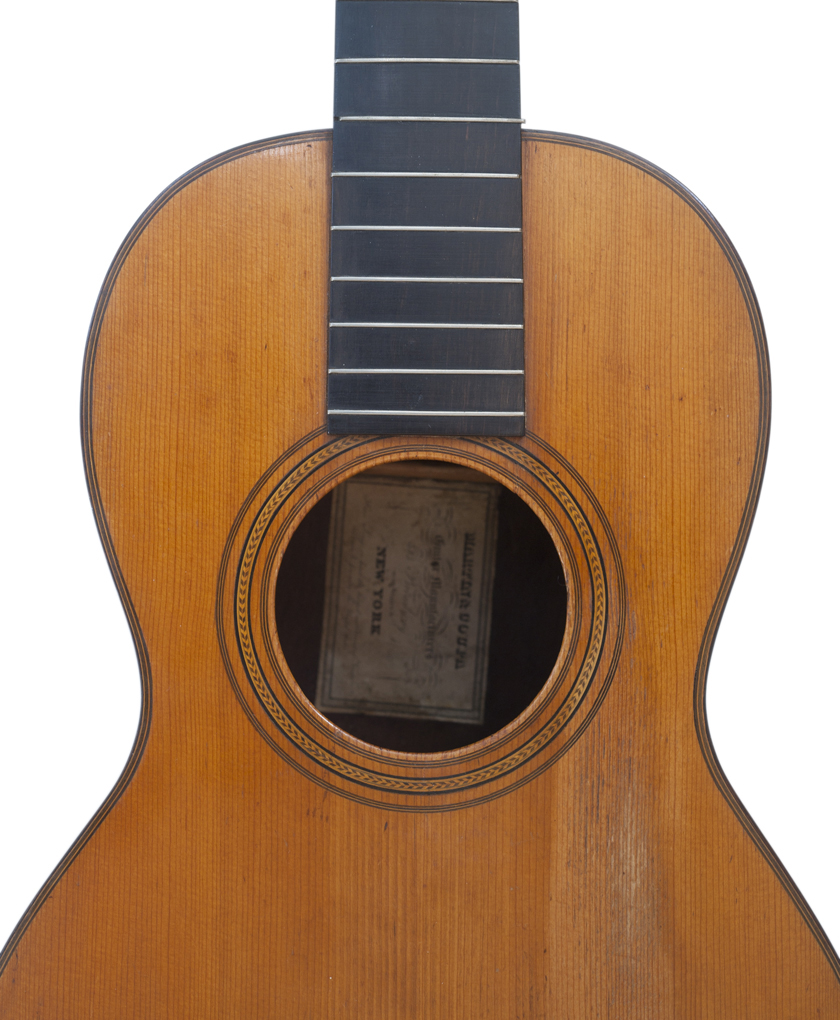
1840's Martin Hybrid X Braced Spanish Style Guitar
And here we see an 1840's Martin Spanish Guitar in the style of a 1-28, with the checkerboard seen on a post war 28 back strip in place of the herringbone, and a very early presentation of rosette rings in the form of a standard Style 28, but with outer rings of small black and white squares in the style often seen on Martin & Coupas of the period.
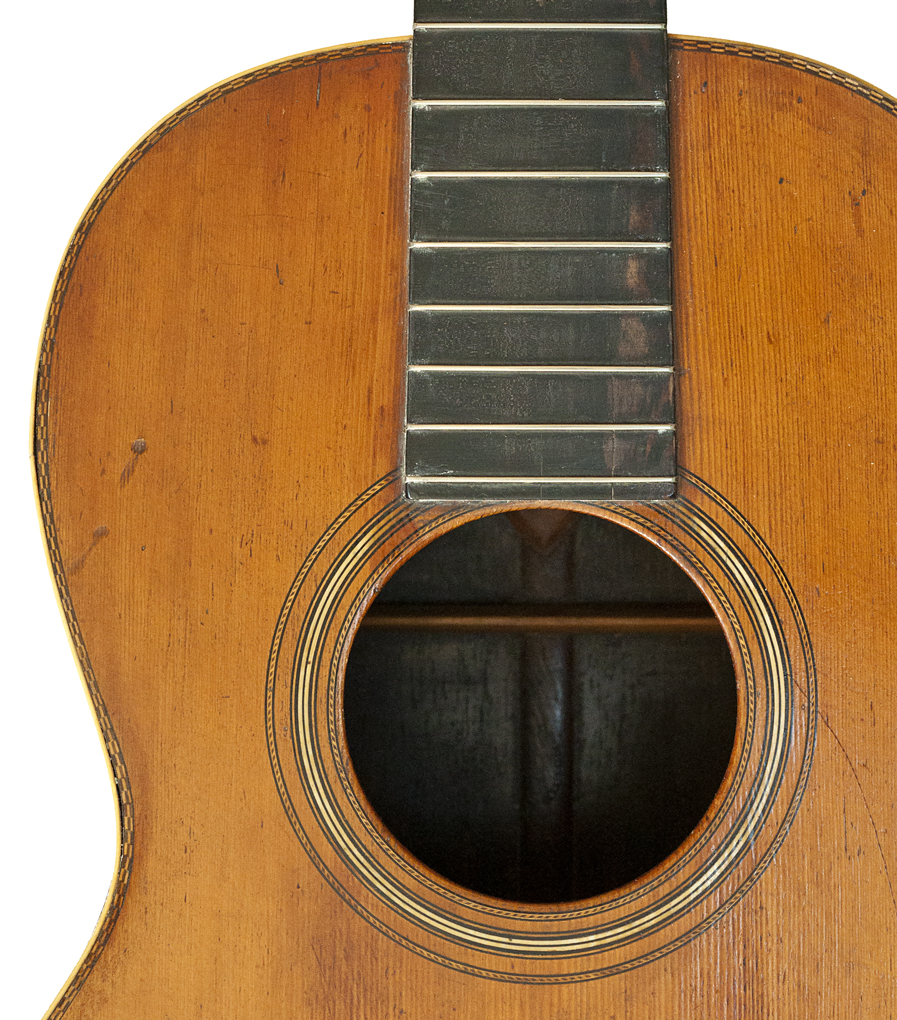
1850's Martin Ivory Fingerboard Stauffer Style Guitar
This rosette, with rows of tiny diamonds on either side of bands of ivory, is the third of three rosette patterns with tiny pearl diamonds seen on 1840's Martins before solid bands of pearl became popular.
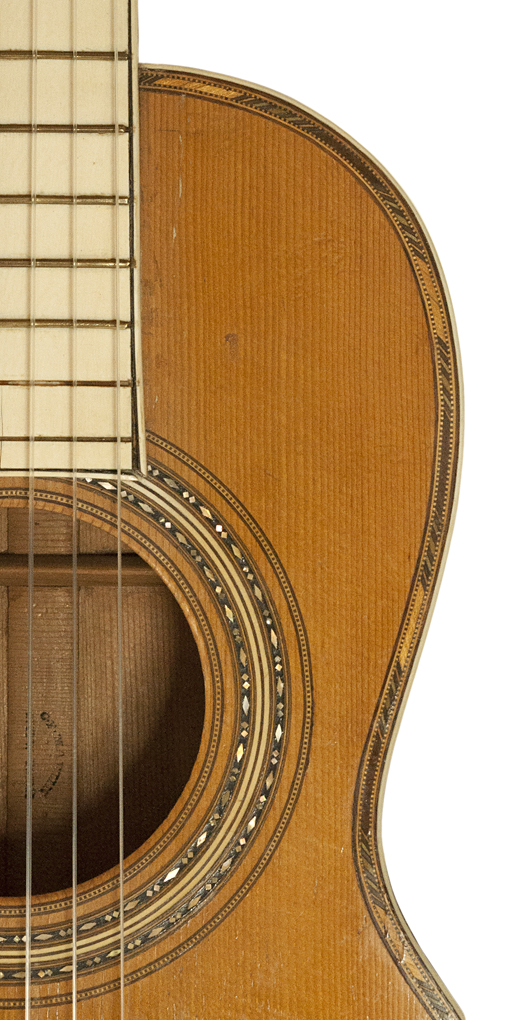
This example also has marquetry on the sides adjacent to the ivory binding.

The "mix and match" nature of Martin's construction of borders, rosettes, and backstrips is evident here when we realize that it is the same tiny alternating black and white squares seen here in the rosette that have been added to either side of the top border to form a more complex design, as it is also often added to the sides of "arrowhead" backstrips. Also note that the top border seen here is constructed from the same style of marquetry strips that have been doubled and "mirrored" side to side to form the "arrowhead" backstrips.
1894 Martin 0-42
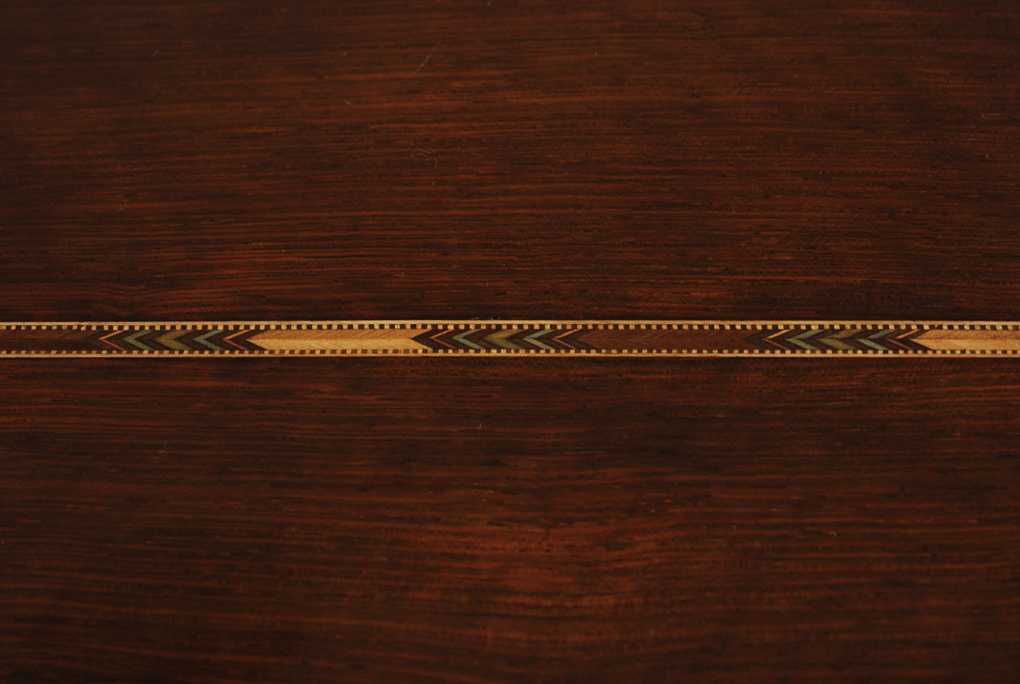
1850's Martin with pearl rosette and pendant.
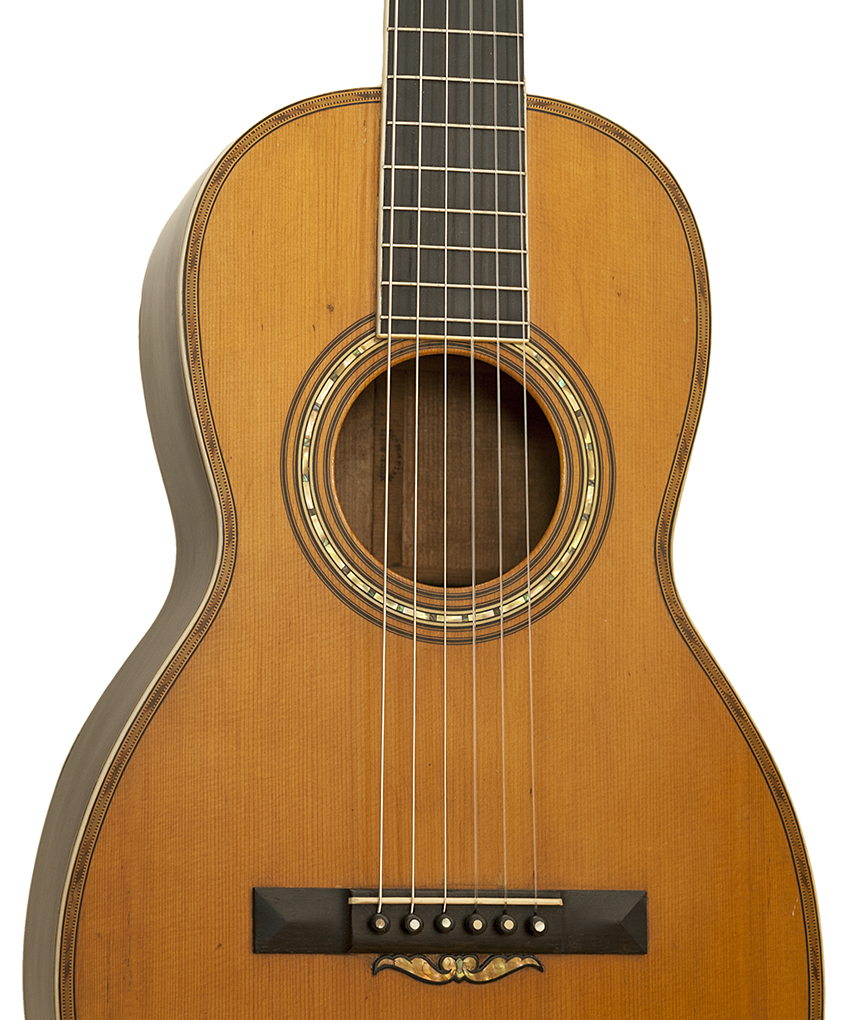
This example has a unique rosette with colorful blue abalone we have not seen before.
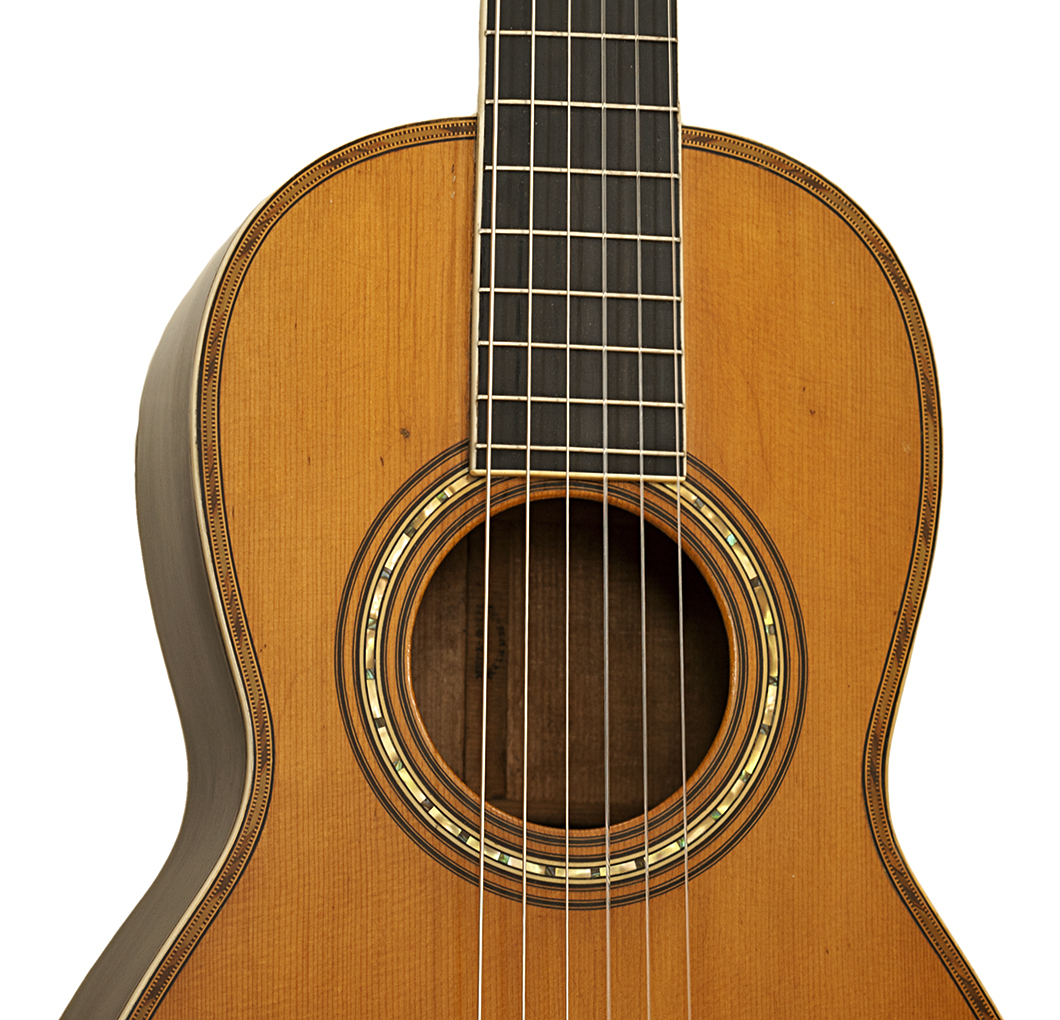
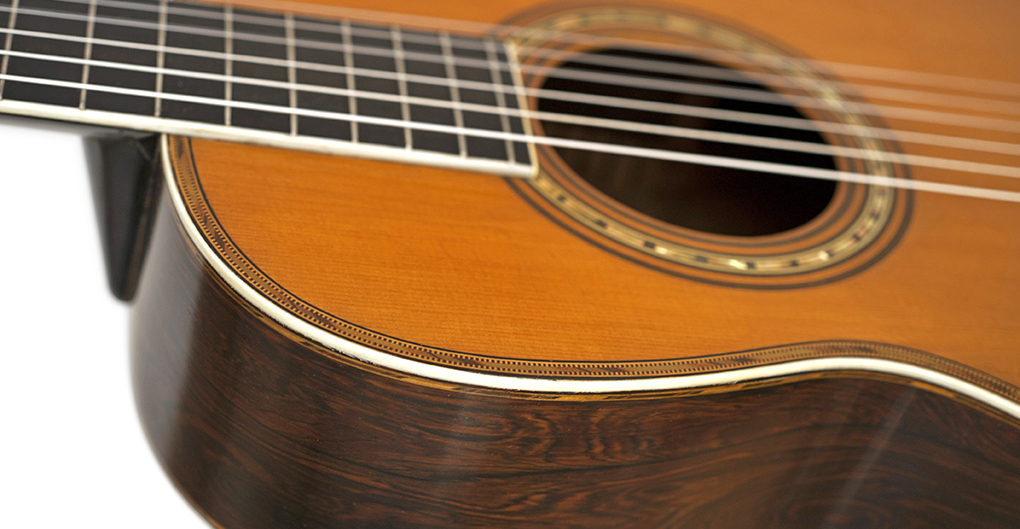
Before the Styles Were Defined
In the 1850's, Martin began standardized their models, giving them names derived from their size and price. A 2-27 was a size 2 guitar selling for $27.
Before this time you will find some examples of the guitars these styles were based on, and which are nearly identical to guitars made decades later, and other examples which are either unique, or combine elements which appear in different contexts in later times.
Here are two such examples exhibiting the zig zag motif later seen on the backstrip of a Style 28, the first similar to a Martin 1-21, with zig zag marquetry in the place of herringbone on the rosette...
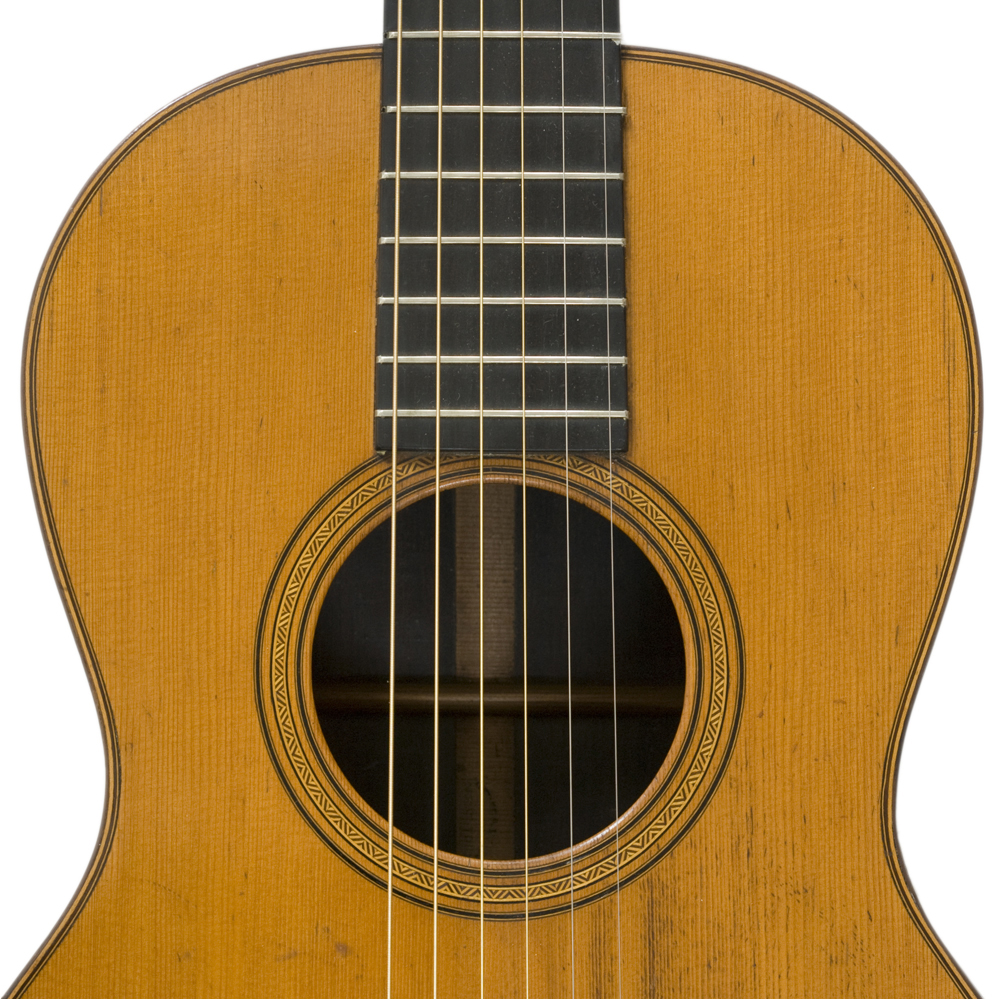
...and the second similar to a Martin Style 1-26, with the zig zag replacing the half herringbone on the top border:
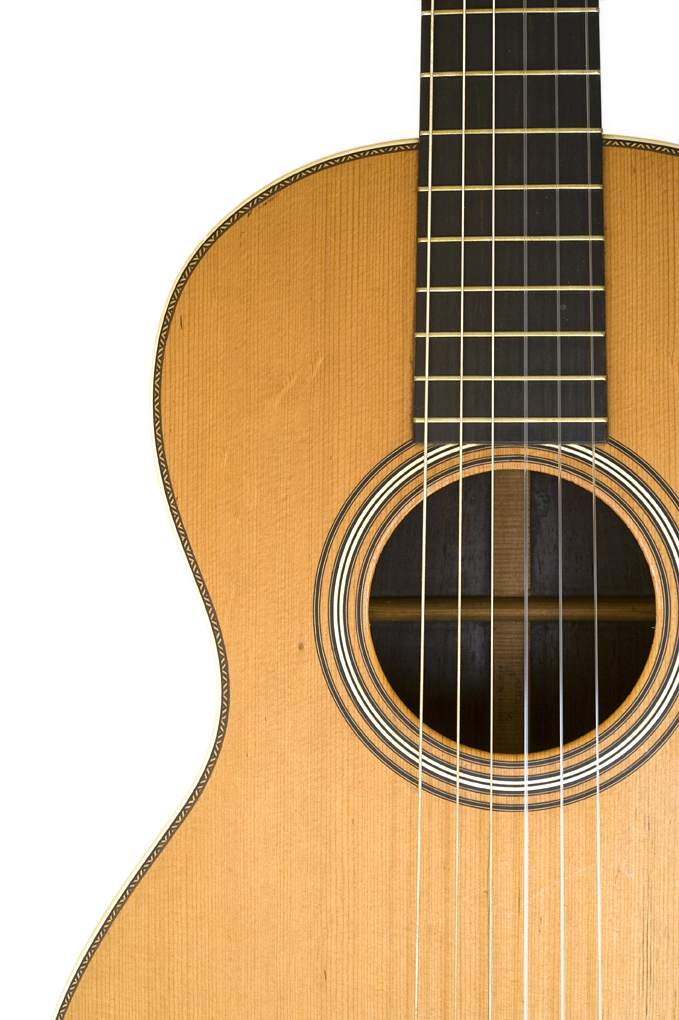
Pearl Rosette Style 28
The sighting of a couple of rare examples similar to this size 1 guitar have caused speculation that this is the the earliest form of the Style 28, originally including pearl inlay on the rosette. It's also possible that this is simply a combination seen before the styles were defined.
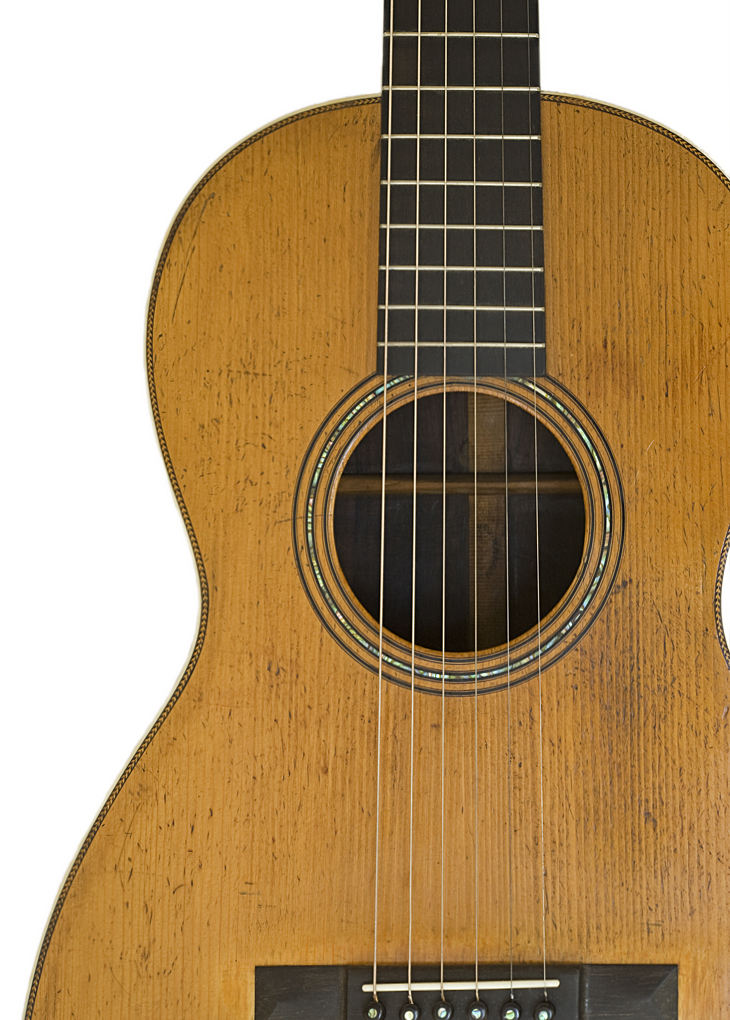
And here we see a variation of the pearl rosette 1-28 with the "zig zag" top border.
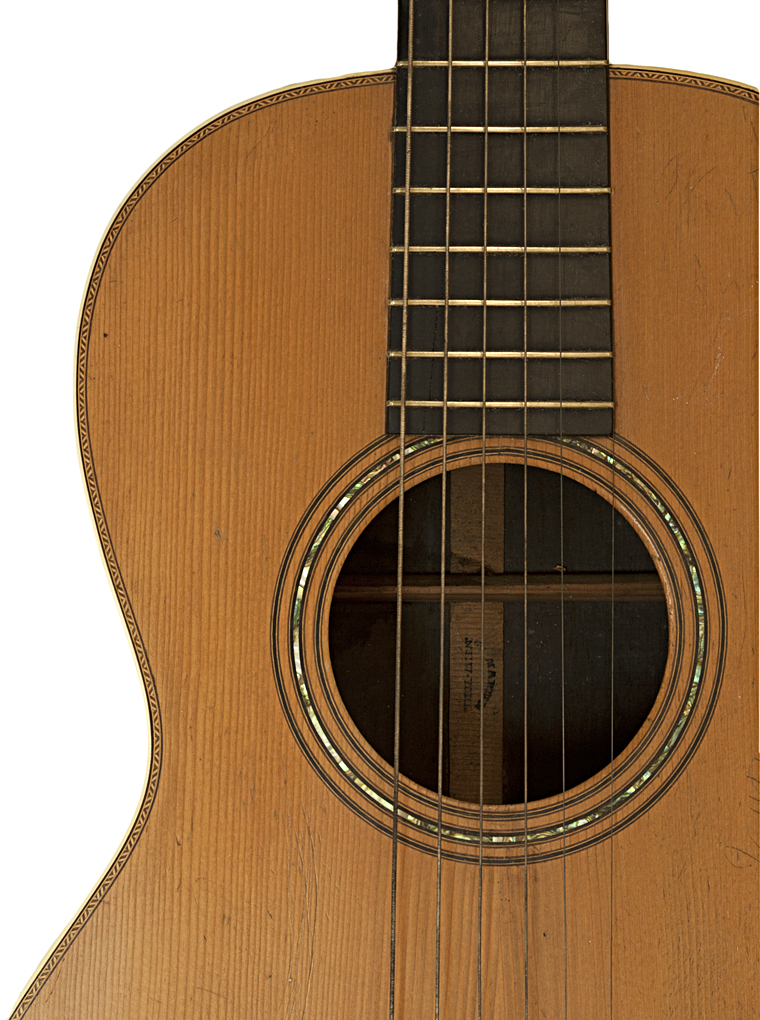
This size 1 example is unusual for combining the rosette of a style 28 with a top border more typical of a style 30 or 34 in 1874, after the models had been standardized for some time.
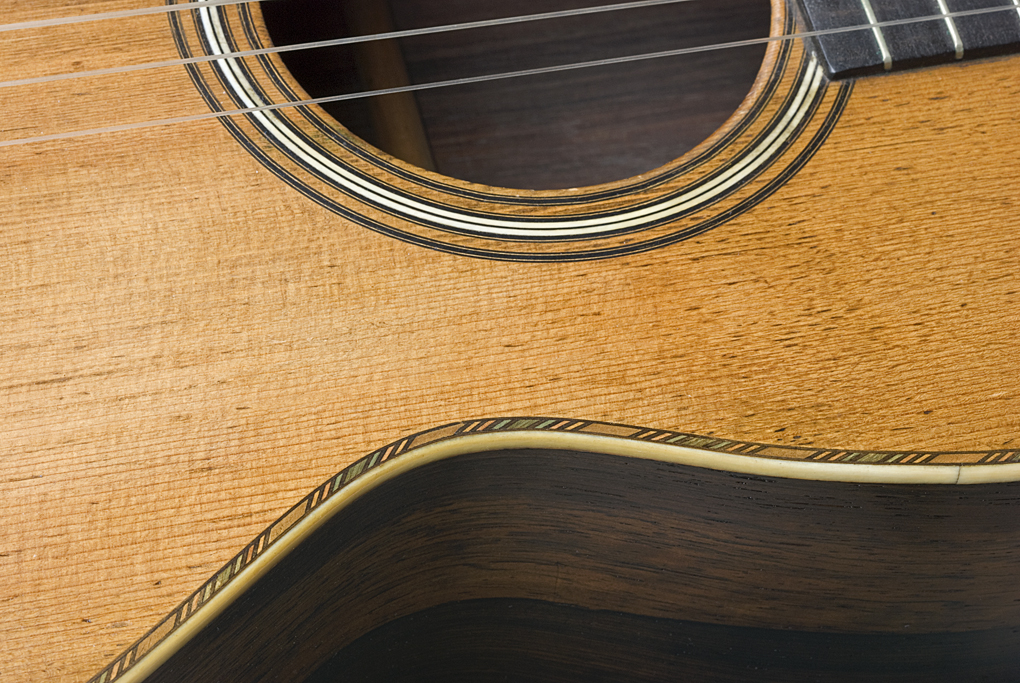
This unique 0-34 has a wide pearl center rosette ring which to my knowledge has not been seen on another example. In the 1840's, similar wide bands of pearl were used in combination with bands of small pearl diamonds and squares, as you'll see below. The color of the wood on the outer rosette rings is also unusual, though you'll also notice natural wood rings on the Martin Style 24.
The Martin Style 23, 24, and 34 do have more variation in trim than other Martin models, but the choice of marquetry does vary on Martin guitars, and is not in itself indicative of a different style.
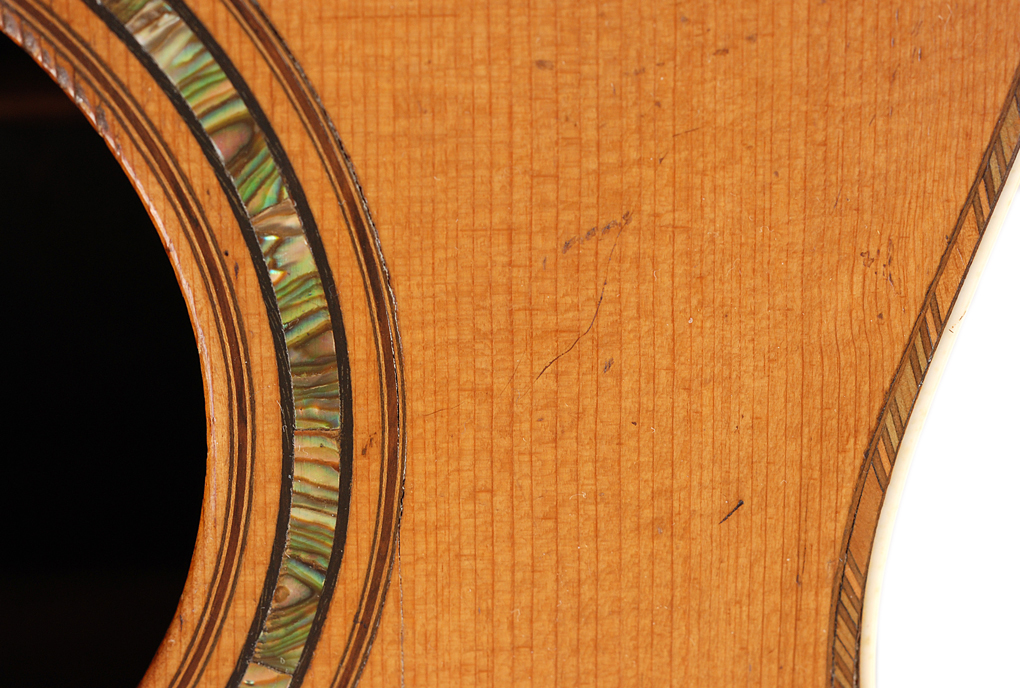
And sometimes life is just filled with mysteries.
This Martin 1-28 was made in 1907:
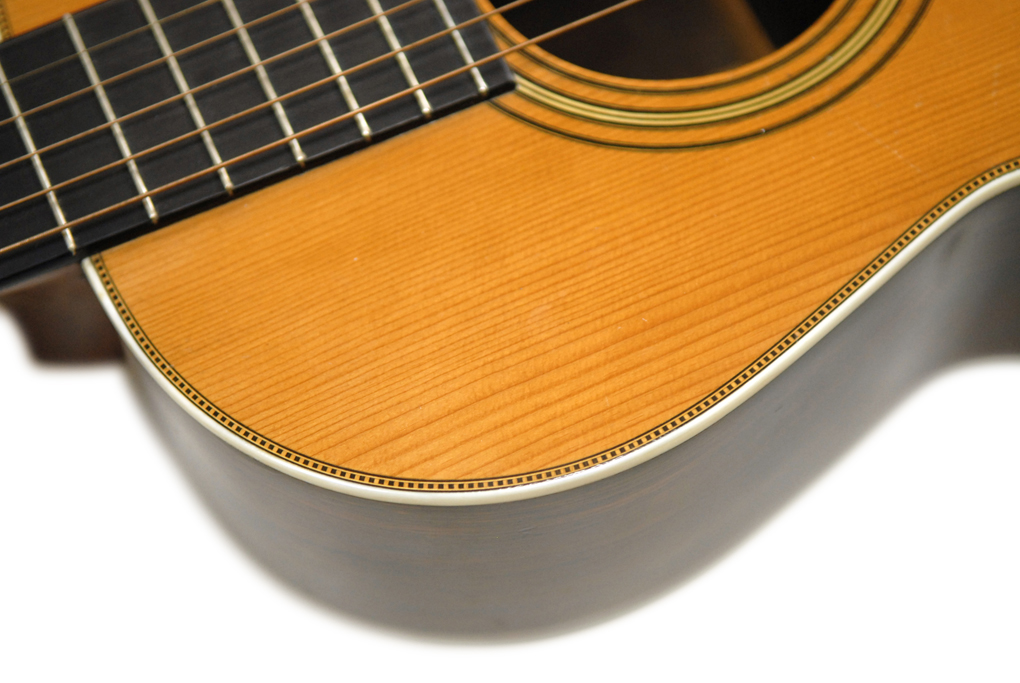
This unusual Size 1 Martin with a Style 21 rosette is most likely from the 1880's, also after the standards had been established, but is reminiscent of checkerboard variations commonly seen in the 1840's.
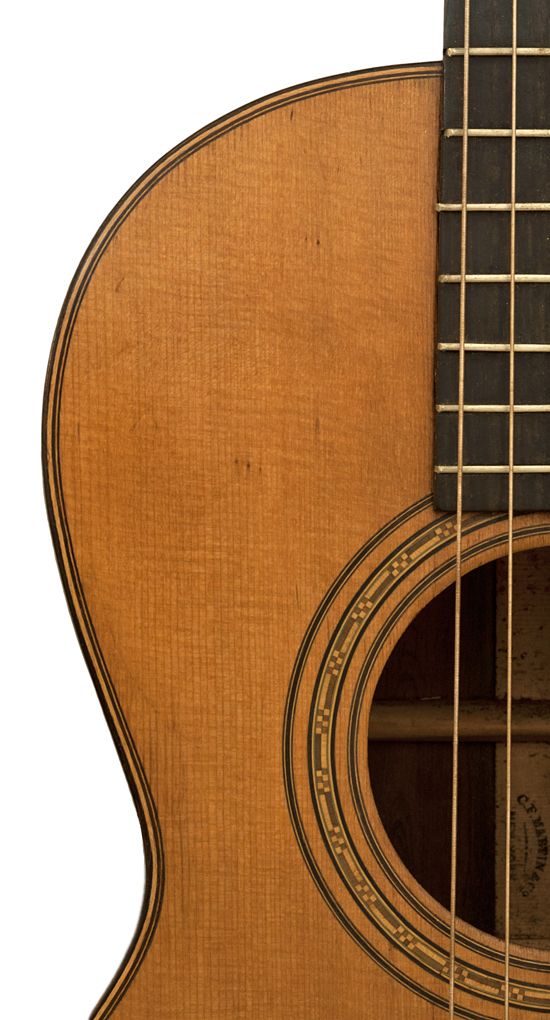
We also see variations within a style of purfling. The size of the herringbone purfling could vary greatly from year to year.
The smallest herringbone appeared just before the turn of the century.
1898 Martin 0-28
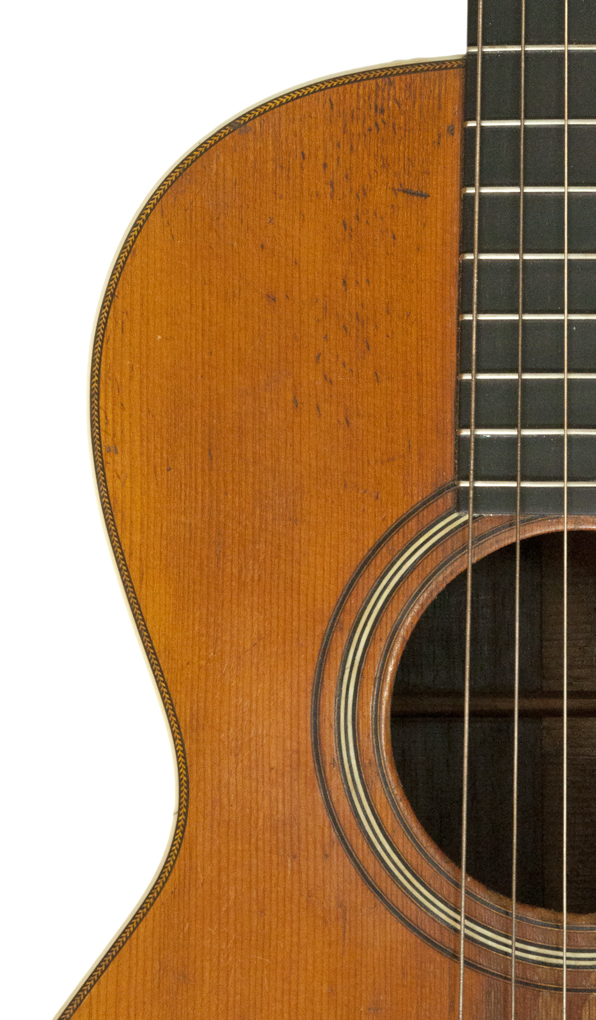
On the 1898 Martin 0-28, we see 18 herringbones per inch.
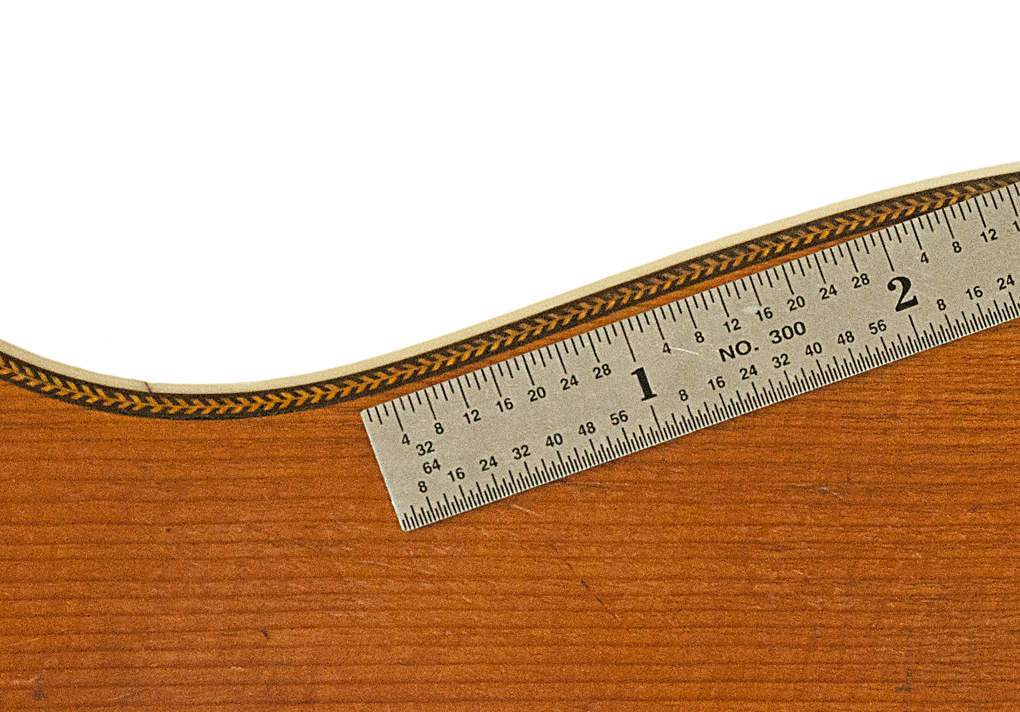
On this 1930 Martin OM-28, we see 10 herringbones per inch.
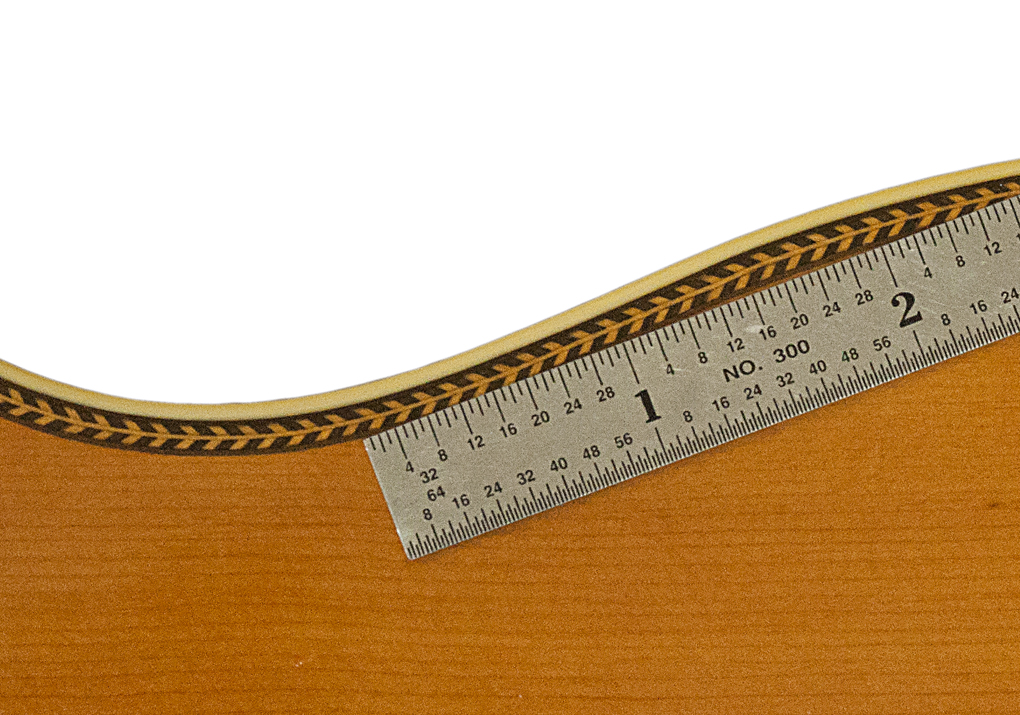
Martin Made for Other Firms
Martin occassionally used different marquetry on instruments made for other firms, but generally it was chosen by Martin. The most common of these is the single ring rosette, which was used for guitars made for numerous firms including Ditson, the Southern California Music Company, Wurlitzer, Foden, and B&J in place of the signature Martin three ring rosette.
Martin Built for Beltone 2-17S
This upgraded Martin Style 17 was a special edition made as the Beltone 2-17S.
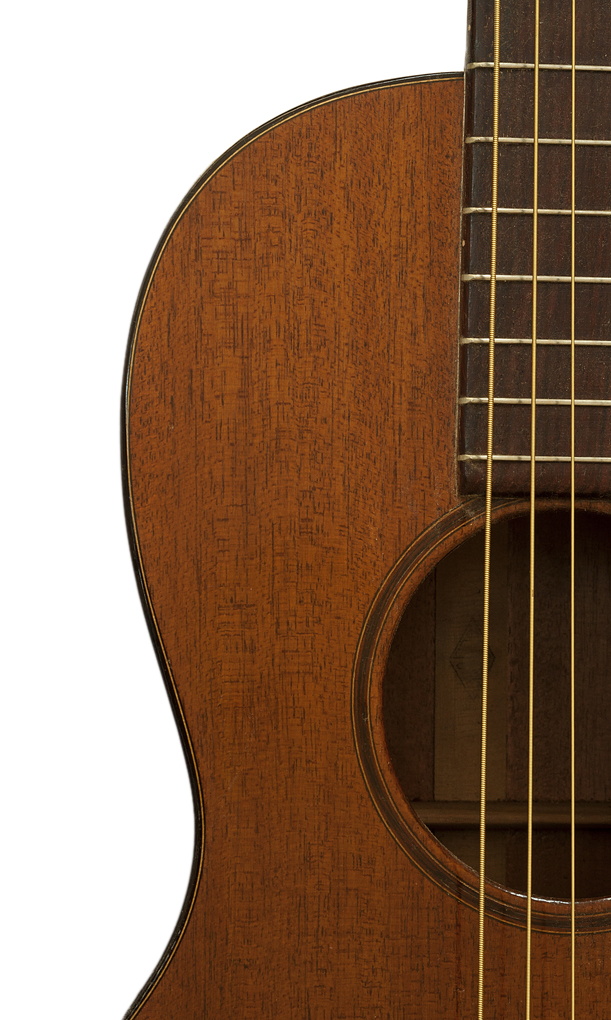
Martin Built for Buegeleisen & Jacobson 1923 "S.S. Stewart" 2-17 Special
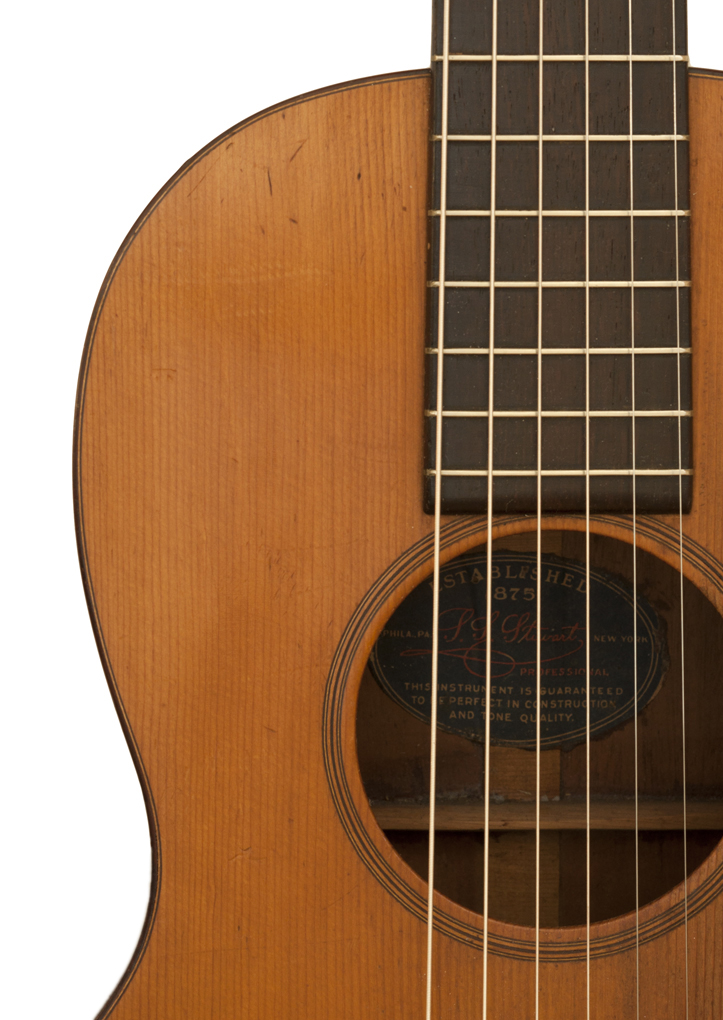
Martin Built for Grinnell "Wolverine" Brand 0-18
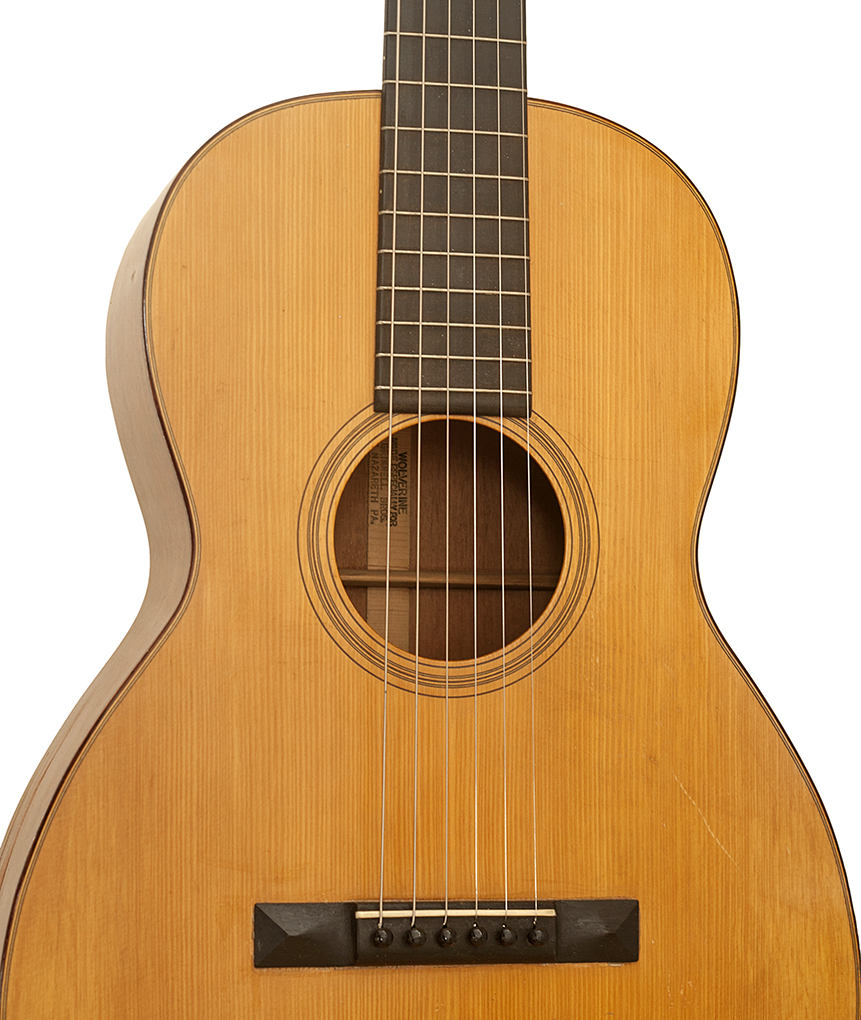
Martin Built for Grinnell "Wolverine" Brand 2-17

Martin "Paramount Style L" Built for William Lange
Martin made about 32 resonator guitars in about 1930 with the Paramount name for William Lange. These guitars varied greatly with some six strings, some tenors, some natural top and some shaded tops, some with pickguards and some without, some with soundholes, but most without.
This six string is highly unusual having a top border of the type seen on early Martin guitars, such as the Styles 27 and 30.
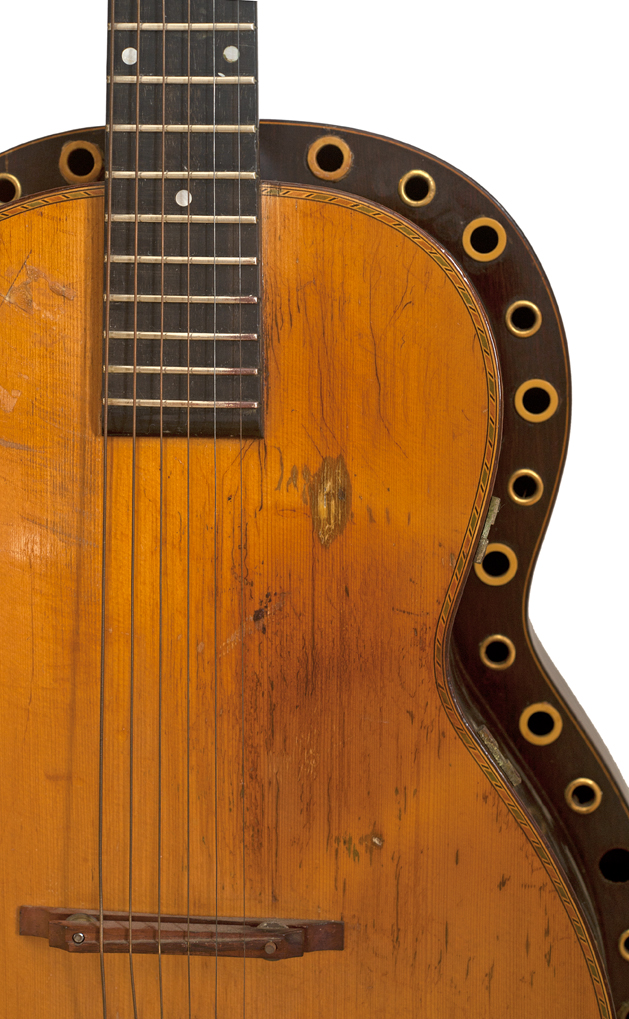
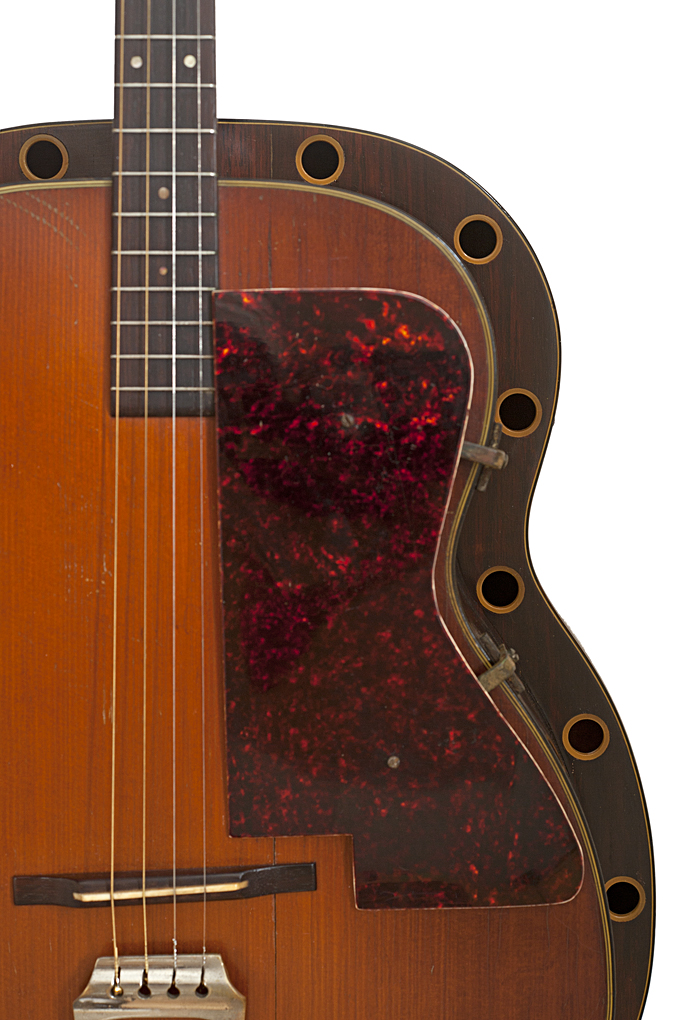
1930 Martin Built for Montgomery Ward 0-17S
1922 Martin Olcott-Bickford 0-44
The Style 44 guitars made for Vahdah Olcott-Bickford, who preferred high quality guitars with simpler trim, were the first rosewood flat top Martins to have the border of plain lines later adopted by the Martin archtops and then used to replace the herringbone trim on a postwar style 28 in 1947.
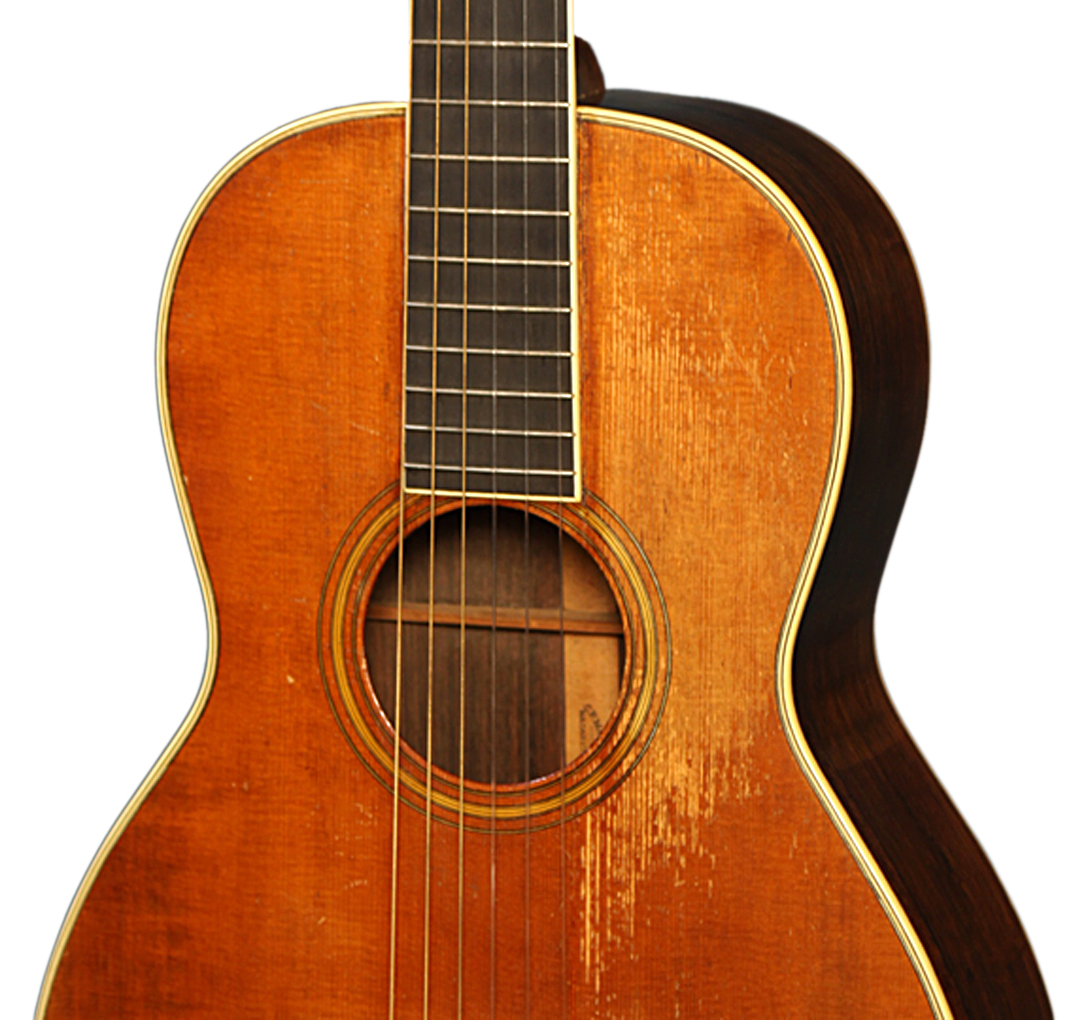
1913 Martin Foden Special Model E

1914 Martin Foden Special Model D
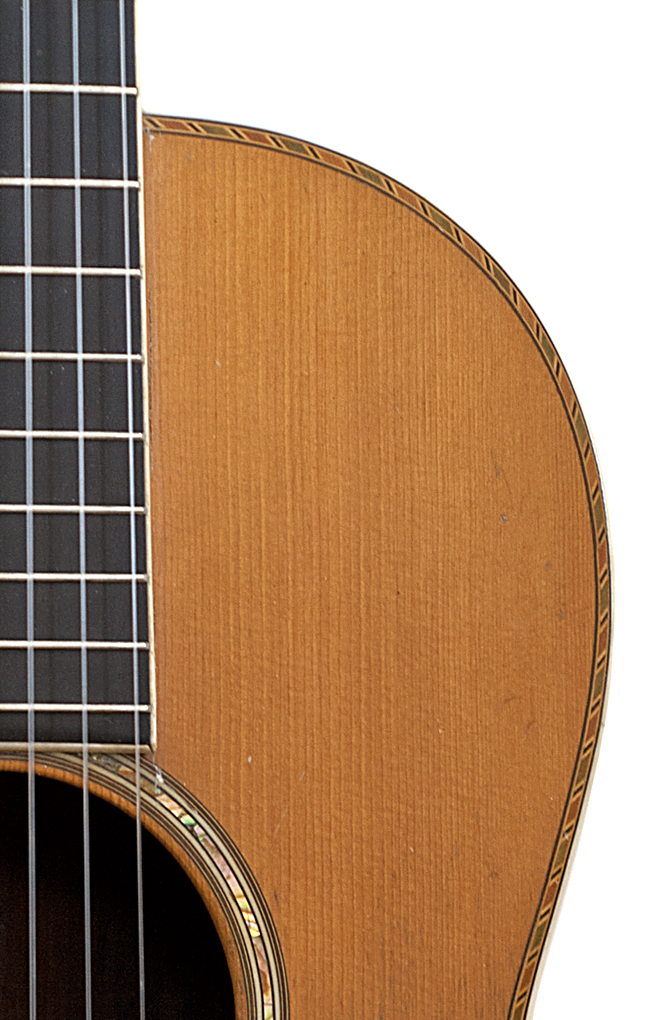
1913 Martin Foden Special Model C
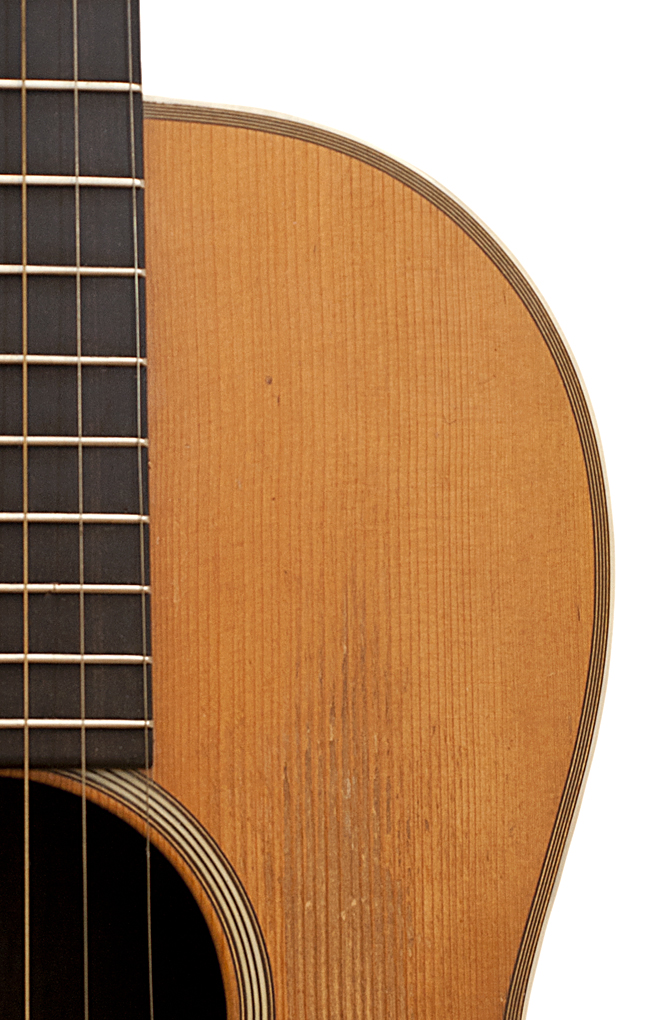
Martin built for Southern California Music Company "Nunes" 1400 and "Rolando" 1500
This is a rare example where Martin was given sample instruments to match, and SoCal even provided the koa wood for these early examples.
Martin built for Southern California Music Company "Nunes" 1400
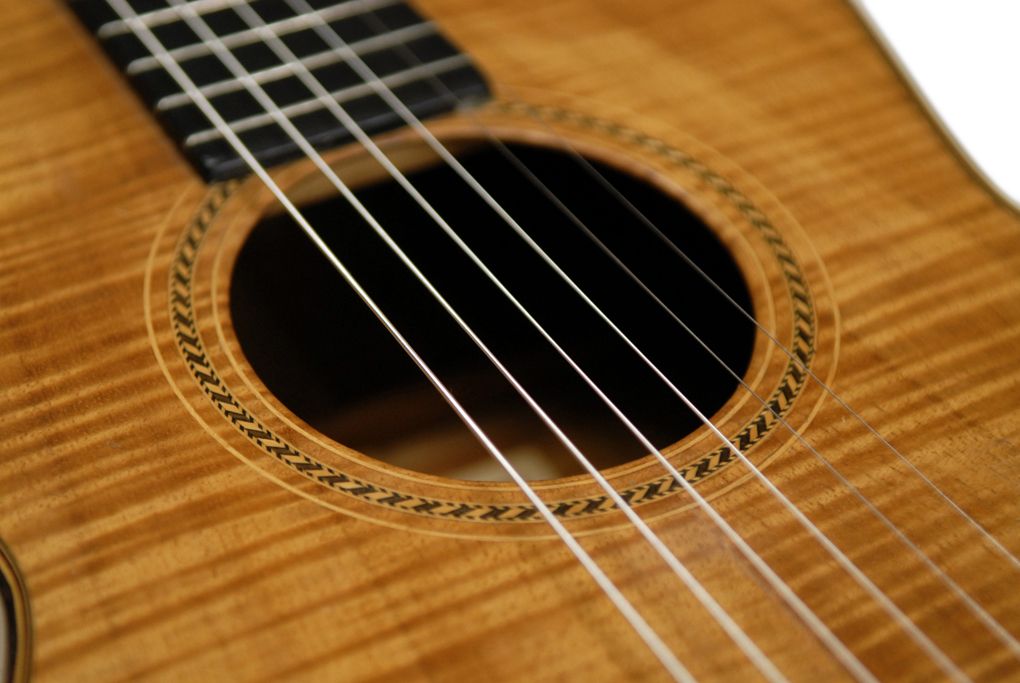
Martin built for Southern California Music Company "Rolando" 1500 Sample
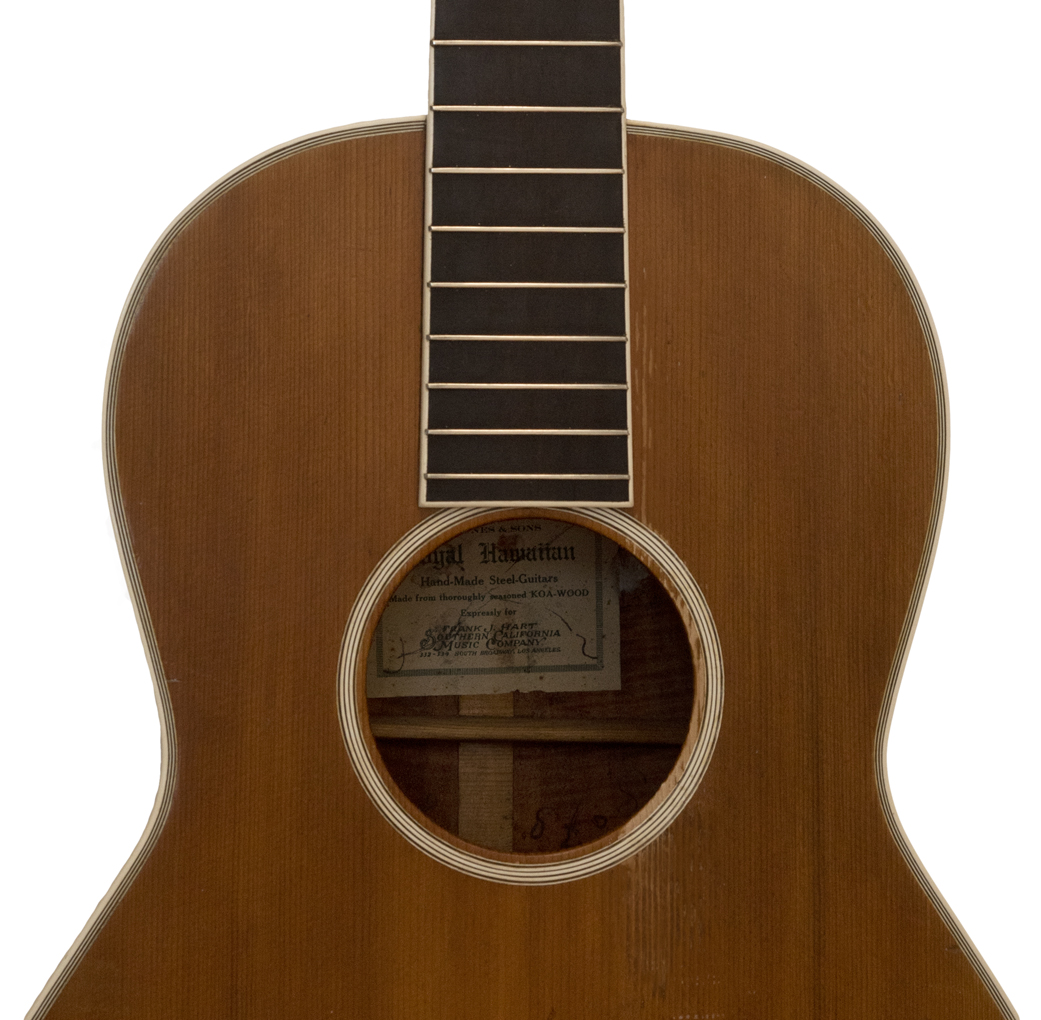
Martin built for Southern California Music Company "Rolando" 1500
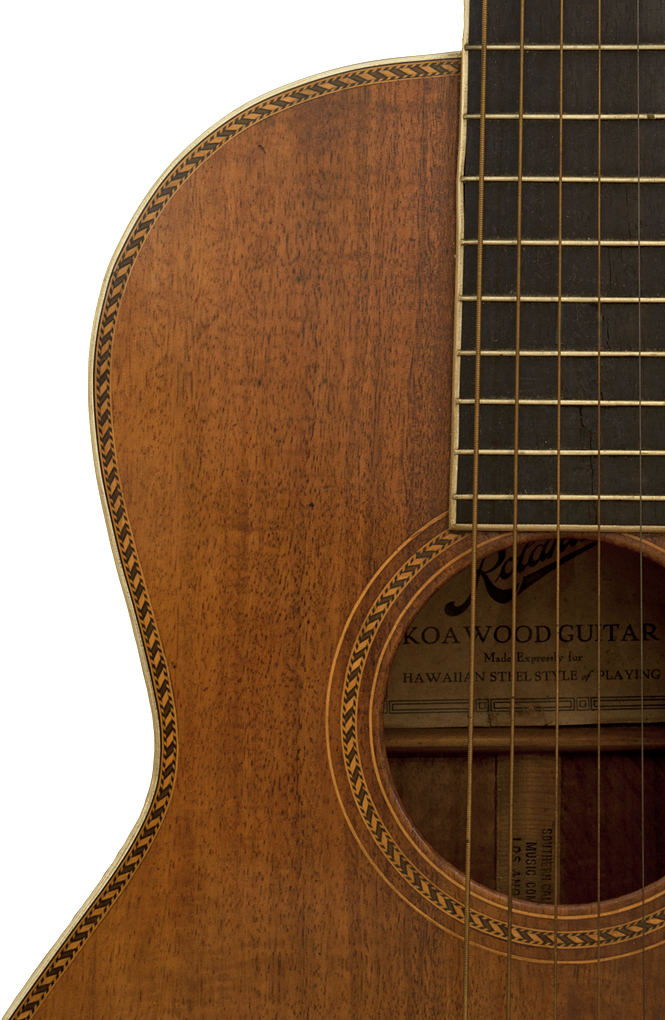
The Martin built for Southern California Music Company Style 1350 had the same simple style single ring rosette as Martins made for the Ditson Company.
Martin built for Southern California Music Company Spruce Top Sample "Nunes" 1350
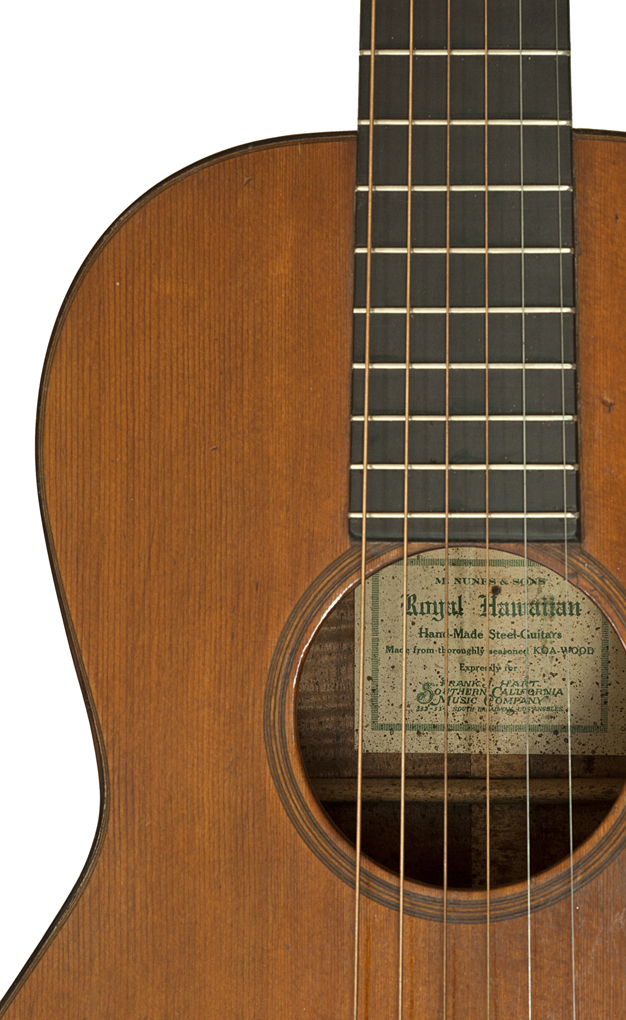
Martin built for Southern California Music Company Early "Rolando" 1350
#95
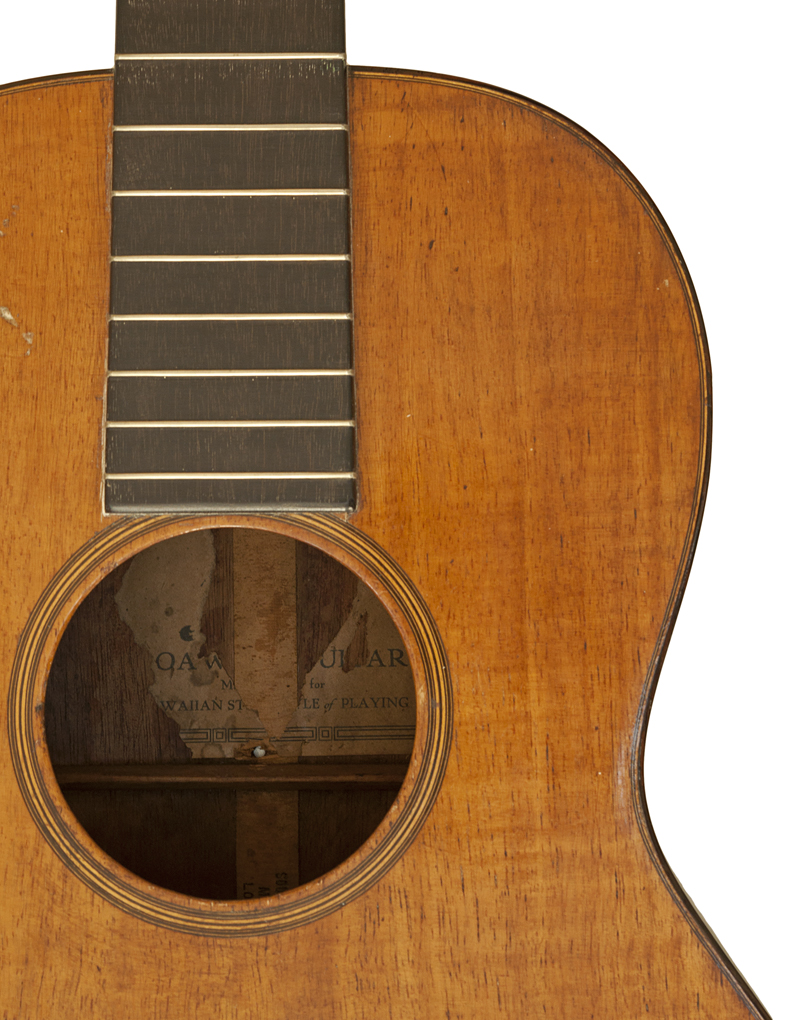
Martin Built for Wurlitzer
Model 2092 / 0-42
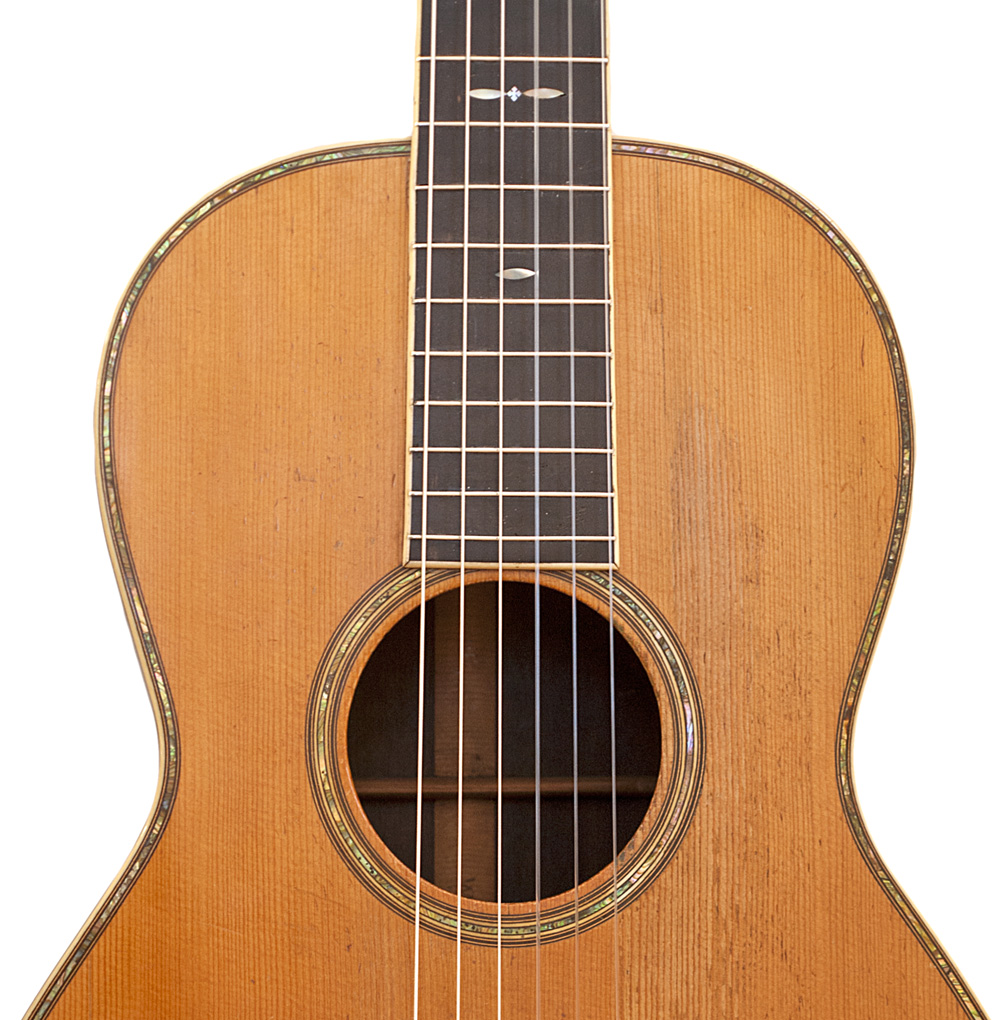
Martin 2087 / 000-18
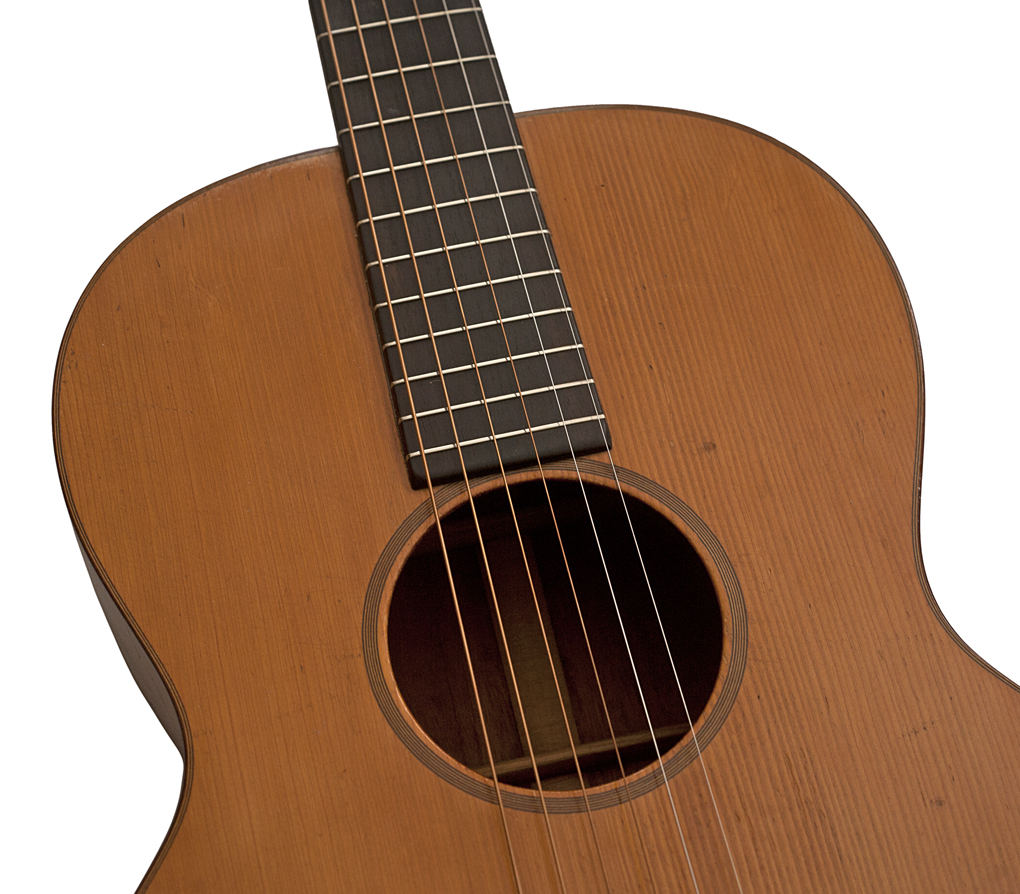
Martin Wurlitzer 2088 / 0-21
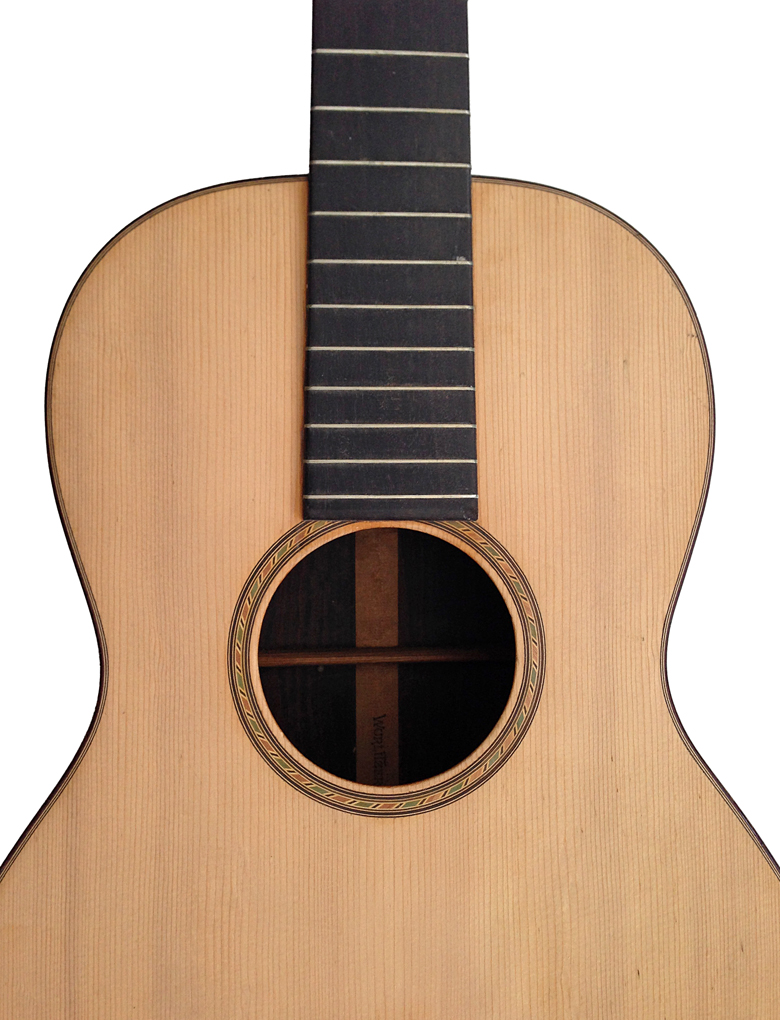
vintagemartin.com
To See Robert Corwin's Classic Photography of Folk and Roots Musicians, visit:
For Information on Photography for
Exhibition, Publication, CD's, Promotion, Web Pages, Tour Books,
to Purchase Photographic Prints, or
If You Have Questions or Suggestions About This Web Site or Vintage Martin Guitars:
e-mail: Robert Corwinentire site copyright ©1998 through 2017 Robert Corwin/Photo-Arts. All rights reserved.